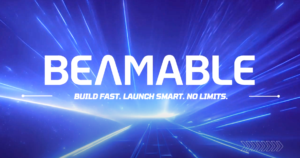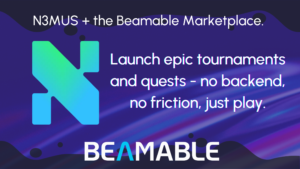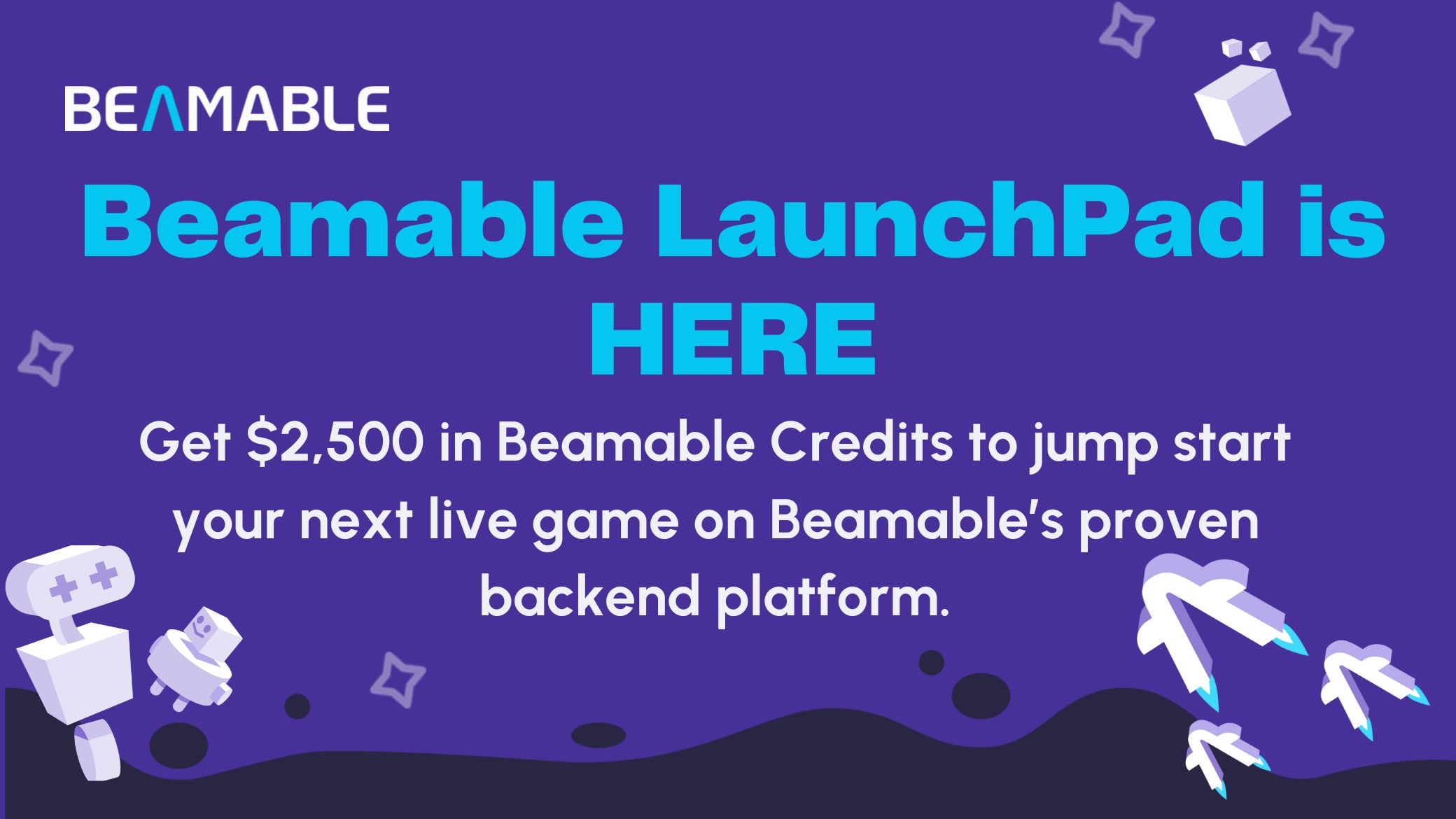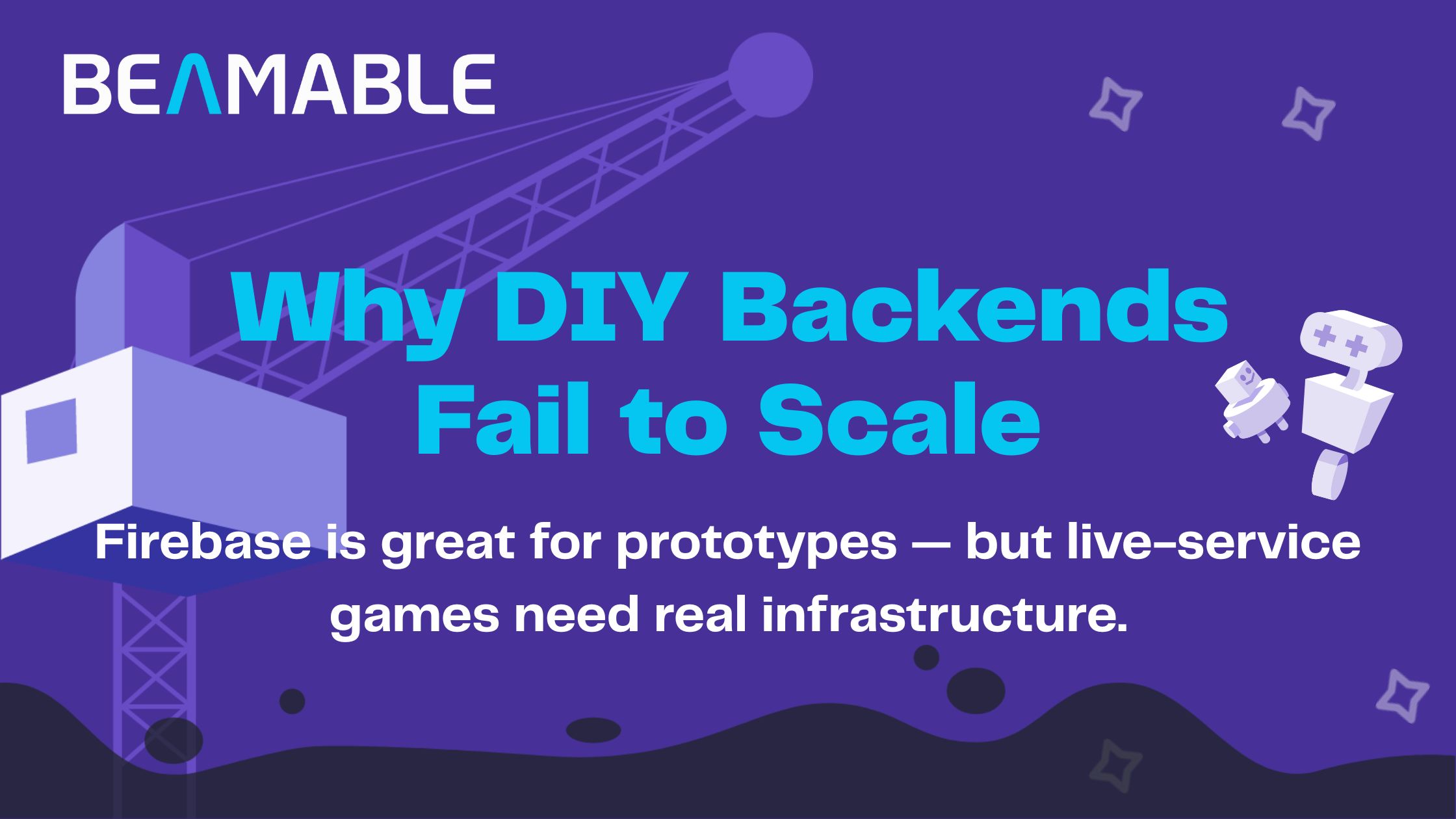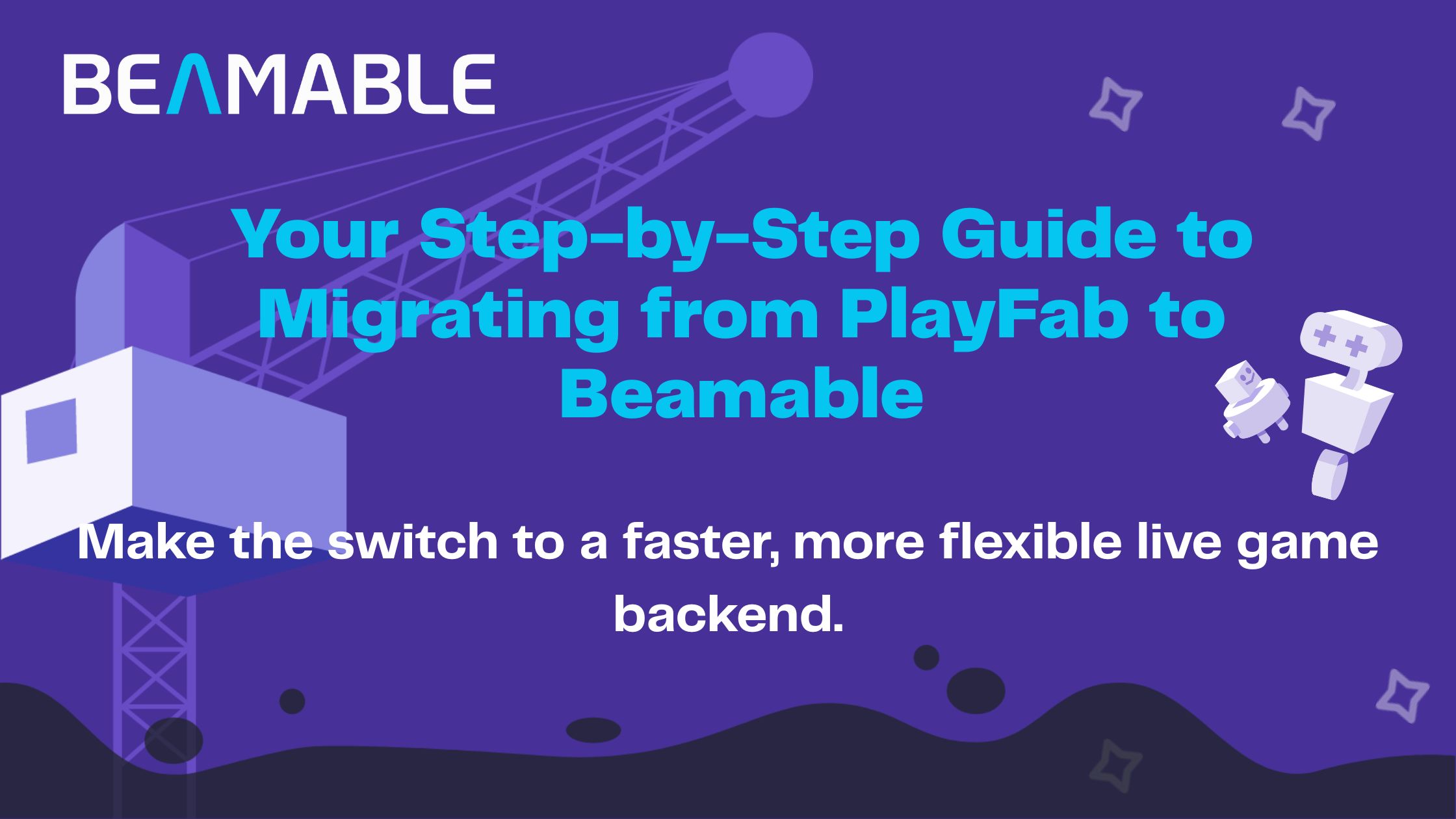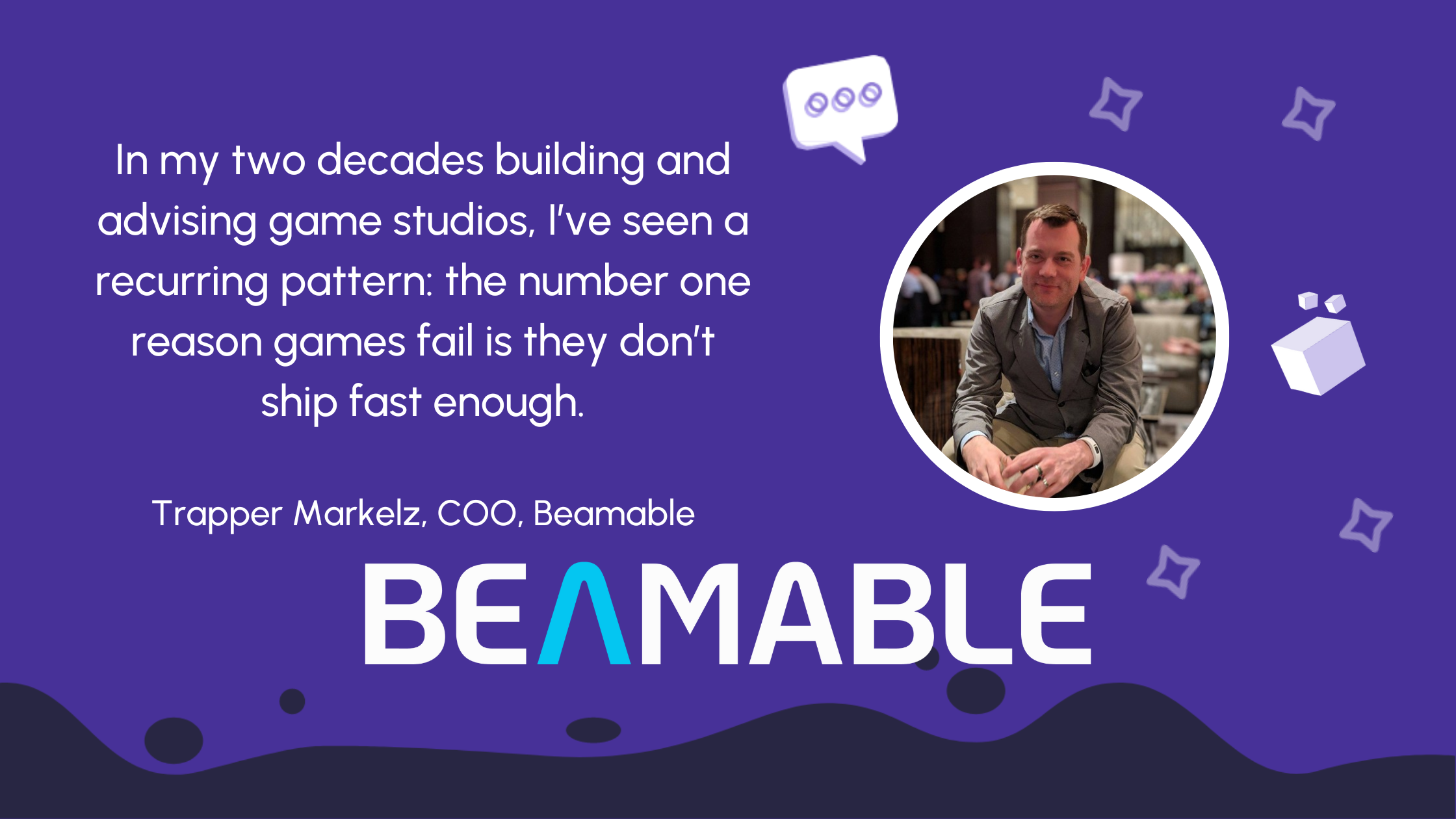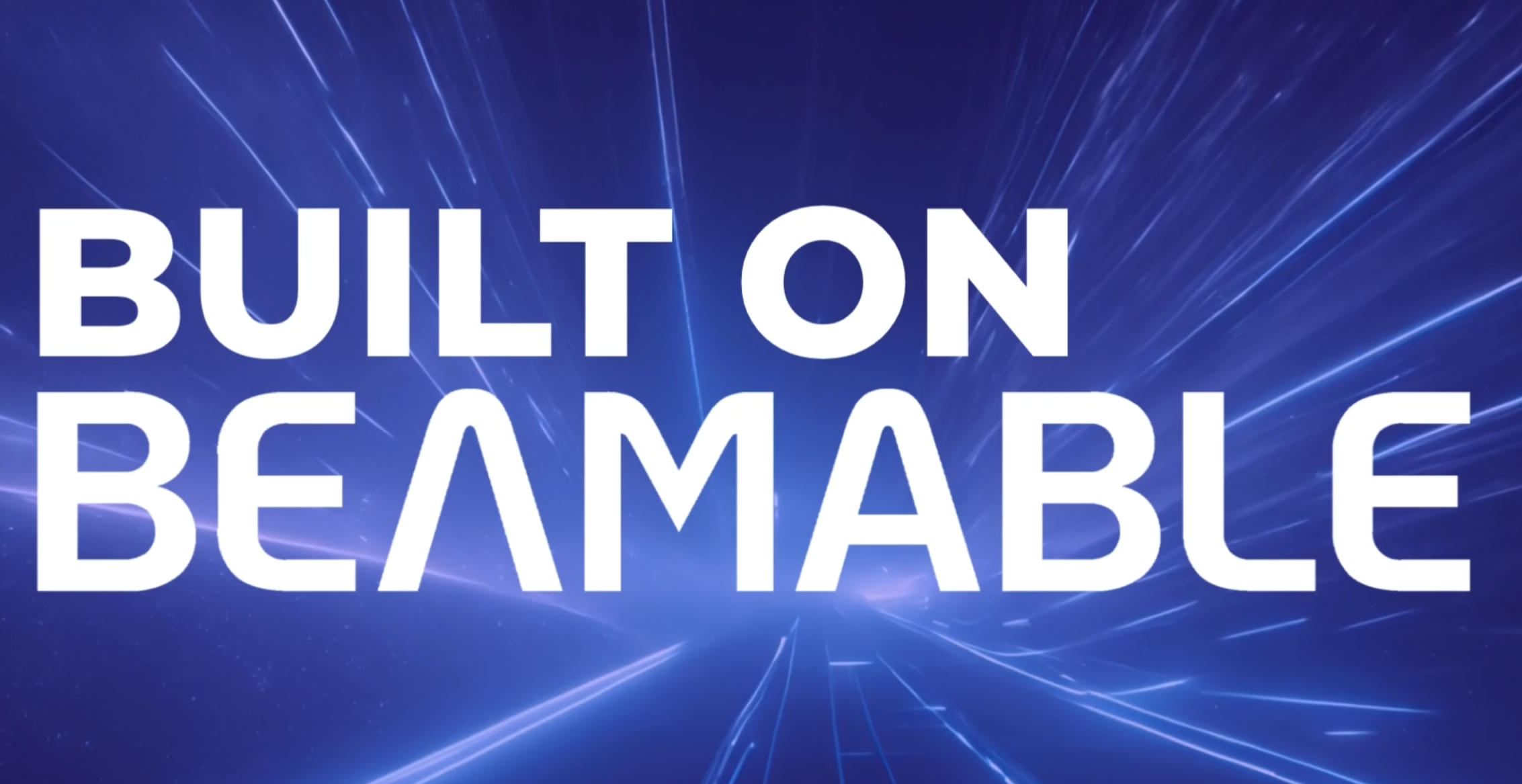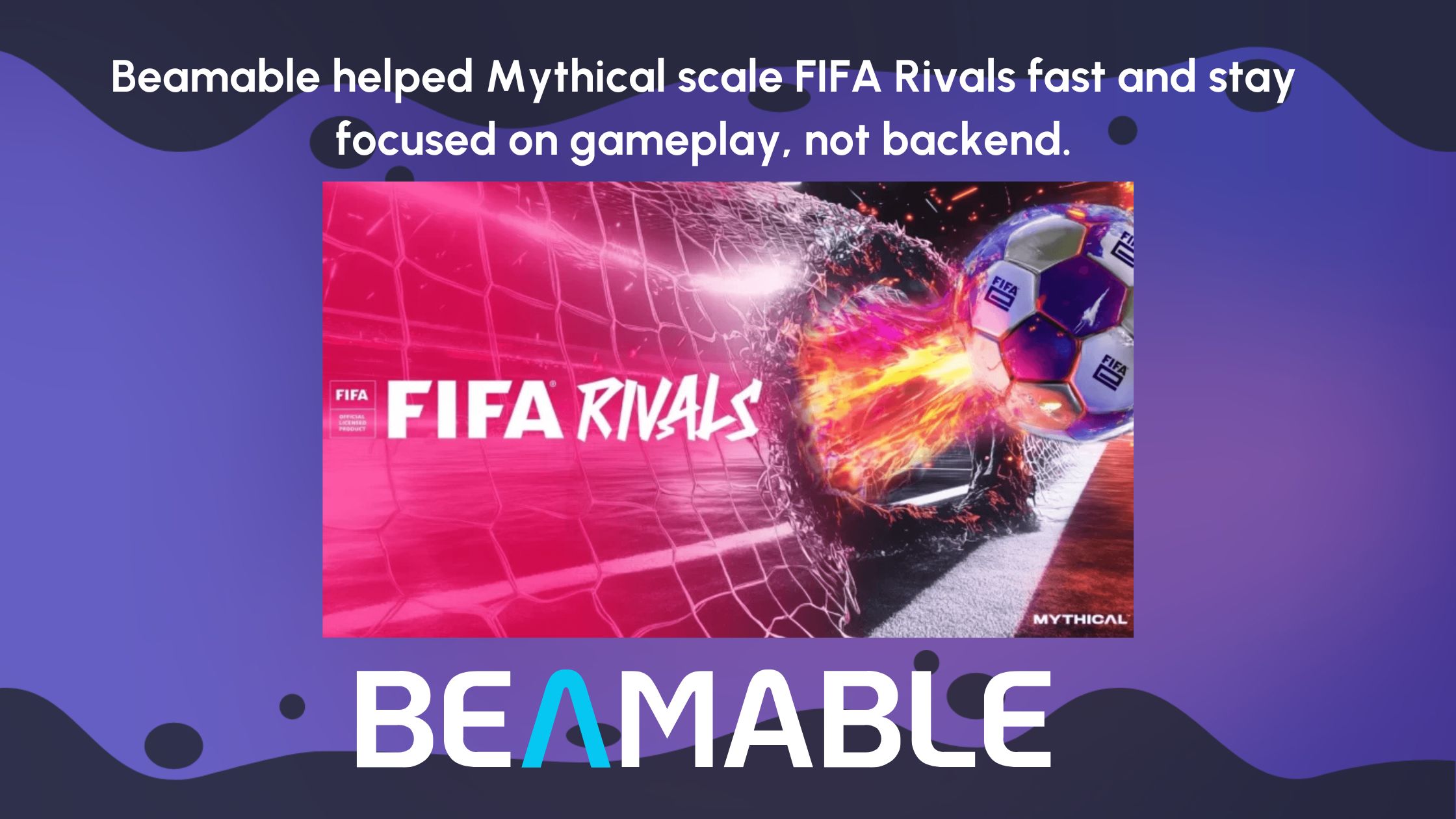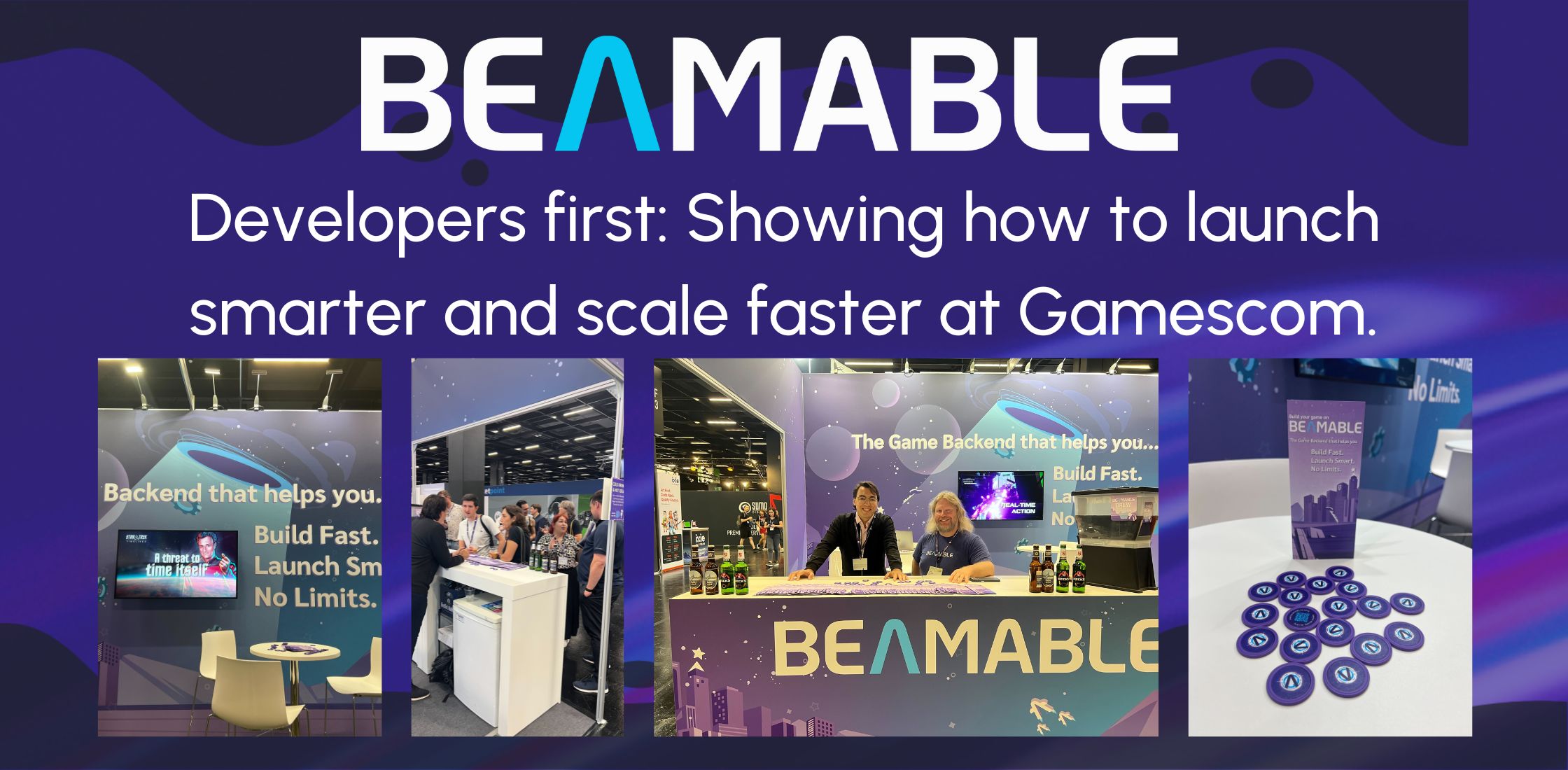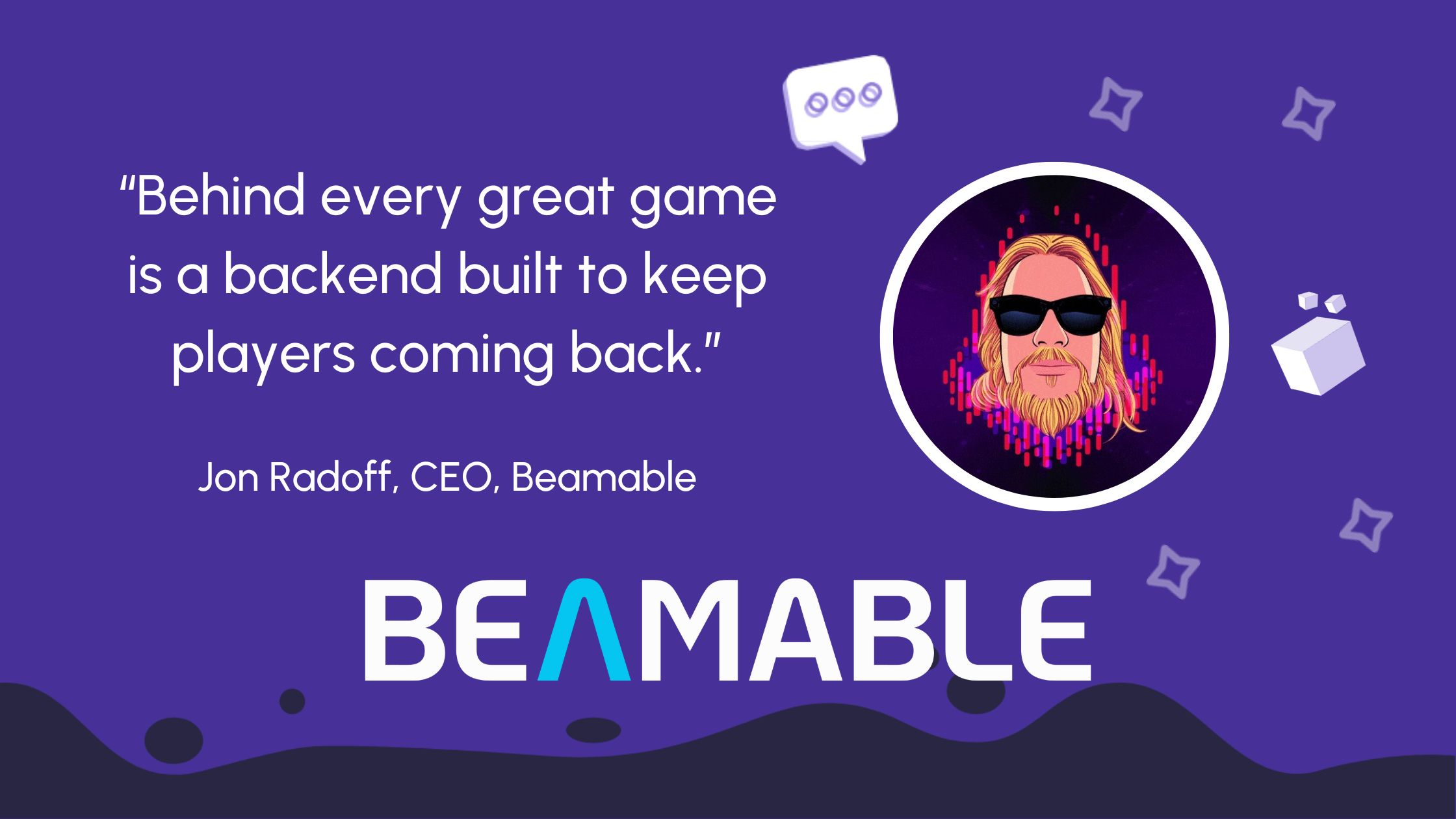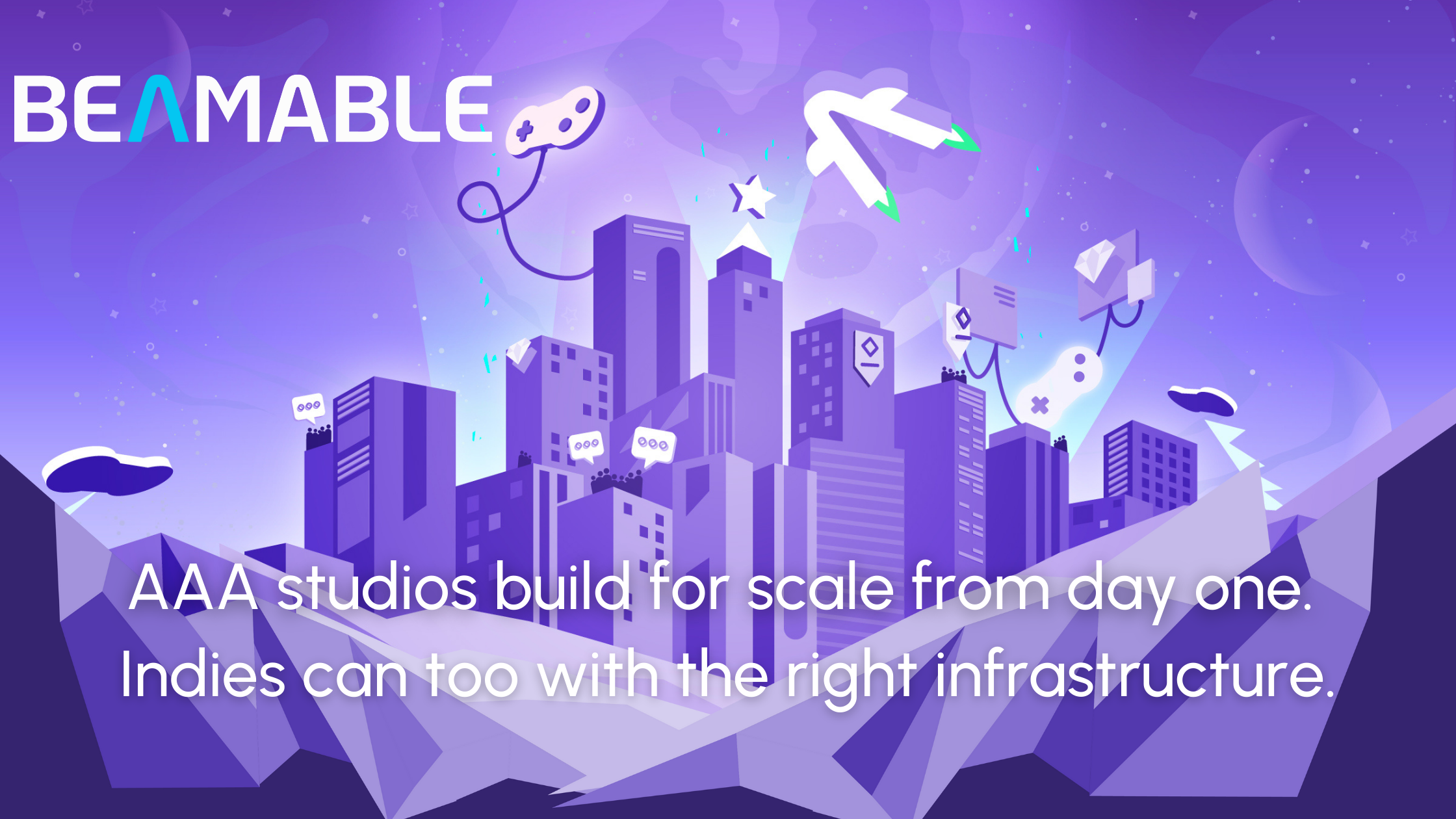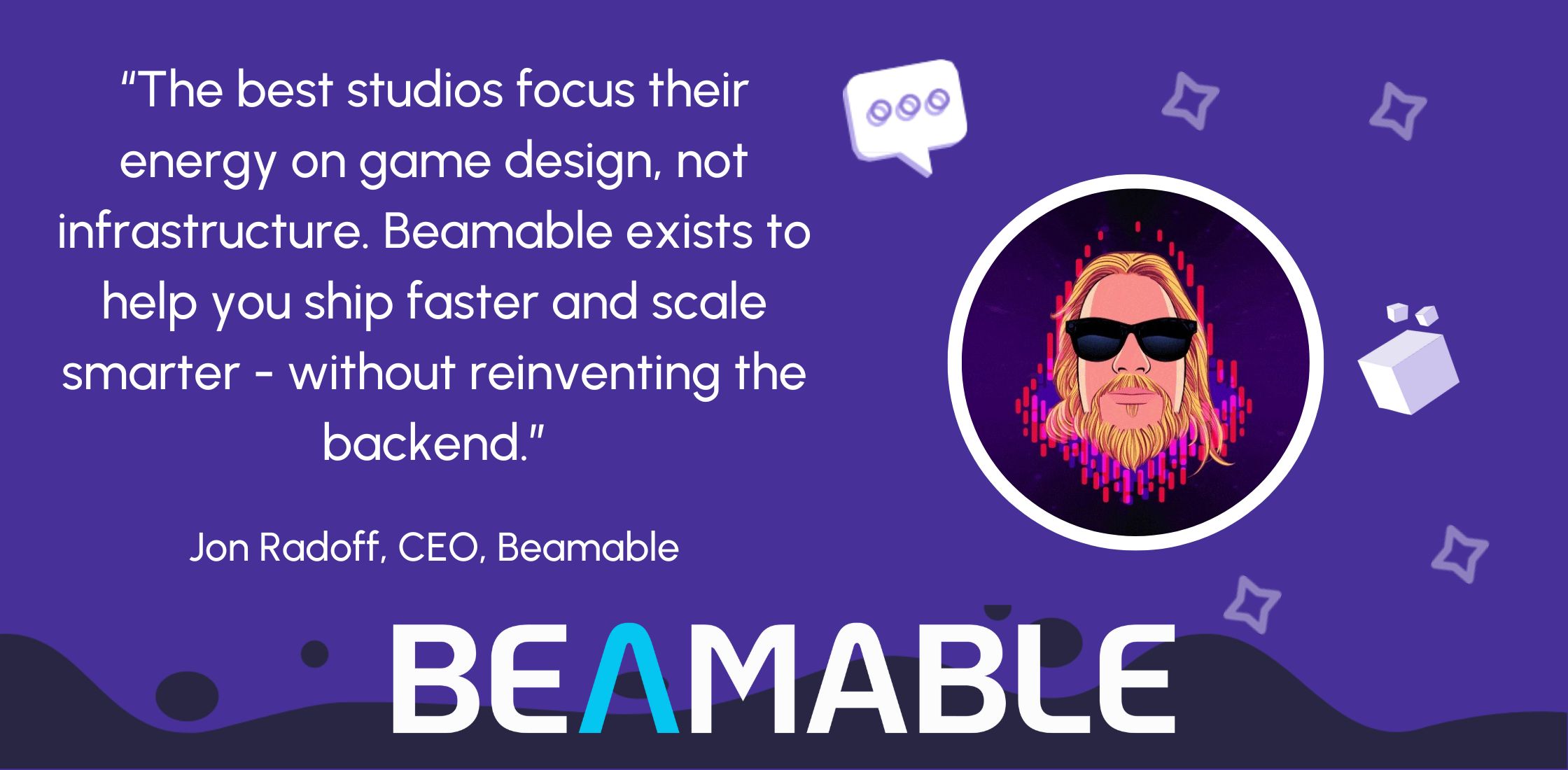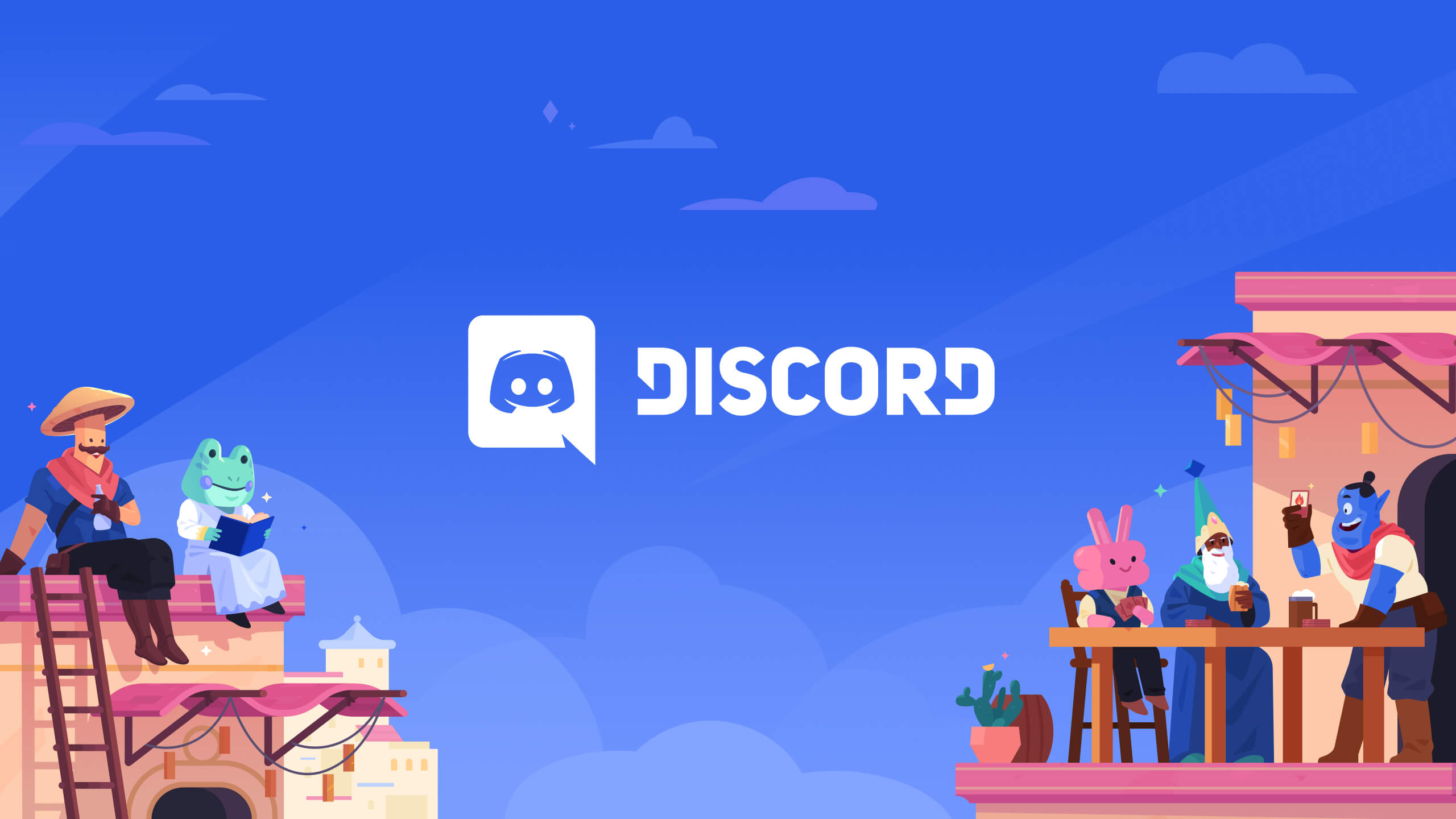Category: Blog

Beamable SDK Review – December 2022
In December, Beamable released SDK versions 1.7.0, 1.8.0, and 1.9.0, and 1.9.1. Here are the highlights from the previous month of releases.
Microservice Performance
Microservices received many performance improvements in December. Previous to Beamable 1.7, Microservices logged all inbound and outbound messages, including the request bodies and headers. The volume of log messages for high-scaled services was degrading performance, so going forward, Microservices no longer emit logs for sending and receiving messages. Additionally, logs do not automatically include the request body or header information. Of course, these can be added manually to logs on a case-by-case basis. Regarding logs, Beamable 1.7 introduced limits on max log size. Nested objects are only destructured to a depth of 3. Only 10 objects will be serialized in a collection. The max character size of a destructure operation is 500. These logging changes reduce the memory footprint of deployed Microservices which allows them to run more efficiently.
In Beamable 1.7, each Microservice instance opens multiple WebSocket connections to Beamable. Maintaining multiple connections allows the service to spread the network load across several Beamable Gateway instances, which improves reliability and performance. It is expected that each WebSocket connection may expire, but with multiple connections available, a single connection loss won’t cause a major service outage.
Due to the logging changes, the multiple connection changes, and a variety of smaller improvements to memory management and garbage collection, the overall performance characteristics of Beamable 1.7 are much better than 1.6.2. We used Locust to simulate a stress test on the two Beamable versions. In the stress test, we experimented to see how many requests a Microservice could handle before it started experiencing 504 HTTP timeout errors.


The key takeaway is that Beamable 1.7 never encountered latency above 2.5 seconds while 1.6.2 had p95 latencies of around 4 seconds and experienced 504 HTTP timeouts due to response times exceeding the 10-second timeout period.
Prefetch Content
In Beamable 1.8, Microservices prefetch all Beamable Content before accepting user traffic. When the service starts up, it will download the entire content manifest. Subsequently, any request to fetch content will be handled by the content cache.
Cancellation Token
Finally, In Beamable 1.9, we introduced a CancellationToken accessible on the Context property in each [ClientCallable] function. Consider the code snippet below,
[ClientCallable]
public void SpinForever()
{
while (true)
{
// do nothing.
}
}
The SpinForever function will never complete due to the non-terminating while loop. This is extremely bad for performance and efficiency, especially in a deployed environment. Every [ClientCallable] function is run in its own Task instance. In dotnet, many Tasks are scheduled per Thread, and then Threads are scheduled by the underlying operating system. If a single Task keeps running, then any other Task scheduled on the same Thread will never get a chance to execute. Essentially, the non-terminating while loop kills an entire Thread instance. This reduces the performance of the service and also causes the CPU to spike to 100%. If you see your deployed service CPU at 100%, you should double-check your code for non-terminating loops or recursion. When the CPU is pinned at 100%, it will cause additional server instances to spawn in the Beamable Cloud. Unfortunately, those new instances will be susceptible to the same underlying issue, and will likely also get pinned at 100% CPU.
In Beamable 1.9, you can change the above code to this snippet. The ThrowIfCancelled function will throw a TaskCancelledException after 20 seconds, and cause the Task to finish. There is also a IsCancelled boolean available on the Context that will return true when the request has timed out.
[ClientCallable]
public void SpinForever()
{
while (true)
{
// do nothing.
Context.ThrowIfCancelled();
}
}
Editor Performance
Beamable 1.8 and 1.9 include several performance improvements for the Unity Editor experience, specifically concerning Content and Microservices. From our internal testing using the Editor Iteration Profiler, we saw a 20% speed improvement for domain reloads in a project with 2.5 thousand content objects, and about a 30% speed improvement in projects using several Microservices.
In both cases, these improvements can be attributed to fewer memory allocations and Reflection operations. Unfortunately, in a few critical places in the Beamable SDK prior to 1.8, System.Linq commands were causing a lot of memory allocation which led to large garbage collection passes. Additionally, we identified several opportunities to cache information instead of recomputing it every domain reload.
Visual Changes
In Beamable 1.7.0, we continued moving the Beamable tool windows to a modern flat User Interface design. The Content Manager and Toolbox have refined interfaces that make it easier to recognize key features.

Additionally, in Beamable 1.8, the default avatars have been replaced with grey-box user icons. If you are upgrading from a previous Beamable version, you will continue to see the old avatars until you delete the Assets/Beamable/Resources/AvatarConfiguration file and it is regenerated.

Local Content Mode
Beamable 1.7 introduced Local Content Mode. From the Project Settings, you can enable Local Content Mode, which changes all content fetching in PlayMode to read content from your local disk instead of downloading it from the Beamable Cloud. This can help speed up your workflow when making subtle content changes to custom content objects.
Change Logs
For a complete list of changes, please review the at https://beamable.github.io/changes

Announcing: Beamable Private Cloud
Since the launch of Beamable, we have had the opportunity to connect with thousands of game developers. Most of you tell us how transformative it is to be able to start building your dream game without getting bogged down in backend coding, standing up new servers, or handcrafting the same live services that thousands of other games already have.
But we have also heard from larger developers that you need more: not only the simplicity that Beamable brings but the ability to operate it on your own infrastructure. You need the ability to customize the entire code stack and run it in an environment that you have total control over.
We are pleased to announce that this is now an option with Beamable!
Beamable Private Cloud allows you to take a fork of the Beamable environment and launch it on your own infrastructure. You get all of the simplicity, workflow advantages, and acceleration that Beamable brings to your game development – with the comfort of operating within your own environment, tweaking things however you need.
Our new offering is geared towards AAA developers and others with large audiences. With that in mind, we are also adding a new option: Beamable Co-development. Sometimes you need the support of highly customized features or integrations. We are here to support you! Currently, this option is only available to Beamable Private Cloud customers.
If you have a game with over 1M MAU – or expect to have that many players – we encourage you to get in touch to explore these options. Here’s how: https://beamable.com/why-beamable/beamable-private-cloud

Beamable receives an Epic MegaGrant to accelerate Unreal SDK development
BEAMABLE BRINGS LIVE SERVICES INTO THE UNREAL ECOSYSTEM WITH HELP FROM EPIC MEGAGRANT
Beamable opens Early Access program for Unreal Live Services SDK
December 8, 2022 (Boston, MA) — Beamable, a platform for adding live services to games, today announced the Early Access program for the Beamable Unreal SDK. This expansion is supported by an Epic MegaGrant from Epic Games.
The vast majority of popular games are built around the games-as-a-service business model. These games need systems for data persistence, custom server code, live content pipelines, identity, social systems, and sophisticated economies. However, these features typically require complicated backend programming and systems integration. Beamable’s mission is to make it easy for developers to focus on the creativity of their games without getting bogged down with the scalability, security, and workflow associated with live services.
“Unreal Engine is at the forefront of gaming and spatial computing,” explained Jon Radoff, CEO of Beamable. “It is the 3D engine used by leading developers who are building immersive, expansive, and visually-stunning games–as well as the emerging applications of the metaverse. Now, Unreal developers may build connected experiences and persistent, virtual worlds more easily than ever before.”
Beamable’s unique advantage is that it makes building games with live services simple and scalable: instead of coding a custom backend and figuring out how to connect all of the pieces, you work inside your 3D engine using drag-and-drop tools. When you need custom server logic, you create composable microservices that extend your 3D engine’s native programming environment. As part of its SDK for Unreal Engine, Beamable’s roadmap includes Blueprints support, as well as integrations for the Epic Games Store and Epic Online Services (EOS).
To join the early access program for the Beamable Unreal SDK, visit https://beamable.com/unreal.
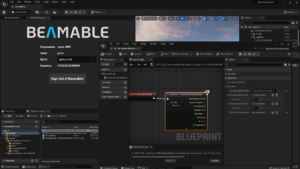
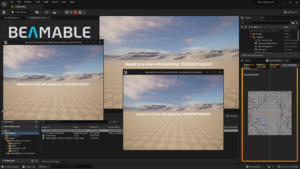
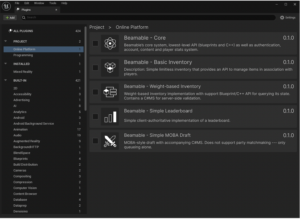
About Beamable
Beamable provides a Software-as-a-Service platform for the operations of live games. Led by a team of game-industry and Software-as-a-Service veterans, Beamable is based in the Boston area and backed by investors including Permit Ventures, Companyon Ventures, GrandBanks Capital and Defy.vc. For more information, visit beamable.com.

Beamable SDK Review – November 2022
In November, Beamable released SDK versions 1.6.0, 1.6.1, and 1.6.2. Here are the highlights from the previous month of releases.
Fresh Microservice Manager
The Microservice Manager received a major upgrade in Beamable SDK 1.6.0. The goal was to reduce the complexity of the user experience by removing duplicated information and ambiguous components. The changes include:
- The local status icon that had been in the upper-right corner of each service card has been removed. The local status is indicated by the Play button of each service card.
- The remote status icon has been moved to the upper-left corner of each service card, and is integrated into the service type icon.
- There are new quick access buttons for Local Documentation and opening the C# code in the upper-right of the service cards.
- The checkboxes in each service card have been removed. The play button at the top of the window now spawns a dropdown with a multiselection for which services to run.
- Finally, the log view will automatically truncate and paginate logs above 5000 characters. A new button at the bottom-right of each service card allows you to copy the selected log to the clipboard.
These updates to the Microservice Manager are intended to streamline the user experience and reduce the onscreen complexity.
Bug Fixes
Beamable 1.6.0, 1.6.1, and 1.6.2 also included bug fixes.
- The Microservice publish window had some strange edge cases regarding multiple instances of the window.
- Additionally, the Party SDK events no longer trigger more than once if a player exits and rejoins a party.
- There was an ordering bug with the Observable SDK that caused the OnElementsAdded event to trigger before the elements were available in the observed list.
- Now, when the OnElementsAdded event is triggered, it contains the newly added elements as a parameter, and the underlying list has the new elements.
Video Demo
Check out this YouTube overview of all these changes and fixes:
Change Logs
Our changelogs can be found at
https://github.com/beamable/Changelogs/blob/production/com-beamable-changelog.md

Beamable SDK Review – October 2022
In October, Beamable released SDK versions 1.4.0 through 1.5.2. Watch this overview with Beamable engineer Chris Hanna for a tour of features, or check out this quick blog post of notable enhancements.
Microservice Stability
We’ve spent a lot of time focusing on Microservice stability over the past month. Several bugs have been addressed, including Microservices being stopped when entering Play mode, errors during Microservice building, DockerNotInstalled exceptions, and various UI glitches. The publish flow for Microservices has also been improved and the TaskCancelled exception and curlError issues have been resolved.
Party SDK
In Beamable 1.4.0, we released the Party SDK. The Party SDK allows players to invite their friends to groups before entering a Lobby or Matchmaking. Each Party has a leader, and when the leader is placed into a match, the rest of the party will be as well. The party leader can promote or remove other members of the party. The Party SDK is built with Beamable’s observable SDK pattern to make it ergonomic and easy to work with.
Unity Asset Store
Beamable is now available to download from the Unity Asset Store. Previously, Beamable could only be downloaded from the Unity Package Manager. You can download and import Beamable into your projects from the Unity Asset Store, without the hassle of needing the old Beamable package installer. Beamable distributions will continue on Unity Package Manager and are still the place to get access to the latest builds and preview releases before they become available on the Asset Store.
Auto-Generated SDK
The SDK includes an advanced way to communicate with the Beamable servers. The Beamable APIs are documented with the standard Open API specification. The Open API specifications are used to automatically generate C# client code that can be used alongside the regular Beamable SDK. Of course, we recommend that you use the Player-Centric SDK whenever possible, but there may be highly customized scenarios beyond what is already covered by the Player-Centric SDK. In those cases, the auto-generated SDK provides a bare-bones way to communicate with Beamable without introducing any abstractions.
SDK Enhancements
Between Beamable 1.4.0 and 1.5.0, there have been many usability improvements to the SDK. The Search Stats method accepts more types for query parameters, such as long, to enable searching for stats with the greater-than or less-than operators. The SimNetworkEventStream can be augmented with a custom fault tolerance algorithm. Custom Content C# classes now support nullable primitive types. MailUpdate and MailSend objects support expiration dates. Check out the changelogs below for a full list of improvements!
Change Logs
Our changelogs can be found at
https://github.com/beamable/Changelogs/blob/production/com-beamable-changelog.md
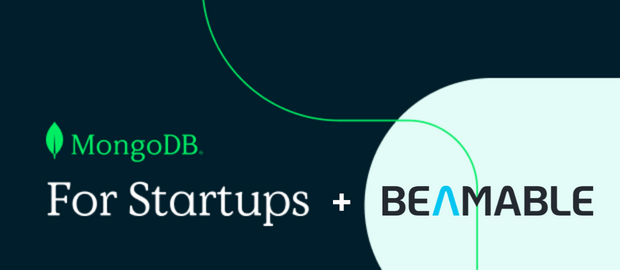
Beamable Joins MongoDB for Startups Program
October 19, 2022 – Boston, MA – Today Beamable is announcing acceptance into the MongoDB for Startups program which targets early-stage, high-growth startups with additional support, co-marketing, and industry connections. MongoDB is at the center of Beamable’s live services platform. Beamable makes heavy use of Mongo Atlas inside of its base services, as well as offers up direct access to native mongo instances with the Beamable persistent microstorage option.
Beamable C# MicroStorage is a tool that enables developers to create, deploy, and manage serverless MongoDB databases all from within Unity. Game teams get full access to a database through Beamable C# Microservices, or through any third-party database tools you prefer. We’ve pre-packaged data snapshot and restoration tools, as well as a data explorer so game devs can visualize, edit, and monitor their data. Beamable also provides a raw connection string to the database so developers can use the workflow and tools that work best for them.
With C# MicroStorage powered by MongoDB, game teams can leverage geospatial queries, time-series data, multiple indexing, and take advantage of the ease of NoSQL document storage techniques to build their games. That could include implementing user-generated content systems (UGC), or any other custom mechanic that requires persistent data.
Beamable is dedicated to delivering the best of MongoDB, without any of the hassles. When a game scales up to support millions of players, Beamable’s MicroStorage will scale with it. Now, as a member of the MongoDB for Startups program, MongoDB will be there to directly assist along the way.
For more information about Beamable’s MicroStorage option, view the documentation.

Beamable joins Unity Verified Solutions Program
Boston, October 11, 2022 – Beamable, a fully managed LiveOps game server platform, announced today that it has joined Unity’s Verified Solutions program and that the Beamable Live Game SDK is now available in the Unity Asset Store. As a Verified Solution, the Beamable Live Game SDK has passed rigorous quality assurance testing by Unity to ensure it is optimized for the Unity editor and enables a seamless workflow for Unity developers to rapidly add game server features like social, commerce, content management, multiplayer, and LiveOps orchestration to any Unity game project.
Jon Radoff, CEO of Beamable notes, “It is exciting to be approved for this program by Unity as the first verified LiveOps platform in the Unity Asset Store. Our mission is to make it easy for game developers to build live games and becoming a Verified Solution means developers can build game servers faster than ever in C# right inside of Unity. ”
Once installed in a Unity project, the Beamable Live Game SDK comes with an integrated web portal for game, content, and commerce management, custom microservices you can author in C# to power fully managed and scalable game server features, and a range of managed services to rapidly implement stores, inventory, leaderboards, live events, groups, chat, friends, tournaments, and more.
“Our goal is to eliminate the friction between game client and game server development,” explained Beamable CTO Ali El Rhermoul. “Instead of having to add different paradigms, cloud code languages, and infrastructure on top of your Unity development, with Beamable you can do everything in one language with one developer workflow. All of your game code, client and server, lives together in one repo with integrated DevOps, build process, and content promotion.”
Download the Beamable Live Game SDK from the Unity Asset Store today to gain access to a LiveOps portal and C# microservices that let you create completely customized backend code that is automatically scalable and fits into your native development processes in Unity.
UPDATE May 2023: Beamable removed its SDK from the Asset Store due to the cost of maintaining a listing. Beamable can be downloaded directly by registering on this website.
About Beamable
Beamable fights for the game makers of the world by enabling them to build faster and operate worry-free. The company’s full-stack LiveOps platform for live games is tightly integrated with the Unity 3D engine, enabling game developers to focus on the creativity and differentiation of their products. Beamable is based in the Boston area and led by a team of game-industry and software-as-a-service veterans and backed by investors including Companyon Ventures and GrandBanks Capital.

Beamable Expands into Web3 Live Services for Games
Beamable adds funding that expands Web3 live services and receives investment from Solana Foundation
October 04, 2022 (Boston, MA) —
As of October 2022, over 4,000 unique game projects have started on the Beamable platform. The type of games spans every category of online game experience: mobile games, PC games, virtual reality (VR), and consoles. One of the largest segments of growth has been web3 games: projects that use blockchain for building open economies. Today, Beamable announces its roadmap for web3, as well as an investment from Solana Foundation to support this expansion.
“The big shift in 2022 is that web3 game projects have moved beyond proofs-of-concept,” said Jon Radoff, CEO of Beamable. “Games we’re seeing today have longer development horizons, more experienced game design teams, and a focus on the inherent fun of the experience. These games use next-generation blockchain technology that is scalable, fast, and ecologically responsible.”
Games building on Beamable have used several layer-1 blockchains. These technologies use proof-of-stake algorithms which are energy efficient, fast, and highly scalable. Games built on these blockchains offer access to marketplaces, decentralized trading platforms, and other composable technologies that enable game developers to build games that leverage a vast community of interoperable software.
As part of the expansion into Web3, Solana Foundation has made an investment in Beamable. Recently, at Korea Blockchain Week, Beamable was included as a key element of the Solana GameKit technology stack–intended to accelerate the development of blockchain games built on Solana.
Beamable’s unique advantage is that it makes building games built on live services easy and scalable: instead of coding a custom backend and figuring out how to connect all of the pieces, you build games using Unity–the most widely-used game engine–and use drag-and-drop interfaces to configure your economy, social systems. Similarly, server logic can be created using highly composable C# microservices. Beamable’s vision for Web3 is to make building a game for blockchain as simple as clicking your preferred layer-1 provider, bridging the world of blockchain with the high performance and familiarity of a game server.
To learn more about Beamable’s Web3 technology, visit https://beamable.com/why-beamable/web3-integration. Learn about the company’s vision for live games at https://beamable.com/about
About Beamable
Beamable provides a Software-as-a-Service platform for the business operations of live games. The platform is tightly integrated with the Unity 3D engine, enabling game developers to focus on the creativity and differentiation of their products. Led by a team of game-industry and Software-as-a-Service veterans, Beamable is based in the Boston area, and backed by investors including Permit Ventures, Companyon Ventures, GrandBanks Capital and Defy.vc. For more information, visit beamable.com.

Beamable Pricing Overview
Why does Beamable price the way that it does? Here is a detailed overview of the goals and details of our subscription and enterprise pricing models.
Pricing Goals
Our pricing is the result of the requirements placed on Beamable to provide business-critical infrastructure. To be successful, we need to succeed at the following:
- Make the problems of game server patchwork, integration, and DevOps go away.
- Allow teams to orchestrate, operate, and drive the success of their games with advanced LiveOps tools.
- Deliver high performance and low latency at any level of game scale.
- Seamlessly accommodate 3x-10x traffic surges to a game based on marketing, UA, and re-engagement campaigns.
- Provide bulletproof security in different client, server, and hybrid/3rd-party architectures.
- Achieve a minimum of 99.9% uptime at the Enterprise level.
- Provide new and enhanced features that keep pace with the rate of game tech innovation and player expectations.
Pricing Summary
At a high level, here is how our pricing works:
- Beamable charges $10 per 1M API calls with no-commitment On-Demand pricing.
- Above the free tier, you agree to a monthly subscription to unlock developer seats, # of allowed microservices, access to custom reporting, and increasing levels of support.
- Monthly subscriptions are month-to-month and can be canceled or downgraded with a 30-day notice.
- If you go above a tier’s included API calls, dev seats, or microservices, you automatically move up to the next tier. You will be notified in advance and have 3 days to reduce usage back to a lower tier level.
- For larger games, you can agree to Reserve Pricing on a 12-month contract with additional Enterprise benefits.
$10 per 1M API calls
This is an all-inclusive price. Beamable does not charge for storage or bandwidth. We do not charge separately for cloud code, LiveOps tools, or DevOps tools. This gives you, the game developer, unprecedented control over your costs by making efficient use of the Beamable APIs and any requests you make over the gateway.
A Monthly Subscription
You can start a free trial of Beamable. As you scale up your project, team, and usage with additional developer seats, realms, or custom C# Microservices, you’ll be required to tier up your subscription. The higher tiers also come with more support for your implementation. You can see the breakdown of these tiers on the pricing page.
| Free | Indie* | Dev | Studio | Reporting | Pro | Pro Plus | |
| Subscription | $0 | $30 | $100 | $200 | $300 | $600 | $1,000 |
| Dev Seats | 1 | 3 | 3 | 10 | 10 | 20 | 30 |
| Included API Calls | 100k | 3M | 10M | 20M | 30M | 60M | 100M |
| API Overage | N/A | $10 per 1M | $10 per 1M | $10 per 1M | $10 per 1M | $10 per 1M | $10 per 1M |
| Microservices++ | 3 | 3 | 3 | 9 | 9 | 18 | 27 |
| Addl Microservice | n/a | $30 | $20 | $20 | $20 | $20 | $20 |
| Athena Access | No | No | No | No | Yes | Yes | Yes |
| Support | Discord | Discord | Private Chat | Private Chat |
Subscriptions are billed for all games and realms at the customer (CID) level.
* Indie tier only available to independent/international game teams with no revenue or funding.
++ Microservices are counted per service per realm. One microservice across three realms (dev, staging, and production) counts as three services.
Enterprise Pricing
If you have a larger game project with >200M API calls, it makes sense to contact us about Reserved Pricing that has a few advantages:
- Pre-buy 12 months of API calls with a monthly commitment.
- Any API calls not used in that month do roll over to the next month to offset future overages.
- Any API calls not used in 12 months do not roll at contract renewal.
- Customers can increase the monthly commitment at any time in the contract term to achieve more savings.
Contact us to discuss your Enterprise Pricing needs
Summary
- Beamable is free to develop for a single developer with less than 100k API calls per month and up to 3 microservices.
- Additional Dev seats, Microservices, and API calls are available at Dev ($100 a month) or higher tiers.
- Additional Microservices at any tier can be purchased incrementally for $20 each.
- Custom reporting access is available at the Reporting tier ($300 a month) or higher.
- Private chat and additional support are available for $600+ subscription plans.
- Additional monthly API usage is billed at $10 per 1M API calls.
- Reserve pricing, API call rollover, and additional discounts are available for games making more than 200M API calls per month.
- Enterprise support (with regular meetings and an SLA) is included with all Reserve Pricing plans.

New Beamable LiveOps Portal Release – September 8, 2022
Beamable has released an update to our LiveOps Portal.
- Trials: It is now more visually obvious how to add “OR” and “AND” conditionals
- Message Campaign table row shows “English (Default)” badge alongside the other languages
- Content Rollback is now possible via the Portal
- Messaging editor supports adding a picture via paste command
- Write access and visibility parameters added to player search by stat.
- You can now Edit User Permissions of newly added users
- Message Campaigns: Fixed how Button Editing Tooltip disappears too quickly
- Join Now link on invites for new game developers/admins added to an account is now fixed
- Punctuation in studio names is now blocked during registration form validation
Sign up for Beamable today and give it a try!

How to Launch Games Faster with Beamable
The real challenge in game development isn’t building the game—it’s building the game efficiently.
Building efficiently means getting your game out into the world faster so you can generate revenue from your players and sustain the game and player experience for years to come.
The time it takes to develop a game ranges tremendously—anywhere from a few months for a simple game to five years for a more complex one. (Although, if you’re really good, you might be able to build a game in 15 minutes). But besides complexity and budget, what’s the biggest time factor?
How you build and launch it.
You could create everything from scratch—from the game engine and server infrastructure to the data design and content pipelines. But a better option is to streamline the process by taking advantage of a game development system that takes care of the development infrastructure for you.
Read on for three ways you can save time and get to profitability faster by launching your next game with Beamable.
1. Use Unity Frameworks and Prefabs
You want to spend as much time as possible on your core game loop and differentiating factors like story, character, world-building, and compelling gameplay mechanics. But the more time you spend worrying about DevOps, system integration, and server build-outs, the less time you’ll have to focus on your actual game.
Use a pre-developed architecture to avoid reinventing the wheel. Game development platforms like Beamable let you enjoy robust game server architecture without having to develop it from scratch. It saves you time on backend programming, server scaling, and live operations.
Drag-and-drop prefabs also save you time coding. Rather than building game elements from scratch, you can simply customize a template. For example, game economy prefabs, like inventory, stores, and virtual currency, allow you to quickly build a functional game economy for your users. These aren’t just easy to duplicate since they also make it easier to edit without causing a cascading effect throughout your game code, saving time on testing.
Create social systems that drive engagement and player retention to drive early growth and initial profitability. For example, in early versions of the game, enable groups or guilds, leaderboards, tournaments, in-game messaging, and time-limited events that build compelling engagement loops. The higher your retention, the faster the game will be financially sustainable.
2. Host and Update Games Live
Launching your game is just the beginning. After that, there are constant updates, optimizations, and adjustments you’ll need to make to stay relevant and increase engagement.
Live operations (LiveOps) are changes you can make to your game without having to release a new version. They can include changes to gameplay, design, or characters. By doing live updates, you don’t waste time taking your game offline to update it. LiveOps also lets you ship faster because you’ll know that you can make further changes and modifications as you go.
Save to the cloud. Cloud save automatically syncs player data to the cloud, so you don’t have to worry about servers crashing or losing data if a player’s wifi drops. It’s efficient because it helps keep data in sync even if there are server or player internet connection issues.
3. Learn About and Delight Players
There’s more to a game’s success than the game itself. There are analytics, sales, and customer feedback. Building your game efficiently means ensuring these are in place from day one so you can make informed product decisions and optimize revenue.
Implement analytics. Player usage data helps drive business insights and improve your game, which can save you time. Analytics equips you to make the right product decisions so you don’t waste time building the wrong features.
The fastest way to access this data is with the pre-built tools offered by a game development platform—things like frictionless player authentication and instrumentation. With one line of Beamable’s code, you’ll know everything your players are doing in the game—their sessions, spending, and usage statistics.
Include the commerce features that drive conversion and revenue. You might want to offer the basic in-app stores and player offers, but you can take your revenue to the next level by also providing segmented offers, timed offers, and a range of localized and customized A/B testing and trials. Including these from the beginning reduces your time to profitability.
All of these features come out of the box with Beamable. Our system comes stocked with full web-based tools to manage in-app sales, host a calendar of events, create engaged communities around your game, and perform critical player support.
Drive Success with Efficient Development
The best games take time to develop—there’s no way around that. But there are ways to work smarter and faster. You get to choose: do you build the in-game chat functionality yourself? Or do you simply use a template and customize the look and feel?
Beamable can help you launch a compelling and revenue-generating game by giving you access to a rapid workflow. It offers a Unity framework with pre-designed game modules to save time during development and gives you LiveOps tools to quickly update games and keep users engaged. You’ll also get the business intelligence tools you need to optimize your game to consistently delight players.
The efficiency pays off. Game studios using Beamable have reduced their required team by up to 5 people just through DevOps and LiveOps tool efficiency. Plus, a Beamable implementation can be fast—it can take only 2-3 months to create your entire game server backend.
Sign up for Beamable today to build better games faster.

Tiny Digital Factory Turns to Beamable for GameSparks Migration and New Titles
Since 2015, Tiny Digital Factory (TDF) has been an independent developer and publisher specializing in the exciting world of mobile motorsports gaming. By 2017, the experienced team of over 30 game developers looked to Amazon GameSparks to provide critical backend game server infrastructure for free-to-play mobile titles. When TDF was told that GameSparks was going away, they had to rapidly find a new game backend partner. Read on to learn how they chose Beamable.
Challenge

In August of 2021, Amazon announced it was sunsetting GameSparks which sent Tiny Digital Factory on a search for a new game backend-as-a-service (BaaS) partner. The team at TDF was already considering making a backend game server move and the need to migrate off by September of 2022 was the motivation to rapidly and methodically search the market for a new solution for GT Manager and other new projects.
Tiny Digital Factory faced three main challenges when evaluating backend game solutions:
- Multiple programming languages – Most game server technologies require you to write your game client code in one language and your game server in another. In the case of TDF, their games are built in Unity using C# and they often have to switch to a cloud code script like Javascript in order to implement game server features. Writing Javascript is not difficult, but without specialized developers, it is hard to optimize.
- Performance – Due to the lack of specialization in multiple languages, managing game performance as the number of players increases is a challenge. You can write functional code in a scripting language like Javascript, but as the number of calls by active players increased, scalability became a real challenge. The new solution would need to scale much more predictably.
- Timeline – With GameSparks scheduled for sunset in less than 12 months, whatever solution was chosen for migration would need to be rapidly implemented. There had to be solid support and clear parity across critical game features.
Solution

Tiny Digital Factory found out about Beamable from the GameSparks Migration documentation. There were a number of very clear examples of how Beamable features lined up with GameSparks features which made it easy to understand how the migration would take place. It was also important that whatever game backend TDF moved to next, it should have deep Unity integration and leverage C# as the primary cloud code language.
Beamable checked both boxes.
Of particular value was Beamable’s C#Microservices with MicroStorage feature. Being able to write C# side-by-side on the client and server, have everything live in the same Github repository, and use the same systems for pull requests and developer workflow was judged very unique and desirable by the TDF team.
Finally, Beamable’s PRO Support plan checked all the boxes to ensure that the Tiny Digital Factory team had everything they needed for their migration.
“Every developer working with Beamable is in slack. The fact that we can get a simple answer most of the time and a deeper one in a few hours is really great.”
Results
Tiny Digital Factory successfully migrated GT Manager within five months and has proceeded to build new projects on Beamable.
“Working directly in Beamable, it has gone faster than expected. Building, deploying, testing is really fast!”
One of the biggest surprises working with Beamable has been the speed of new developer onboarding. Since everything is in C#, Tiny Digital Factory can bring on a new Unity engineer, get them set up with their environment, and in one day that developer can create a C# Microservice, make material changes, and start checking in code that moves the game roadmap forward.
“The onboarding is really, really fast for C# devs. For anyone that needs a backend with Unity, Beamable should be the first one they think about.”
To try Beamable for yourself, sign up for free and see what you can accomplish. Check out our sample projects and contact us with any questions. We are here to help you be as successful as Tiny Digital Factory!
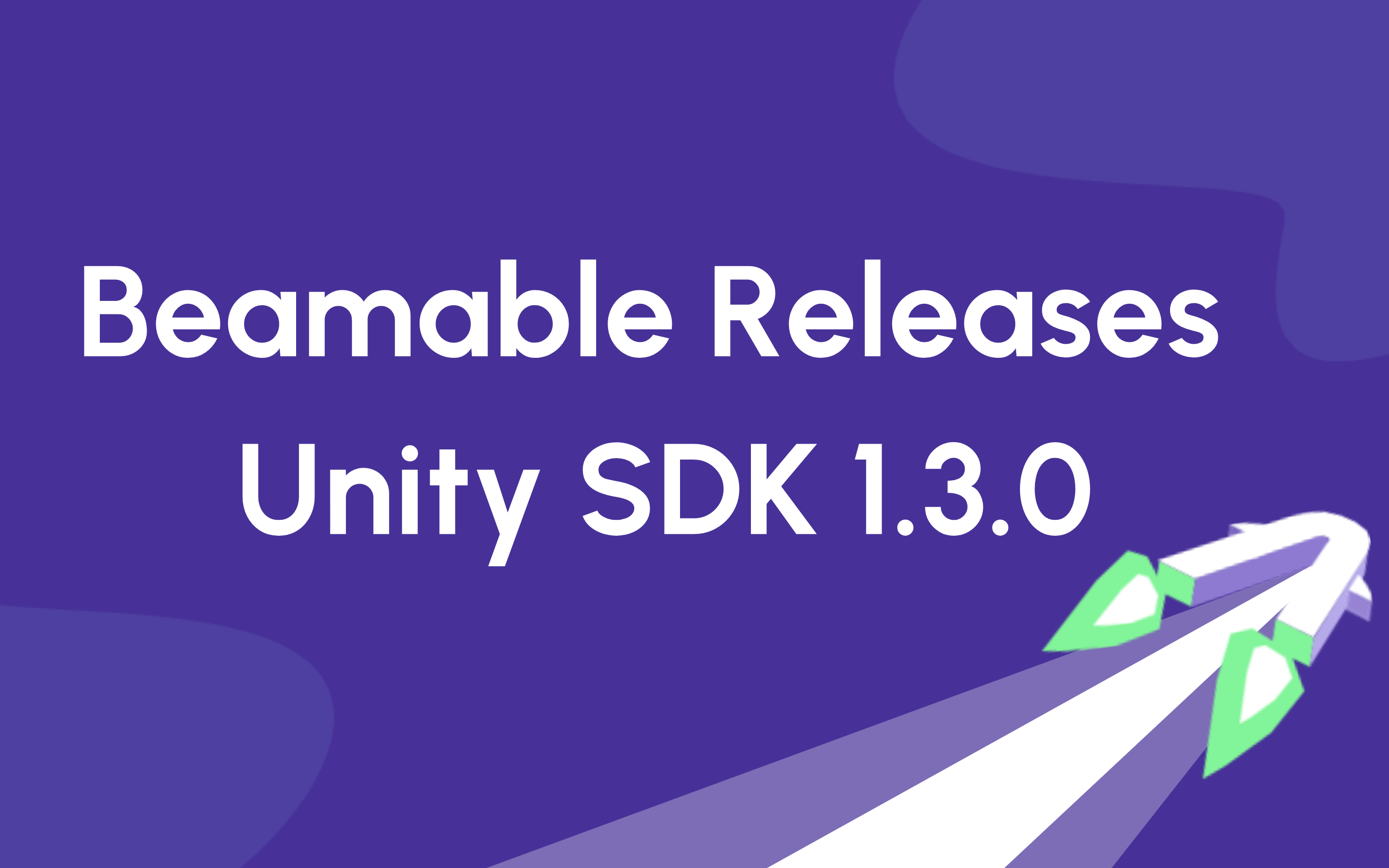
Beamable Releases Unity SDK 1.3.0
Beamable is happy to announce the release of our Unity SDK 1.3.0. You can read about all of them in the changelogs, and see the highlights below. Also, check out the demo video with Beamable Engineer Chris Hanna as he walks you through the newest features!
Better Microservices
Microservices are a major focus of Beamable 1.3. Perhaps the largest improvement is the ability to archive microservices that you no longer need. When you archive a microservice, you can delete all of the relevant local files, and remove the microservice from your future deployments.
Speaking of deployments, Beamable 1.3 adds a verification phase to the deployment process so that microservices that fail to start won’t be allowed to deploy to the realm. The deployment process can take a long time, so in 1.3, we’ve made sure you can alt-tab away from Unity and focus on other work while the deployment is in progress.
Additionally, if you’ve decided to disable a service, Beamable 1.3 will not upload the service, which saves you time. Beamable will now accept microservices built for ARM and AMD-based CPU architectures. You can select which architecture to use locally as well as for deployments by using the settings in the Project Settings / Beamable / Microservice window. There are also several improvements for local development speed, such as pre-fetching the Beamable base Docker image, caching Dotnet and NuGet restore flows, and consolidating startup actions.
Workflow Enhancements
Beamable 1.3 has several improvements for the developer workflow in Unity, such as realm permissions, Beamable environment switching, and various bug fixes.
As a team lead, you can use the Live-Ops Portal to manage realm permissions for team members. Beamable will respect these permissions on a per realm basis, so that a developer can be an admin on their personal development realm, allowing them to publish content and microservices, but only be a tester on the production realm.
If a developer wants to experiment with the latest and greatest Beamable packages, they can change their manifest.json file to point to the nightly track of Beamable package releases. However, the nightly Beamable builds use Beamable’s internal development servers. Until Beamable 1.3, this meant that you’d need to create a new customer account on the nightly track to test new features. Now, you can use the Environment Switcher in Window / Beamable / Utilities / Change Environment to select between Beamable’s development or production servers. Learn more about the environment switcher here: https://docs.beamable.com/docs/unity-editor-login
More Functionality
Beamable 1.3 brings new functionality for social interactions between your players. The new managed Friend system allows players to invite, block, or remove other players as friends. Learn more in the docs here: https://docs.beamable.com/docs/friends-feature-overview
The Beamable Party SDK is available as a preview feature and allows your players to form groups before entering the Lobby flow.
Chat SDK capabilities have been added to the Microservices SDK.
Finally, you can access request headers in the Microservice which empowers you to make decisions based on the player’s application version, or Beamable version. Learn more about it here: https://docs.beamable.com/docs/microservices-code
Detailed ChangeLogs
Full changelogs can be found at:
- https://github.com/beamable/Changelogs/blob/production/com-beamable-changelog.md
- https://github.com/beamable/Changelogs/blob/production/com-beamable-server-changelog.md
Get Started!
To try Beamable for your game project, sign up for free today!

How Old Skull Uses Beamable to Enhance Their Games with LiveOps Features
For over a decade, Old Skull Games has carved out a reputation for developing high-quality, creative games for mobile, PC, consoles, and other cutting-edge platforms.
But it hasn’t been entirely smooth sailing. As they began to expand their game offerings and player experiences, they realized they needed more than their previous game development infrastructure (Firebase) could handle. After a brief try building their own infrastructure, Old Skull Games found Beamable’s live game platform—and they haven’t looked back.
Read on to learn how Old Skull Games brought Beamable into their game development process.
Challenge
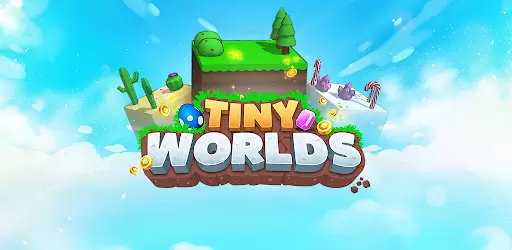
Old Skull Games began their journey using Google’s Firebase as their primary game development infrastructure. It was successful for several years, and Old Skull used it to create several popular and well-loved games. But eventually, the cracks began to be too large to ignore.
For one thing, Old Skull found that they wanted to be able to update their client’s game more easily than Firebase could allow. They wanted to be able to edit game data live. Unfortunately, their Firebase infrastructure only allowed them to do this through an official game release. Second, Old Skull wanted to have two different environments for the game—one for testing and one for deployment. Firebase was unable to accommodate their need for a double environment.
“Not having two different environments was becoming increasingly problematic in order to test live features before a launch.”
Most critically, Firebase was significantly limited in what it could accommodate in terms of live operations features, like live events, promotions, and announcements. When Old Skull saw that the next games in their development pipeline would require more and more live operations, they recognized a better infrastructure solution was needed.
“We decided that our current, but especially future games, will rely more and more on Live Operations features in order to be successful.”
Old Skull tried to build their own player cloud save feature, but the results were poor: the feature was buggy and unreliable. It also began to take their developers’ time away from game development. Eventually, they began to look for an alternative solution that could accommodate their Live Ops needs.
Solution

Beamable was recommended to Old Skull by Amazon through the Amazon Partner Network membership. They chose it because the Beamable platform had all the key features that their games needed to operate in a live, connected game context: the Live Game Platform, player authorization, and cloud save.
Old Skull implemented Beamable’s solution over four months. This quick implementation was possible because of Beamable’s integration with Unity, the game engine that powers Old Skulls’ games. The solution immediately worked as intended, freeing the Old Skull team up enough that they began to consider additional Beamable features, like A/B offer trials and player segmentation.
Old Skull also signed up for Beamable’s PRO Support service. This hooked them up with on-demand support as well as weekly work sessions in a private Slack channel with Beamable’s engineering and customer success teams. They used these sessions to ask questions, identify barriers to development, brainstorm solutions, and report on progress.
“When we had a major problem with CloudSave, the support team reacted straight away, fixed the issue, and released a new version on the same day to help us address the situation.”
Results
Beamable was exactly the solution Old Skull was looking for:
- Multiple environments. Beamable enabled them to set up several environments so they could have an isolated test environment for new updates. These were particularly useful for Time-Limited Events that are common throughout Old Skull’s games.
- Content manager. Beamable’s content manager allowed Old Skull to modify game data live, without needing to release an entirely new update.
- Support. Old Skull has been pleased with the level of support they’ve received from Beamable—especially compared to the support they received from Firebase. They have described Beamable’s support as competent, humble, and caring.
Compared to Firebase, Beamable was a massive upgrade. Old Skull not only continues to use Beamable, but they continue to add more features to enhance their game offerings.
Old Skull’s team of innovative game developers delivers engaging experiences on mobile devices, PC, and console platforms. Increasingly, those games require Live Ops functions that not all game development infrastructure can provide. Beamable’s platform provides everything Old Skull needs to give their players a live gaming experience that keeps them coming back.
Try a sample project yourself and see how Beamable can help you deliver top-tier gaming experiences to your audiences. It’s free to develop and you only pay for what you need at game launch. Download Beamable today.

Beamable Unleashes The Last Barbarian – A New Playable Prototype
A group of 4 members of the Beamable development team participated in a game jam last week and were tasked with coming up with a new playable game at the end of two days. The game, built on Beamable and developed in Unity, is called The Last Barbarian and is playable in your browser on PC and MAC here. If you’d like to learn a bit more about the game, keep reading!
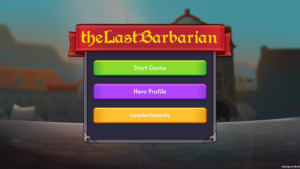
The game can be played using arrow keys, a mouse or the on-screen touch controls and the objective is to survive waves of enemies and score as high as you can on the leaderboard. As you can see in the below screenshot of the interface, the UI contains information including an exp bar, your health, the number of points you’ve accrued in your run and which enemy wave you are currently on and many of the features within the game are using features that can be added to any game using one click with Beamable.
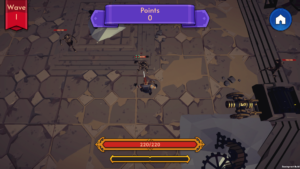
The game also harnesses to power of Beamable in order to create a Hero Profile which can be accessed between attempts at scoring on the leaderboard and gives players the ability to use the gold they acquire during matches to permanently upgrade their character making them go even further in their next run.
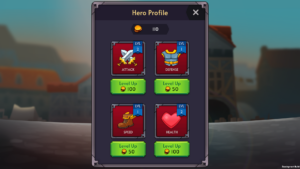
Also powered by Beamable is The Last Barbarian’s live leaderboard, which tracks every player that plays and ranks them by the highest score they’ve achieved while playing. Send the game to some friends and see if you can beat them!
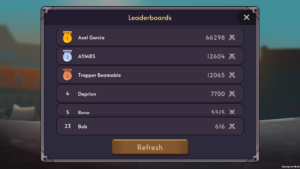
Built in Beamable, The Last Barbarian is playable here. Want to build your own The Last Barbarian? Sign up for free today and start adding features to your game like Leaderboards, Currency and more with the ease of one click!

How To Rapidly Build A Game In 15 Minutes With Beamable
In today’s blog post our Lead Unity Engineer Chris Hanna is here to help you rapidly build a game in 15 minutes with Beamable and implement features such as Leaderboards, Currency and more!
Want to learn more about Beamable?
Learn more about Beamable’s features here or sign up and try Beamable for free!

How Beamable Enables Worry-Free Game Operations
Non-developers need a place to go to their operate their game and the Beamable LiveOps Portal gives creators the ability to deploy content error-free without engineering. By using Beamable’s LiveOps Portal, game creators get access to important reports needed to measure the success of your game, including Analytics such as:
- How many unique total players you have per month (MAU)
- How many active players you have per day (DAU)
- How many of those users are returning users that have played previously (Retention)
Beamable even includes KPI’s out of box that will help you determine the success of your game, give you an understand of core player behavior and showing advancement towards key monetization goals for your game.
The portal also gives makers the power to download overall player analytics or dive into the player profile page and go into each individual’s statistics.
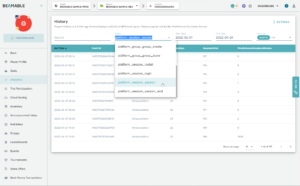
Want to try out our LiveOps Portal for free? Sign up for Beamable today.

Use Beamable And One Line Of Code To Unlock The Power Of LiveOps
Beamable, combined with Unity, empowers developers to utilize powerful and flexible solutions to communicate with their players and interact with their game through four LiveOps features: Events, Announcements, Notifications and Mail.
Live Events:
Events give the ability to set up one-time competitions with support for multi-phase events that can be done over a finite time, increasing both social and competitive engagement among players. Beamable can be used to even tell players how they are doing through leaderboards and can be used to distribute rewards to the player base based on their performance during the event.
Announcements:
In-game Announcements increase engagement and revenue, often with a multiplier effect from an engaged player base. Beamable’s Announcement Live Ops feature allows development teams to speak to use their game to speak one-to-many through our unique communication platform. Beamable even supports Announcements as a pre-fab, helping developers save time and integrate announcements as fast as possible.
Notifications:
Beamable’s Notifications system gives developers the power to provide their players real time updates based on server data, and can be used, much like Announcements, to communicate one-to-many.
Mail:
Mail systems are also being used increasingly more in many games, especially on mobile, and Beamable gives devs full access to an in-game Mail system, enabling one-to-one narrowcast communication between a developer and their playerbase.
Want to unlock the power of Beamable Live Ops today? Sign up for free and check out Beamable today!

Experience vs Degree in the Industry: Why Both Matter
This article examines the value of having experience or a college degree when entering the Video Game Industry.
In a world swarmed with creative influencers, content creators, and multi-million dollar business owners, who have all graduated with less than a college degree, many have wondered how important a college degree is these days– especially in the Videogame Industry. The idea of a college degree being superior to an experienced individual in any field has shifted to a phenomenon rather than the standard. While rising tuition costs have directly influenced attendance and graduation rates among university students, there is still value behind a college degree.
I even went through this journey myself recently, as I am 22 years old and recently graduated from The Pennsylvania State University. While I am fortunate to be working straight out of college many of my friends have not been so lucky, some having double majors. I noticed how many job listings in the Videogame industry required 3-5+ years of experience for an entry-level position, and how many of these positions did not require a college degree. Seeking an answer to the age-long debate of what is better? Experience or a degree, I sought out the perspective of various employees from within Beamable with varying backgrounds in and out of the gaming industry.
A Beamable representative located in the United States, who holds a degree in Computer Science explained that “Game dev is an intersection of many fields, each with their own rich depths and knowledge bases….[getting a degree] allowed me to focus my skill set on one of the many required skill sets required to develop a game. All that being said, it is still the case that doing is better than anything else.”
Another Beamable employee, located in the United States, who attended college without receiving a degree explained that “The pros of not attending college are no student debt and having the ability to chart my own path; however the cons of going the experience route is the time it takes to achieve certain milestones is much longer, and it is hard to get an entry-level job without a degree -OR- experience.” They noted that “ One thing I really did like about my time at college, even though I did not receive a degree, was being surrounded by people who were excited about learning.”
A Beamable representative located in Brazil explained that “I haven’t really seen degrees correlating that well with great professionals. In fact, the best designers/engineers/artists I’ve worked with directly here in Brazil—have no degrees or have ‘low-level degrees.’…Most of the people with great degrees fell on the other end of the spectrum as far as technical skill was concerned.’
Taking an excerpt from a Beamable Representative quoting our CEO Jon Radoff they explain, “[For engineers and designers], continuous demonstrable curiosity coupled with critical thinking skills (first-principles thinking, etc…) tends to beat out degrees.” Whether college is a good place to gain these traits/skills is another discussion in itself. When asked directly why both experience and degrees matter in the industry Jon Radoff explained, “ What’s actually important in the industry (assuming you’re talking about getting a job at a game studio) is having a portfolio of work that you’ve done. I find the most valuable part of a degree is that it gives you access to a lot of other people to collaborate with, and the space to develop some ideas. So the most important thing to do before graduating is to use every opportunity to build a portfolio. You should do the same while working inside the industry.”
Derek Struble, Director of Product Marketing at Beamable located in Canada, has a unique experience when it comes to attending university. He explained that “I never imagined going into game dev when I was in school because I didn’t get accepted into computer science…However, I did go get a Business Administration degree and what I found when I started as a QA tester is just the fundamental knowledge of how to manage projects, my time, help others, Excel, and all this other information I picked up in school helped me hit the ground running at first. That ability and my degree as the ‘scaffolding’ on which my career was eventually built allowed me to quickly pick up a running team, managing project finances, and my market research experience, brought me to even further new heights in game dev as it allowed me to build a market research arm at one of the companies I worked at…I feel like my degree is invaluable, not for directly getting a job in games..but instead for giving me all the fundamental tools I needed in order to succeed. I just happened to apply those tools to game development because it’s an industry I love.”
Personally, the direction, connections, and opportunities given to me during my time at Penn State helped direct me to my introduction to working in the game industry. Throughout the past four years, my skills were able be cultivated and refined with school, instead of being lost without structure, taking more time to realize what I truly wanted to do. I believe that school is extremely important for those who feel they need it to determine their sense of direction like myself, and it is not a necessary step for many jobs in the industry. I was able to begin my future at Beamable due to Alumni connections from Penn State which is one of the ways I utilized my time during school and building my network portfolio.
How about you? Has your degree helped you get into the video game industry or did you get in by learning and gaining experience another way? Connect with us on Facebook, or tweet us on Twitter. Join us on our Discord to expand your network and learn more about what we can do for you!
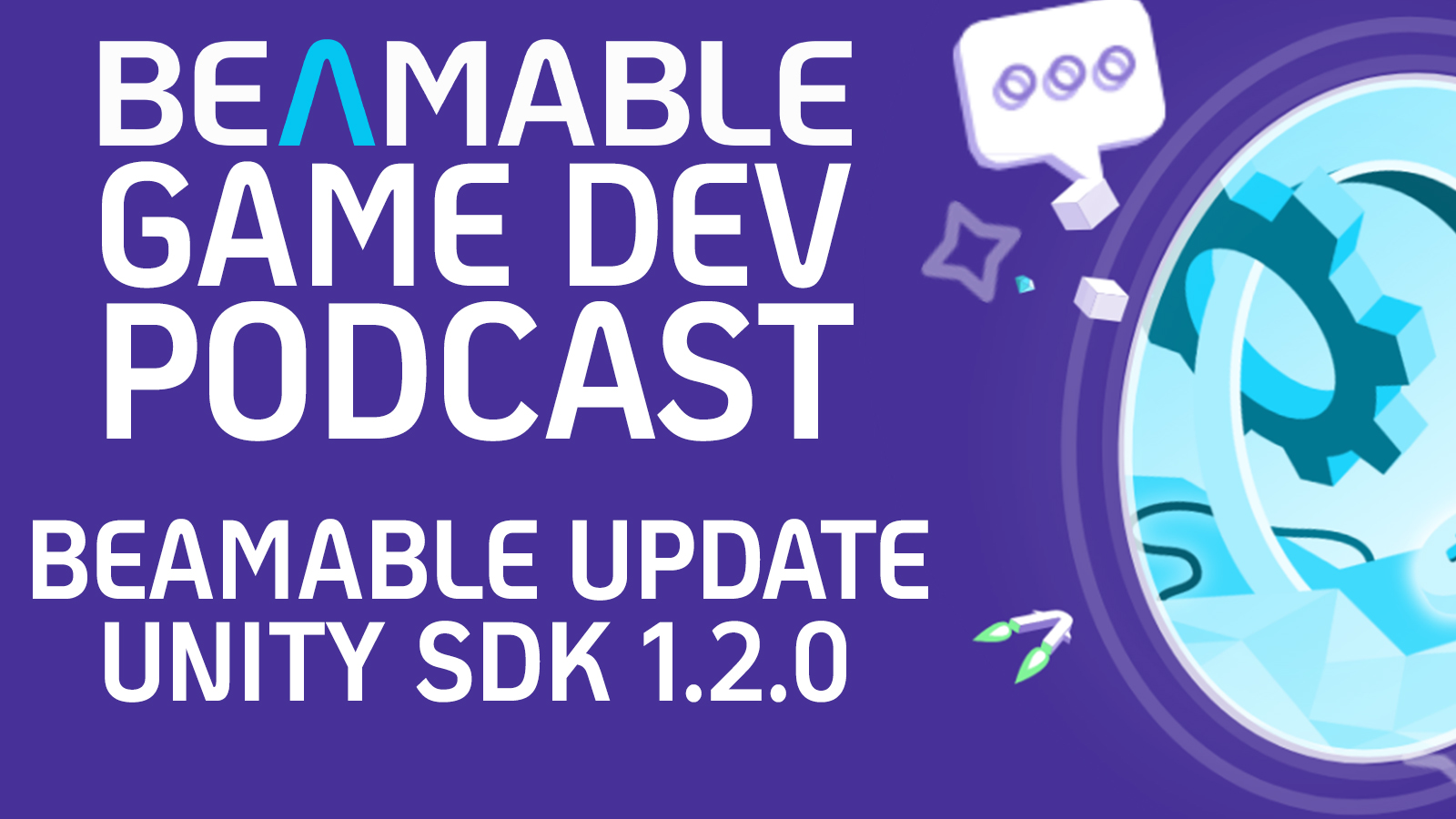
Beamable 1.2.0 Update Details With Chris Hanna
Beamable Game Dev Podcast Ep 31
In episode 31 of the Beamable Game Dev Podcast Chris Hanna gives us the inside scoop on the latest Beamable update. Beamable 1.2.0 is here! Moving forward with Beamable 1.2.0 means you will need to update your game from Unity 2018, but rest assured that you can use Unity 2021. Beamable 1.2.0 will continue to support Unity 2019, 2020, and 2021 until further notice. Click here for all the details on Beamable 1.2.0

Beamable Around the World: June Edition
Come meet our team in person!
Here are the events that Beamable representatives will be at in June 2022:
Game Jam – Beamable/Amazon Kick Off – June 21 – 23
Game Jam Bavaria – AWS/Beamable/Gamejolt – June 24 – July 1
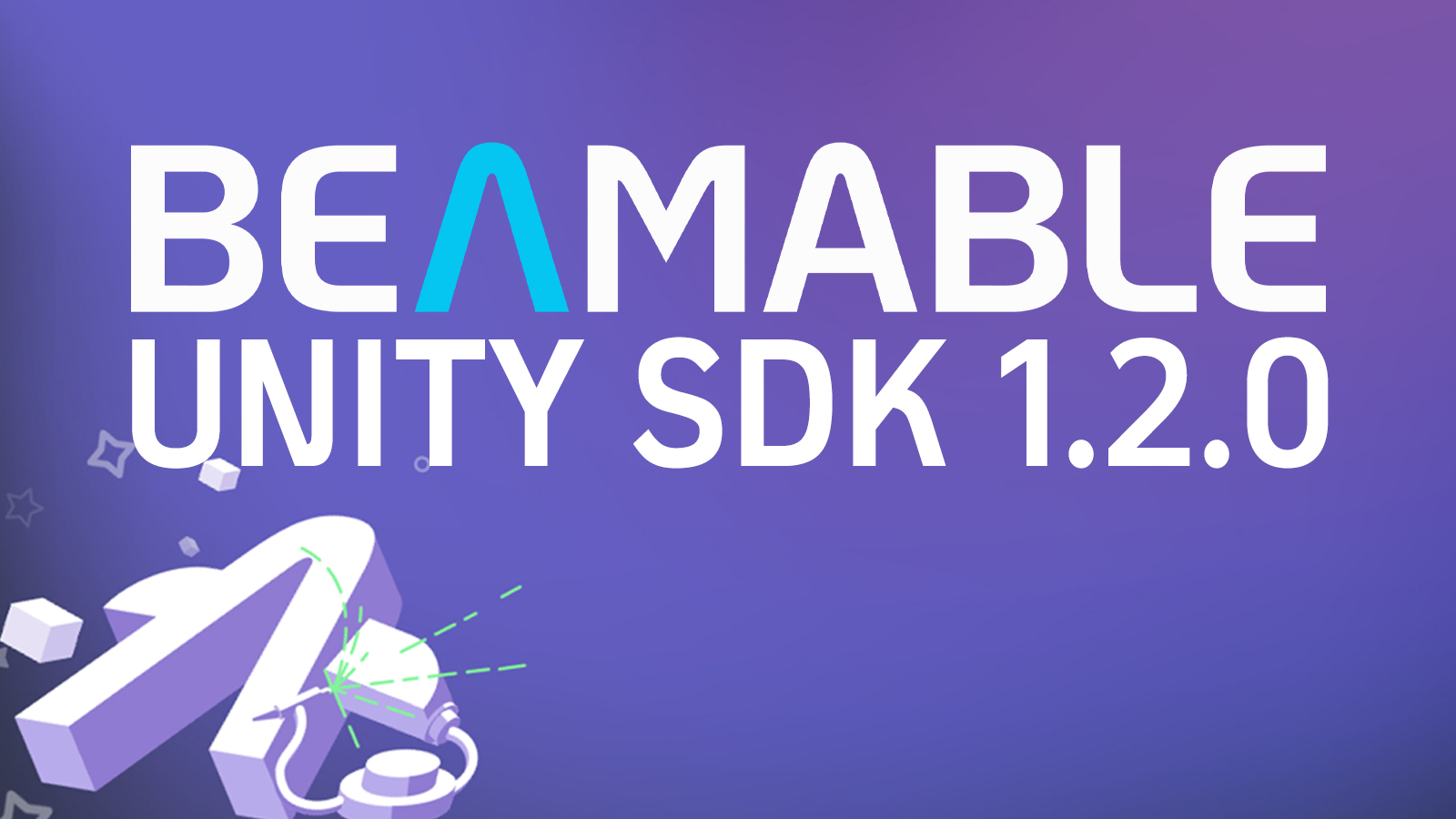
Beamable Release Unity SDK 1.2.0
Beamable is happy to announce the release of our Unity SDK 1.2.0.
You can read about all of them in the changelogs, and see the highlights below.
Unity 2021 LTS
Beamable 1.2.0 brings support for the latest Unity Long Term Support (LTS) version. Unity 2021 LTS was released in April. Beamable is committed to supporting the latest three LTS versions. As such, Beamable 1.2.0 is dropping support for Unity 2018 LTS.
Lobby SDK
The Lobby SDK allows players to find, create, and join game lobbies. A player can create a public or private lobby. Other players can join a lobby through a public listing, or use a Join Code to access a specific or private lobby. The Lobby SDK also manages player presence and readiness. Finally, all the players in a lobby can enter the game itself with whatever multiplayer framework you choose. The Beamable Lobby SDK is compatible with Beamable’s own Relay Server, but it can also be used with Photon, Unity’s networking solutions, or a custom multiplayer solution.
Microservice Improvements
Beamable Microservices continue to improve with Beamable 1.2.0. One particularly nice improvement is the ability to use GUID based references in your Microservice dependencies. Previously, the “Use GUID References” checkbox had to be disabled in order for Beamable Microservices to build properly. Now, by using GUIDs, you can rename your assemblies and dependencies without needing to worry about breaking Beamable Microservice references. We’ve also added a few additional methods to the IMicroserviceLeaderboardAPI so that you can get all of the leaderboards associated with a player. Finally, [ClientCallable] methods can now return subclasses of ContentObject directly.
Beamable 1.2.0 also has a breaking change concerning [ClientCallable] method security. Going forward, all HTTP traffic to a [ClientCallable] method must include a valid Authorization header. If it doesn’t, the request will fail with a 401 HTTP error. This breaking change should only affect developers who are using [ClientCallable] methods outside of the Unity game client. For those developers, Beamable 1.2.0 introduces a new attribute, [Callable], which works identically to how [ClientCallable] worked previously. To reiterate, this change only affects you if you’re calling Microservice functions from outside Unity or the LiveOps portal. Otherwise, this change does not affect your game.
Lastly, the EnableDockerBuildKit property in the Project Settings / Beamable / Microservices has been replaced with the DisableDockerBuildKit property. Previously, Beamable did not take advantage of Docker Buildkit, and left it as an opt-in feature. Beamable 1.2.0 reverses this behavior, and makes Docker Buildkit the default. The usage of Docker Buidkit enables developers with ARM based CPU architectures to publish Microservices to the Beamable Cloud.
Stability Improvements
The Beamable 1.2.0 release includes a wide variety of workflow and stability improvements. There is a new way to sort content in the Content Manager window. A dropdown next to the Realm dropdown allows you to sort the content based on id, type, or status. Additionally, the NotificationService now has a C# generic method to subscribe to events. This removes the need to add JSON deserialization code in your game logic. One final improvement to highlight is the addition of the Prevent Addressable Code Stripping setting in the Core Beamable configuration. When you build for Android or iOS, this setting will generate a link.xml file that ensures Unity’s Addressable code assets are not stripped from the build. To read about all the other improvements, check out the full changelog below or on our Github.
Added
- Unity 2021 LTS support.
- PreventAddressableCodeStripping Core Configuration setting that automatically generates a link.xml file that will preserve addressable types.
- TryClaim method in EventService to attempt a claim, even if one is not invalid.
- GetDeviceId method in AuthService to retrieve the current device id.
- deviceIds field on User object that provides all associated device ids.
- Content sorting option in Content Manager.
- Documentation to IBeamableAPI and all related accessors.
- Subscribe<T> method to INotificationService to avoid awkward serialization handling.
- Implicit conversion operators from Optional<T> objects wrapping a value type to matching Nullable<T> types.
- Inline style editor in BUSS theme manager.
- Added LobbyService and PlayerLobby to support new Lobby functionality.
- Support for GUID based assembly references.
- CallableAttribute for exposing C#MS methods that are meant to be publicly accessible (without authentication required).
- ListLeaderboards method to IMicroserviceLeaderboardsApi will return lists of leaderboard ids.
- GetPlayerLeaderboards method to IMicroserviceLeaderboardsApi will return leaderboards for a given player.
- lbId` field to the LeaderboardView response class.
- DisableDockerBuildkit property to the MicroserviceConfiguration. By default, Docker buildkit will now be enabled.
Changed
- ManifestSubscription subscription no longer accepts the scope field
- AccountHud logs a warning when pressed if there isn’t an AccountManagementFlow in the scene.
- Increased the AdminFlow scroll speed
- InventoryFlow can now be configured at the GameObject level.
- Edit mode for Buss Style Card has been removed in favor of context menus for selector label, variables and properties.
- Claiming an event that a player never submitted a score for will report an accurate error message.
- Added tooltips to Microservice Manager elements which didn’t have them.
- Microservice Manager buttons now highlight on hover.
- Microservices will be built specifically for linux/amd64 architecture. For developers with ARM based CPU architectures, enable to the DockerBuildkit setting in the Microservice Configuration to publish microservices.
- Building a microservice will always stop the microservice and its source generator if they are running. After the build, the source generator will be reset.
- Beamable third party context systems register with a default order of -1000.
- Global style sheet is turned now into a list of global style sheets.
- Content tags are split on ‘,’ characters in addition to ‘ ‘s.
- HeartBeat will now send heartbeat requests faster for our newer live backend services such as Lobbies
- Content validation for ID fields will now accept IDs without the prefix
- It is now possible to set background sprite as a main texture in SDF Image.
- It is now possible to choose 9-slice source and Pixels Per Unit multiplier in SDF image.
Fixed
- StoreView prefab now works in landscape mode.
- Playmode ContentObject refresh with disabled domain reload on Unity 2019 and 2020.
- Reading content in offline mode will no longer throw an exception if there is offline cache available
- Android sign-in will always allow user to select an account.
- Editor time Content downloads ignore content where no C# class exists.
- Account management will no longer log an error after pressing change password button more than once.
- Content Manager no longer logs inaccurate warning after renaming content.
- Notification handling for multiple BeamContext instances.
- Listing ‘sku’ price type was incorrect. Fixed to ‘skus’.
- The player’s location is detected automatically
- Matchmaking no longer breaks after user switches from Account Management flow.
- Client code can handle receiving a ContentObject response from a ClientCallable.
- Removed Microstorage related null reference errors on Unity startup.
- IMicroserviceNotificationsApi can now send strings with spaces in them for messages.
- IMicroserviceLeaderboardsApi will now respect HasValue flag of Optional<T> derived types in all cases.
- Fixed issue with Publish flow that caused an invalid Manifest data to exist when publishing any services along a service whose source code was no longer in the project
- Fixed issue that made it possible to start a remote service without its dependencies up and running (only happened in cases where the service was only remote — ie: the source code for it was not present in the project)
Removed
- Unity 2018 LTS support.
- EnableDockerBuildkit property from the MicroserviceConfiguration. By default, Docker buildkit will now be enabled. Disable it again with the new DisableDockerBuildkit field.
Our changelogs can be found at
https://github.com/beamable/Changelogs/blob/production/com-beamable-changelog.md
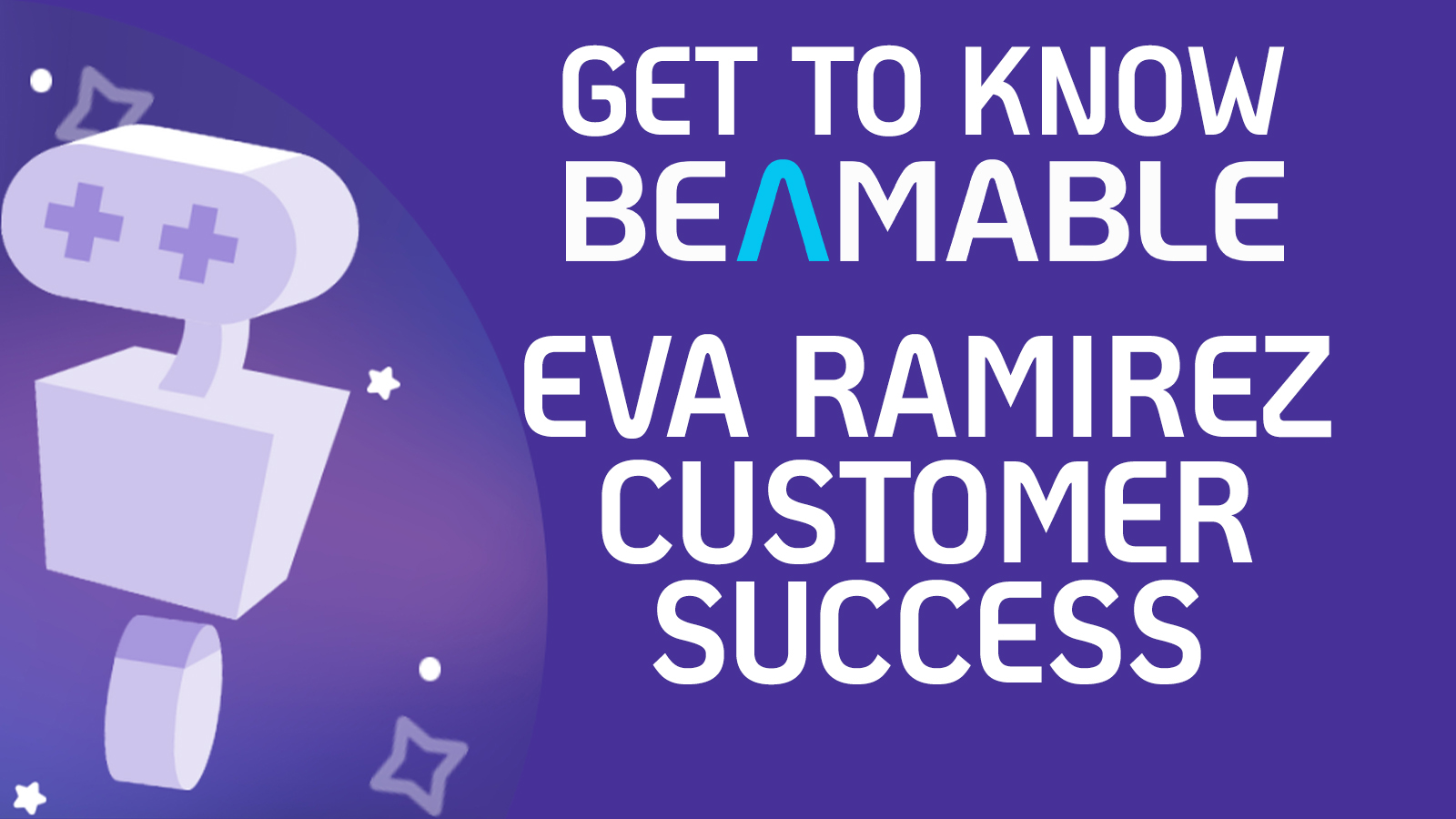
Get To Know Beamable: Eva Ramirez From Customer Success
Meet Eva Ramirez from the Beamable Customer Success Team
This episode of the Beamable Game Dev Podcast it’s all about getting to know Eva Ramirez from the Beamable Customer Success Team. Eva’s role at Beamable is to make sure our customers are taken care of in a timely fashion. If a customer hits a snag Eva will make sure they get connected with the correct engineer to remove any blockers.
Outside of Beamable Eva creates content on Twitch as a V-tuber.
If you have any questions about Beamable jump into our discord here
Try Beamable for free here

Important Security Changes Coming To ClientCallable In Upcoming Release 1.2
The team at Beamable puts security first and foremost when we work on upcoming releases and we are making a change in how the ClientCallable function works in our upcoming 1.2 release.
Starting in 1.2, if you use ClientCallable you will need to ensure that all requests have a valid Authorization header, or else your request will not work anymore and fail with a 401 or 403 error. This is especially important if your project uses third-party webhooks as those requests will now need to be made using the new Callable function added in 1.2, which replicates how ClientCallable used to work.
If you are only using Beamable Microservices from within a Unity game client, this change should not affect your game in any way.
If you have any questions regarding any of the above or concerns about how this might effect you, please contact us at support@beamable.com

Beamable at GamesBeat Summit 2022 Recap
GamesBeat Summit 2022 took place about a month ago starting on April 26th and Beamable was there! In addition to our team walking the show floor our CEO, Jon Radoff, hosted two really unique panels. Both panels can be watched for completely free (after a short registration process) over at the GamesBeat Summit 2022 registration page.
The Changing Face Of Live Ops 2022 – Link
Jon sat down with Josh Yguando, Co-Founder and President of Jam City, and Jason Bailey, Co-Founder and CEO of East Side Games , to discuss the evolution of Live Ops in 2022 and where Live Ops will be going in 2023 and beyond. They also discussed player retention and how your average player has more entertainment choices in 2022 than ever before, so the bar for success continues to shift upwards and become more challenging, especially as player expectations rise when they play a game for the first time. The talk also dove into how publishers and game developers can optimize the live operations experience for their players to keep them engaged and form a community around the game.
The NFT Debate – Link
Jon also hosted a fiery debate panel regarding NFTs with panelists David Kim, Head of Publishing at WAX studios, and Rami Ismail, Strategic Director and Co-Founder of Vlambeer. The panel aimed to bring to the surface a lot of the debate points surrounding NFTs and the role they might play in video games both now and in the future as well as how the online conversation around NFTs can be so polarizing. Overall this panel ended up being the talk of the summit, and is well worth checking out if you are even moderately interested in the subject!
In closing, the Beamable team had a ton of fun at GamesBeat 2022 forging new friendships, moderating interesting panels and connecting with people around the industry. We hope to see you there next year!

Beamable Technology Overview in 10 minutes
If you’ve ever wondered what Beamable can do for your Unity game project or how to get started, we have good news: We now have a 10 minute video walkthrough of Beamable from our Chief Technology Office Ali El Rhermoul. If you’d like to know more about what is in the video, scroll down to learn more or if you’d rather just watch the video yourself, you can find it at the bottom of this post!
This video covers:
- Getting Up And Running With Beamable In Unity
- How Data Automatically Syncs Between Servers, Game Clients and Dashboards
- Creating Server Authoritative Microservices
- Microstorage
- Managing and Monitoring Microservices Using Dashboards
If you’d like to know even more about Beamable, sign-up today and start your free trial.
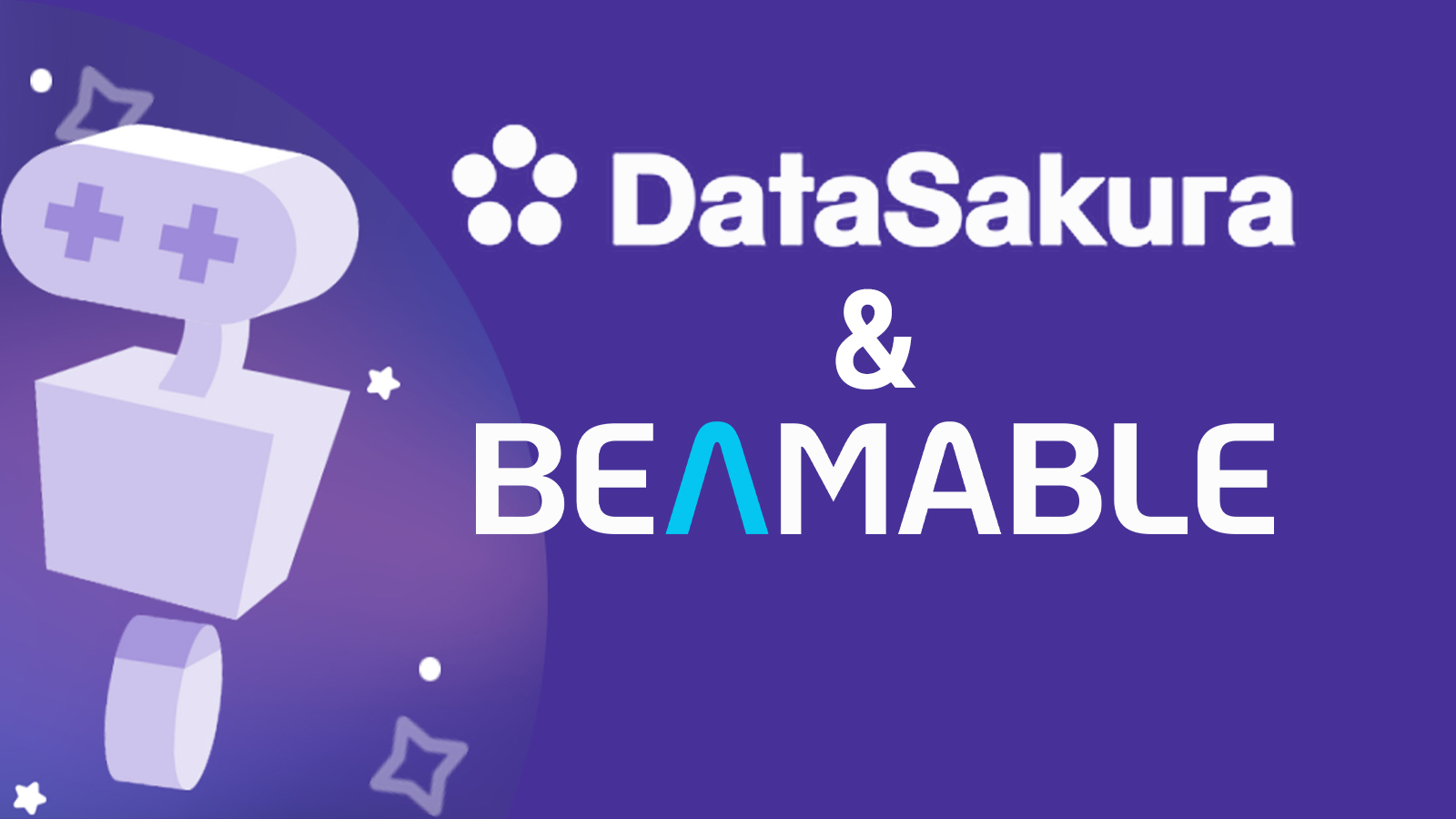
DataSakura & Beamable Announce Development Partnership To Help Game Developers
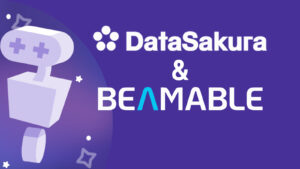
What it means for you:
DataSakura and Beamable are announcing a development partnership to help game developers with full cycle development, maintenance, support, and implementation of the Beamable Live Game Platform to power LiveOps and multiplayer experiences.
DataSakura was founded in 2018 and has spent 10s of thousands of hours building and maintaining hit titles like Cut The Rope, Fruit Ninja, and Jetpack Joyride. They have deep experience with live game backend development, and a partnership with Beamable will allow them to get games to players faster, and operate more sophisticated LiveOps and content design.
“We are inspired to collaborate with Beamable,” stated Andrey Vengerskiy, CEO of DataSakura, “they offer a powerful game server option for any new title or any title wanted to migrate off of a legacy backend.”
Jon Radoff, CEO of Beamable explains, “DataSakura and Beamable both focus on helping game makers create the best games possible while accelerating game development and lowering costs. This partnership will help us take that focus to a new level.”
About DataSakura:
Founded in 2018, DataSakura offers full cycle game development services with a focus on excellence, full transparency and giving customers total control to scale up or down depending on project requirements. In addition to full cycle development, DataSakura also offers maintenance and support so that developers can reduce their development costs and enjoy step-by-step development acceleration for their projects.
About Beamable:
Beamable is a gateway to powerful game server functionality, enabling player authentication, rich game analytics, content management, player CRM, and much more utilizing one line of code. Led by a team of game-industry and software-as-a-service veterans and backed by investors including Companyon Ventures and GrandBanks Capital, Beamable fights for the game makers of the world by enabling them to build faster and operate worry-free.
Want to learn more about this partnership? Sign up for Beamable today or reach out for an introduction to the DataSakura team.

Beamable Company Update: Saudi Arabia Game Jam
Beamable is part of the Saudi Arabia Game Jam
Allister sits down with Josh in this week’s podcast to update us on Saudi Arabia Game Jam. The Game Jam Fast Art is happening May 12-14. The theme for this game jam is hyper-casual. Allister introduced Beamable to the teams via a live presentation, but most of the teams will be seeing it at a later date due to the time difference. Microservices were the main talking point of the presentation and how it’s so easy to implement into their game.
Get to know Beamable before you jam.
With more game jams on their way, we are encouraging jammers to try to jump into Beamable before jams start. It is free to use and you can implement a leader or multiplayer with very few lines of code.
For more updates on what is going on check out our Beamable Around the World post.

Beamable Around The World – May Edition
Come Meet The Team In Person!
The Beamable team has a very busy May ahead and representatives from Beamable will be at the following events this month:
Pocket Gamer Connects Seattle – May 9th & 10th (Going on right now!)
Digital Dragons (Poland) – May 16th & 17th
Nordic Game Conference (Sweden) – May 17th, 18th, 19th, and 20th
Game Access Conference (Brno, Czechia) – May 27th & 28th
If you have any questions about where our team will be at these events so you can meet us in person, come join our Discord and ask!
Game Jam Support
In addition to attending events in person we also remotely support game jams, with the highlight this month being:
Game Jam Fast Art (Saudi Arabia) – May 12th, 13th, and 14th.
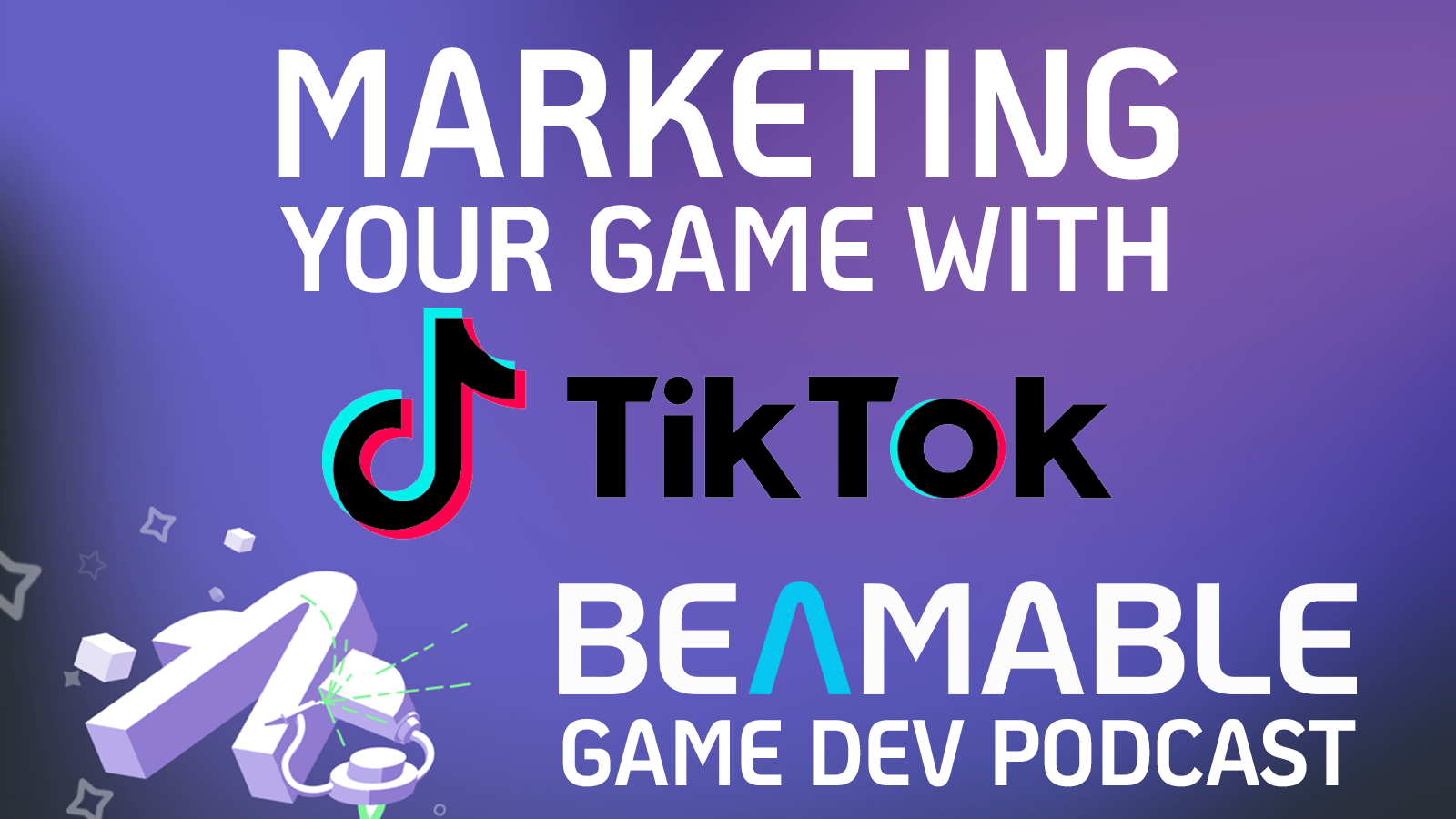
Effectively Using TikTok To Market Your Game
How to master Tiktok when marketing your game
With TikTok growing at a staggering rate many game developers are being left behind by not using the platform to its full potential. As social media platforms grow their organic reach diminishes, so right now is prime time to take advantage of that organic reach. We hear from people all the time that they don’t know what to post, let’s get into what you should be posting to seize the full potential of TikTok.
Create Less, Document More
“I have no idea what to create” is a common thought we hear when TikTok is brought up.” Our answer is always “Be authentic and document your journey, don’t put energy into creating.” We hear you thinking “but I am not interesting or what I am doing isn’t interesting.” You have to shift that mindset when trying to reach the gaming community and think about what they are into. Gamers love gaming news, updates, etc. Documenting your development process will allow your fanbase greater connection to you and your game and get your potential customers that much more excited to purchase it at launch. Documenting your game development doesn’t need to be high production or tons of editing. The perfect TikTok has a hook, engaging content, and sometimes a call to action.
Hook Your Audience
Questions make great hooks, something that is visually stimulating is another great hook. You want the viewer to linger on the content. Using text will also help your viewer engage with the video longer which helps boost you in TikTok’s algorithm.
- Do you want to see the newest enemy, power up, ship, weapon, etc?
- Do you want to see a funny or crazy bug in the game?
- If you have a world to explore asking “where would you travel first?”
- Want to meet this team member?
Your hook can become your shtick, allowing you to take the guesswork out of what you’re going to create. With that hurdle out of the way, let’s get into the content.
Create engaging content
After the hook, it’s time to show them what you’ve been working on. This can be very grandiose depending on where you are in your game, or it may be a character model. What may seem uninteresting to you is a peek behind the curtain for those following along. The content could focus on your team, bite-sized updates on who they are and what they are working on, allowing your team’s personality to shine. Keeping things simple avoids the common pitfall of overthinking because all you are doing is documenting your game development journey. Showing as much of the process as you can help teach and inform others about how games are made. Did you finally squash a bug that was driving you crazy? Share how you were able to fix it. The most important thing is creating a connection with your fan base and in some cases may even inspire the next generation of game developers.
An effective call to action
A call to action can be as simple as “hit the follow button for all our updates!” and often does not have to be more complicated than that when first starting out. As you get closer to launch the call to action may be directing your audience to your Steam page so potential buyers can either wishlist or preorder your game. Use a call to action to grow a discord server for your game, your brand, and possible future games as well. You can also let your audience know about your live streams if you decide to stream on Twitch or TikTok.
Live streaming on TikTok
As TikTok grows as a platform live streaming is becoming more prevalent. Streams can be as simple as pointing your phone at your computer screen and hitting the go-live button. If you want to get a little fancier you can build a scene in OBS and set the canvas to 1080 x 1920, then point your phone at OBS. We would go live like that on the regular because we didn’t have a stream key for TikTok. This is a great way to engage with a much broader audience. We’ve had streams where 150,000 have come through in one stream.
Start your TikTok journey
TikTok is no longer just dancing and lipsyncing, it is proving itself as a powerful marketing tool. Take advantage of the organic reach it offers while it’s hot.

Beamable Release Unity SDK 1.1.0
Beamable is happy to announce the release of our Unity SDK 1.1.0.
It is full of various workflow enhancements, and some fixes to bugs that were too large to fit in a patch release. You can read about all of them in the changelogs, and see the highlights below.
Microservice Workflow Enhancements
Beamable 1.1.0 brings several workflow improvements to the Microservice development process. The largest change is that Microservices now take advantage of Dotnet 6’s Hot Module Reload feature. You won’t need to keep stopping, and restarting your Microservices after each code iteration. When you make a local code update, the Microservice will automatically reload the latest code into your running Microservice. You can opt-out of the automatic reload by disabling the Project Settings / Beamable / Microservices / Enable Hot Module Reload property.
We’ve also fixed a usability issue with the Microservice’s auto-generated C# client code. Previously, Beamable would generate a C# file anytime the Client Callable methods changed on a Microservice type. However, the generation was using the latest successful compiled type information from Unity. If Unity encountered a compilation error, then it would pass a stale version of the Microservice type to the client generator. In Beamable 1.1.0, we’ve moved the code generation into a separate dockerized process. Now, anytime the Microservice changes, the dockerized client generator will compile the Microservice code directly, and output the auto-generated file. This also speeds up your Unity compile times, because now Unity can capture the updated Microservice and updated client code in one compilation pass.
If you’ve been using Microservices for a while, you may have noticed that Beamable’s docker integration was taking a significant amount of disk space. In Beamable 1.1.0, there is an automatic process to remove stale Microservice docker images from your computer. You can disable this behavior with the Project Settings / Beamable / Microservices / Enable Auto Prune property.
The Microservice Manager window has been visually updated to be more Unity centric. The debug setting moved into the advanced settings for each Microservice. The play and stop buttons have been collapsed into one Play button, similar to Unity’s game Play button. If you are debugging your Microservice with Rider, you can also use the Project Settings / Beamable / Microservices / Rider Debug Tools property to preload the Rider debug tools. If you enable this, you’ll need to match the debug tool download URL with the version of Rider you’re using. You can find these versioned URLs on Rider’s documentation. Once enabled, when you connect Rider to debug a running Microservice, you’ll be able to skip the Custom Tools download step.
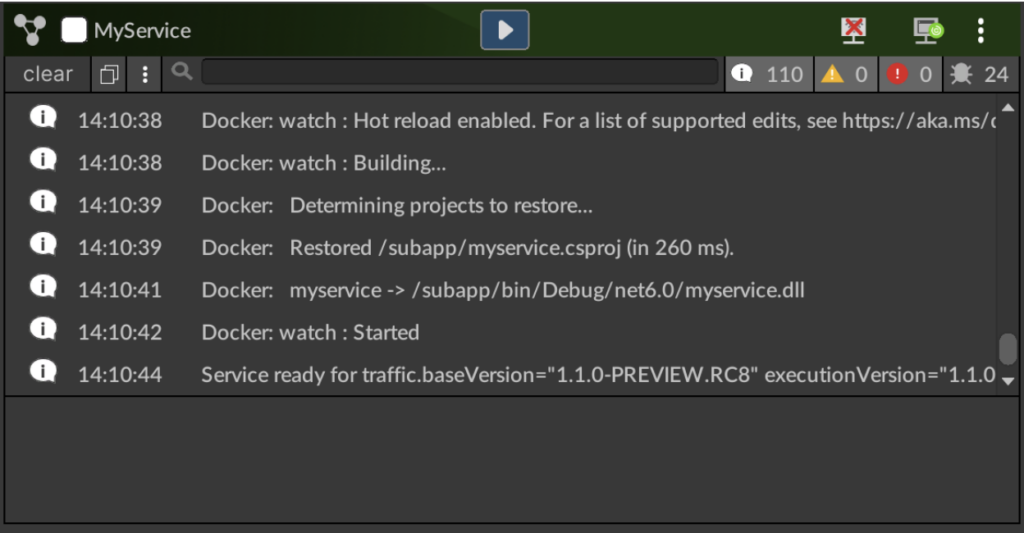
Microservice SDK Updates
The Microservice SDK has also been improved in Beamable 1.1.0. We’ve added the ability for a Microservice to send notifications to players. You can use the Services.Notifications.NotifyPlayer() method to send a json payload to a player, or to multiple players. You can use this to notify a group of players when one player takes an action, or you can send messages to your players via an AdminCallable route. We’ve also updated the AssumeUser function so that a non-administrator player can assume the role of another player. This can be useful if you need to have one player’s action mutate the state of another player’s inventory in a server authoritative way.
Theming and Beamable Unity Style Sheets Preview
Beamable 1.1.0 brings us more features for Beamable Theming Preview. We are constantly trying to improve the experience of using Buss Theme Manager. One of the elements we emphasize is the smooth use of this tool without having to switch between windows and that’s the reason why we’ve added the Selected Buss Element section. It can be found just below the Navigation section. You’ll find all necessary details like Id and Class strings, as well as the currently referenced Buss Style Sheet. No more switching to the Inspector tab.
Another improvement is enabling the possibility to edit selected Buss Style Sheet directly from the Inspector window. The Theme Manager only shows the styles that are referenced in the current scene hierarchy, but now you can also edit all of the styles by opening the Inspector window on the Buss Style Sheet asset. This improvement can be helpful when you are designing a set of styles more holistically.
We’ve also included various bug fixes and internal updates to the BUSS system. We are still building out this feature and the greater skinning capabilities, so stay tuned for the next update.
Here is the complete changelog for 1.1.0
Added
- Added `RecoverWith` extension method overloads to `Promise<T>` that allow for configuring a promise to recover from failure over multiple attempts.
- Selected Buss Element section in Buss Theme Manager
- Added `AddAsChild(VisualElement, string, params string[])` to `BeamHintVisualsInjectionBag` to allow `BeamHintDetailConverter` functions to build and inject dynamically created `VisualElements` into Hint Details.
- `BeamServicesCodeWatcher` detects any change that makes it necessary to rebuild C#MS images as well as cleaning up Auto-Generated files whenever a C#MS AsmDef is deleted. This makes the easiest way to delete a C#MS’s code from your project simply to delete its folder.
- Beam hint that warns users entering play mode that there are stale services that must be rebuilt. Avoids wasting time when making quick changes to microservices and forgetting to regenerate the local image during development.
- `EnableAutoPrune` configuration setting that will remove old unused docker image layers. This should limit the disk space requirements of Beamable Microservices on developer machines.
- `EnableHotModuleReload` configuration setting that will enable dotnet 6 hot module reloading for all Microservices.
- Added `IMicroserviceNotificationApi` to list of services accessible from `ClientCallable` and `AdminOnlyCallable` methods of Microservices. These can be used for server-to-client communication.
- `RiderDebugTools` configuration setting to preload Rider debugging tools onto Microservice development images
Changed
- Behavior of Add Style button in Buss Theme Manager
- Add Style button moved above Buss Style Cards section in Buss Theme Manager
- Buss Element selection improvement in Buss Theme Manager
- Application will check if there are redundant files in content disk cache on each start. All files but the one needed will be deleted to free disk space.
- All implementations of `[BeamContextSystem]` or `[RegisterBeamableDependencies]` will be preserved during Unity code stripping
- Properties in Buss Style Card sorted alphabetically by default
- When exiting Unity, all related Microservices and Microstorage containers are closed
- Microservice client code is generated in a dockerized dotnet runtime instead of Unity
- Added docstrings to `StatsService.SearchStats` to clarify correct usage of the `Criteria` parameter.
- `AssumeUser` takes an optional boolean parameter to disable the Admin access token check
- Service name must be a valid C# class without culture-specific characters
- Updated Microservice Publish window UI/UX
Fixed
- Constant “Invalid token, trying again” errors in the Editor after 10 days.
- Compilation error when using new `com.unity.inputsystem`
- Deferred retry of failed uploads to the poll coroutine, to eliminate an infinite loop that could crash the app.
- Content string fields can contain escaped characters, and won’t be double escaped after download
- Fixed issue with `ReflectionCache` that happened on certain platforms when `IEnumerable` returning functions had to be parsed for `AttributesOfInterest`.
- Fixed issue that caused the `ReflectionCache` to run an extra unnecessary time when a `.cs` or `.asmdef` file were changed.
- Fixed issue on Re-Import All with `BeamableAssistantWindow` opened that required reopening the window for it to work.
- Fixed issue that caused `StatsService.SearchStats` to fail whenever a match occurred.
- Cannot create invalid service name before validation occurs
- Progress bar in publish window now correctly displays the progress of services publication
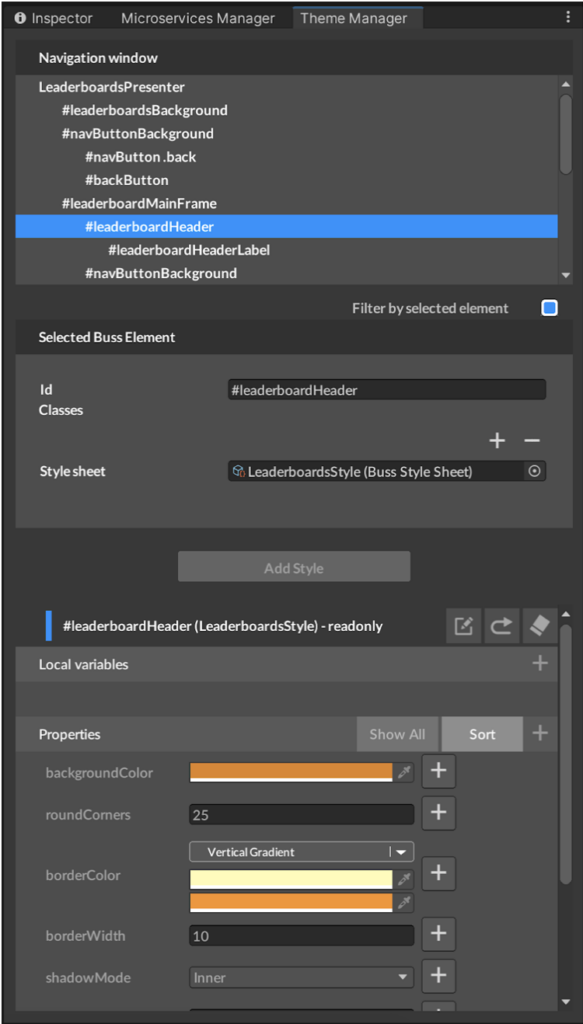
Our changelogs can be found at
https://github.com/beamable/Changelogs/blob/production/com-beamable-changelog.md

Beamable Announces Partnership with CrocoMobi to advance new game development, upgrades and migrations.
Use CrocoMobi with Beamable to accelerate development and LiveOps across a wide spectrum of games including BlockChain, NFT, and 2D.
April 12, 2022- Boston, MA– Today Beamable is announcing a partnership with CrocoMobi. This partnership allows game developers building on Beamable to use CrocoMobi to accelerate the creation of additional options in existing games, and in the development of new games. Beamable developers can augment their teams and take advantage of game design, technology, and operations expertise.
Beamable is a gateway to powerful game server functionality, enabling player authentication, rich game analytics, content management, player CRM, and much more utilizing one line of code. With CrocoMobi, game studios will be able to be paired with a development partner that can rapidly implement a new game on Beamable from scratch, or migrate an existing game from another platform or engine.
Dmitriy Belenkiy, COO of CrocoMobi explains, “Our experience in translating games to Unity allows us to implement joint projects with Beamable, using the experience and best practices of both companies.”
Jon Radoff, CEO of Beamable added, “Getting a game to market is hard. We are always looking for talented teams like CrocoMobi to help us make it easier for game dev studios to implement their vision, get to market quickly and impress players. We look forward to working with CrocoMobi on many exciting projects.”
To get started with Beamable, sign up today or reach out for an introduction to the CrocoMobi team.

Metanomic and Beamable Join Forces to Create Perfect In-Game Economies
Live economy features + live service economy platform = a win for game devs everywhere
Massachusetts – April 12, 2022 | Metanomic, the real-time economy-as-a-service platform for developers, and Beamable, a live operations platform for game developers, have announced a new strategic partnership. Together, the technology leaders will provide game developers with a unique end-to-end solution to create, implement, and manage in-game inventories and economies of scale. This new partnership provides a seamless operation for studios of all shapes and sizes.
Imagine an integrated solution that allows game designers and developers to upload their games and player items from Beamable’s fully managed player inventory support into Metanomic’s live service economy platform. Key stakeholders in game design will be able to build, test, and power real-time game economies seamlessly.
The combination of Beamable’s mission to streamline the creation, operation, and orchestration of game tech and live operations with Metanomic’s tool – which eliminates spreadsheets from game design and provides economic simulation, AI, and sophisticated planning capabilities – is a game-changer for designers.
Theo Priestley, CEO of Metanomic said, “Beamable’s live service economy features, particularly its fully managed player inventory support, will natively integrate with Metanomic’s live service economy platform, allowing game designers and developers to upload the game and player items from Beamable into Metanomic, thus giving them the ability to build, test and power fully balanced, real-time game economies in one seamless operation. All without ever using a spreadsheet again.”
Trapper Markelz, Co-Founder and COO of Beamable added, “Beamable focuses on the technical directors that have to make build decisions and the LiveOps directors that have to make game operation decisions. Metanomic brings in technology that helps game designers make design decisions. Together, we offer something for every stakeholder in the game prototype/pre-production planning and solution process.”
The new initiative is aiming in the future to work with game developers around the world to provide this unique service.
Editors: Representatives from both Metanomic and Beamable are available for further comment, and we can organize an interview as well. These can be conducted via email or virtually.
Social Media – Metanomic – LinkedIn / Twitter
Social Media – Beamable – Discord / Twitter / Facebook / YouTube / LinkedIn / Instagram / TikTok
About Beamable
Beamable fights for the game makers of the world by enabling them to build faster and operate worry-free. The company’s full-stack liveops platform for live games is tightly integrated with the Unity 3D engine, enabling game developers to focus on the creativity and differentiation of their products. Beamable is based in the Boston area and led by a team of game-industry and software-as-a-service veterans and backed by investors including Companyon Ventures and GrandBanks Capital. For more information visit, https://beamable.com.
About Metanomic
Metanomic is the first and only complete real-time economy as a service platform for developers. Built by professional economists and game designers, the platform utilizes patented algorithms to easily deploy plug and play, interoperable and infinitely scalable game and creator economies ready for web3, metaverse, and play-and-earn games. The platform allows developers to easily and quickly build a fully-scalable and configurable play-and-earn economy that features asset creation engines and fully balanced player markets. Hyperspace is the first game to run on the platform’s web3 interoperable and chain-agnostic economic engine.
PR Contact
Derek Struble
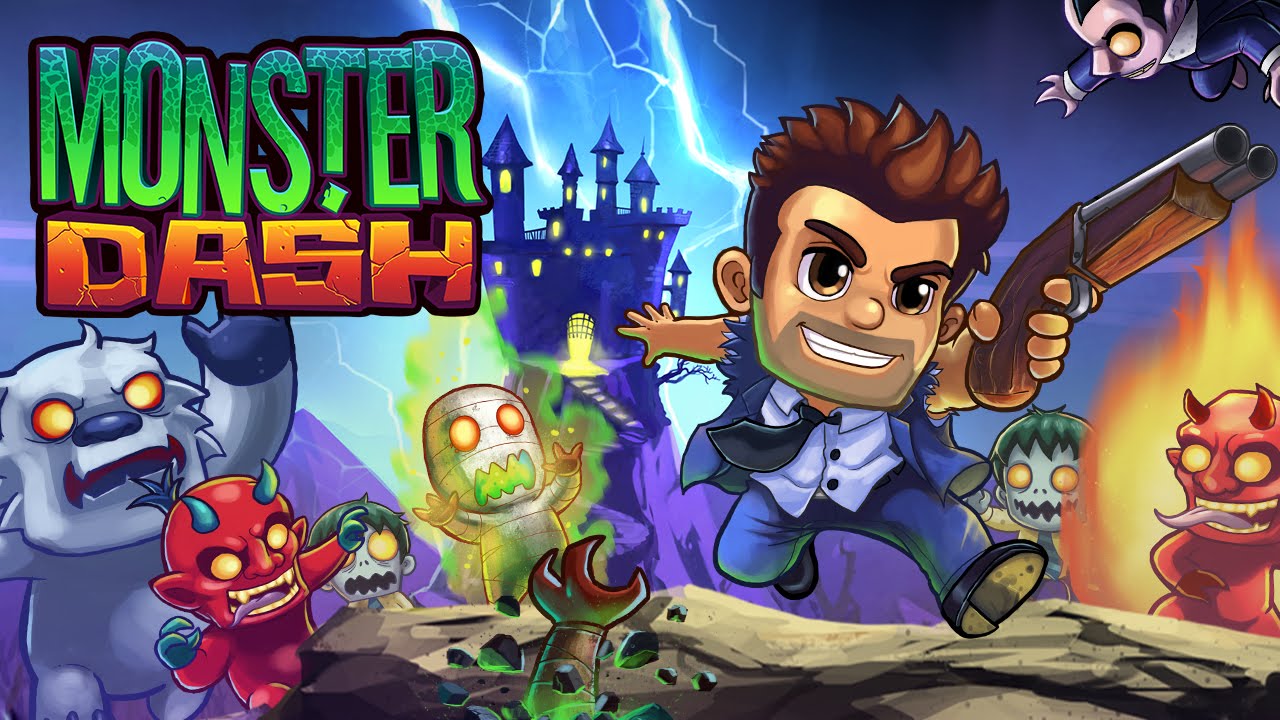
HALFBRICK LAUNCHES MONSTER DASH ON BEAMABLE
Monster Dash from Halfbrick launches on Beamable
Popular catalog of games including Fruit Ninja, Jetpack Joyride, Dan The Man, and others to follow
March 30, 2022 (Boston, MA) — Halfbrick Studios, the Australian video game developer responsible for hit titles like Fruit Ninja and Jetpack Joyride is migrating their popular game titles to the integrated full-stack LiveOps game platform Beamable.
Beamable provides a Live Services platform to implement social, commerce, content, and multiplayer features, utilize C# scripting and a native Mongo cloud datastore to write game server functionality, and orchestrate it all with a web-based LiveOps portal.
“We were looking for a partner that could help us provide new LiveOps tools to our team, a game backend that could take our games to the next phase of growth, and eliminate the technical debt in our existing platform. Beamable has demonstrated a deep commitment to building a set of next-generation tools with an integrated LiveOps workflow that will get us there,” explained Shainiel Deo, CEO of Halfbrick.
Jon Radoff, CEO of Beamable shared his excitement about the partnership saying, “Halfbrick is on the cutting edge of LiveOps. They have a big vision for how to build, operate, and scale their games in the future and we are excited to be a part of that.”
With Beamable, Halfbrick can enhance the implementation of live events, streamline content authoring via web interfaces, improve in-game and cross-game messaging, achieve better segmentation of player data, and add all-new player experiences like competitive leaderboards, groups, gifting, and social cooperation.
Monster Dash is the first game to launch on the Beamable platform. Other titles are in migration now and will launch through 2022 and 2023.
To learn more about Beamable https://beamable.com. To see Halfbrick’s portfolio of games, check them out at https://www.halfbrick.com/
About Beamable
Beamable fights for the game makers of the world by enabling them to build faster and operate worry-free. The company’s full-stack liveops platform for live games is tightly integrated with the Unity 3D engine, enabling game developers to focus on the creativity and differentiation of their products. Beamable is based in the Boston area and led by a team of game-industry and software-as-a-service veterans and backed by investors including Companyon Ventures and GrandBanks Capital. For more information visit, https://beamable.com.
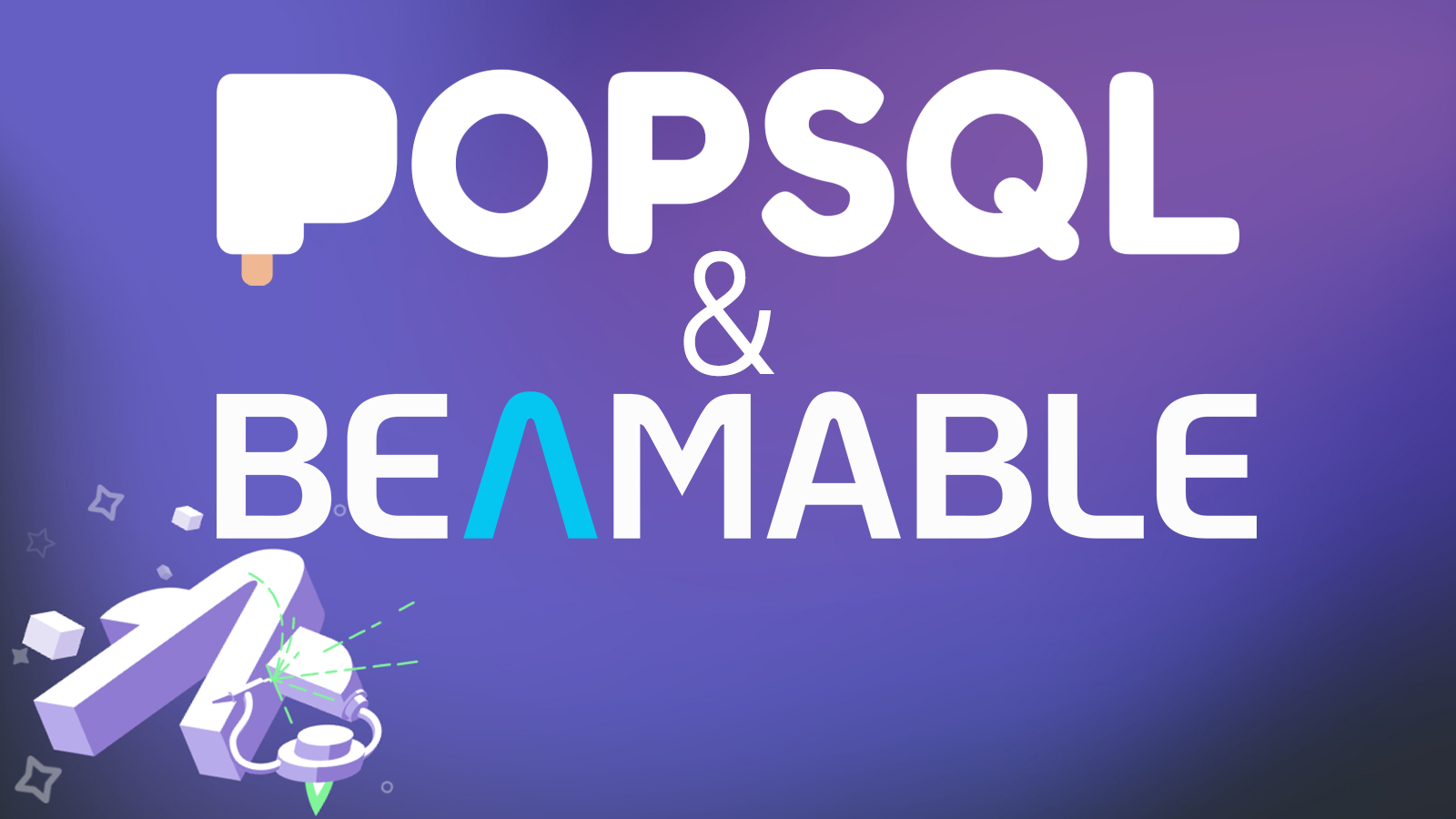
Beamable Announces Partnership with PopSQL
Use Athena access in Beamable to build custom dashboards for your game
March 28, 2022 – Boston, MA – Today Beamable is announcing a partnership withPopSQL, a leading collaborative SQL editor and business reporting platform for teams. This partnership allows game developers building on Beamable to implement custom dashboards using direct access to their game data stored in Athena. Any Beamable game studio that uses PopSQL can receive discounts on a paid plan:
- 50% off Premium or Business for Beamable Indie teams (less than 2 years old, and fewer than 10 employees) for up to 1 year
- 25% off Premium or Business for everyone else for up to 1 year
To claim the discount, any contact at a Beamable game studio can email support@popsql.com or open up a ticket through the popsql.com chat widget. Once your Beamable CID is verified, the discount will be applied to the account.
Beamable is a gateway to powerful game server functionality, enabling player auth, rich game analytics, content management, player CRM, and much more with one line of code. Adding PopSQL allows game studios to build on top of default LiveOps portal telemetry by adding deep custom reporting.
Paiman Vahdati, Head of Business Development at PopSQL, explained the value of the partnership, saying, “We are excited to partner with Beamable so that game developers can use Beamable’s deep analytics and our collaborative query and dashboard system to extract powerful and actionable insights for their games.”
“It’s a partnership that makes so much sense,” explained Ali El Rhermoul, CTO of Beamable. He continued, “With PopSQL you can write queries, share them to your entire game team, and construct rich custom dashboards off the analytics events that Beamable automatically collects. You can see retention reports, DAU/MAU counts, installs, revenue, essentially all the important metrics you need to observe and orchestrate your game live operations.”
To get access to your PopSQL discounts with Beamable, sign up for Beamable today,

Beamable Announces Support for AWS for Games
Beamable Announces Support for AWS for Games, Microstorage, and Improved Pathways for GameSparks Migrations
March 23, 2022 – Boston, MA – Today Beamable is announcing support for the AWS for Games Initiative from Amazon Web Services, Inc. In addition to Beamable’s support for AWS, the launch of Microstorage, enabling developers to create, deploy and manage within Unity allowing for an easier migration path for GameSparks storage APIs.
Built specifically for games customers, AWS for Games is an initiative featuring services and solutions from AWS and AWS Partners. AWS for Games makes it easier for game developers, publishers, and platforms to select the right tools and partners to build, run, and grow their games. For customers looking to accelerate deployments with solution-specific support, AWS for Games also identifies dedicated AWS Game Tech industry specialists, AWS services, and leading AWS Partners in each solution area.
Jon Radoff, CEO of Beamable, states “We’re thrilled to work with AWS.” He continues his support by explaining how Beamable and AWS together are the best of both worlds stating, “together, Beamable, and AWS provide a best-in-class platform for building amazing live games. Studios get AWS’s renowned scalability combined with Beamable’s workflows, industry-leading admin tools, and powerful serverless computing. This hyper-efficient platform enables developers to build fast and orchestrate great experiences for players.”
Lucien Parsons, Global Partner Leader at AWS Game Tech explains, “We’re excited to work with Beamable to further empower game developers to build amazing, successful, and fun games.” He continues his support for the partnership explaining the growing requirements of the industry and the tools needed to meet customers’ needs, “As more games offer live services and connected experiences in their games, developers need a diverse set of solutions to use. Working with Beamable on AWS for Games gives developers more solutions to use so teams can focus more on creating fun player experiences.”
Create, deploy, and manage your game all with the confidence of AWS security and scalability.
Beamable’s integrated LiveOps platform helps game studios to develop and scale games faster while reducing the cost and resource challenges of ongoing game management. This easy-to-adopt platform works directly inside the Unity editor enabling game makers to efficiently add social, multiplayer, commerce, and content management features to their projects. In addition, having already worked with world-class studios on their GameSparks migrations, Beamable is well positioned to efficiently help game developers take their games to the next level.
“Beamable’s AWS integrated solution for LiveOps allowed Old Skull Games to implement important game infrastructure rapidly saving our team more time to focus on creating awesome player experiences,” states Herve Sohm, Chief Business Officer of Old Skull Games, a joint customer of Beamable and AWS.
Sean Durkan, Chief Executive Officer of backend game development company SuperNimbus explains, “The ability to set up the backend and write backend code from the editor is hugely powerful…Developers utilizing AWS’s powerful infrastructure are going to love building on Beamable.”
Game studios looking to learn more about the benefits of a combined Beamable and AWS solution are encouraged to visit Beamable’s AWS Marketplace listing. Beamable’s platform is free to use while games are in development.
ABOUT BEAMABLE, INC.
Beamable fights for the game makers of the world by enabling them to build faster and operate worry-free. The company’s full-stack LiveOps platform for live games is tightly integrated with the Unity 3D engine, enabling game developers to focus on the creativity and differentiation of their products. Beamable is based in the Boston area, and led by a team of game-industry and software-as-a-service veterans, and backed by investors including Companyon Ventures and GrandBanks Capital. For more information visit, https://beamable.com.

Beamable Releases Technical White Paper
Get a copy of Architecture for Scalable, Reliable and Efficient Game Operations today!
Beamable is excited to announce the release of a new technical whitepaper for game studios. In the paper, we cover how one line of code launches our Integrated, Full Stack LiveOps platform for Unity games.
var beamable = BeamContext.Default;
Live games need engagement, social features, and the ability to deliver new content continuously to players. The team at Beamable created this paper after learning what it takes to scale games to millions of players.
“I was excited to work on this paper for game developers and explore the common challenges to shipping games and rapidly scaling them to grow a community of committed players,” shared Ali El Rhermoul, CTO of Beamable. “Our goal is to give developers an understanding of the kinds of workflows that make for scalable games, both operational and technical, as well as solutions both conceptual and practical. We worked to cover the tradeoffs of each approach, as well as introduce Beamable’s capabilities.”
What you will learn from Beamable White Paper:
- How a full-stack, integrated approach to LiveOps helps you build and iterate faster
- What we learned from the lifecycle of several live game projects
- The core issues that contribute to complexity, mistakes and lost opportunities
- Beamable’s architecture, built around microservices and a highly-scalable Serverless Game Backend
Download your copy of the white paper now!

Beamable @ GDC 2022
Beamable will be at GDC 2022 this year!
If you are in San Francisco, March 21-25, we would love to meet up with you. There are two ways you can connect with us:
Set up a meeting with Beamable
Beamable will have a number of people at GDC including the co-founders of the company CEO Jon Radoff, COO Trapper Markelz, and CTO Ali El Rhermoul. Also attending is Director of Strategic Partnerships Aladin Ben, and VP of Sales John Goodale.
To coordinate a meeting, please reach out to us at sales@beamable.com or contact us now!
Attend our Beamable Reception!
Beamable is hosting our first annual evening reception at GDC this year. It is co-sponsored by Beamable and Venly, with appearances by Amazon Game Tech, as well as Hashbang demoing a new Beamable/Photon project called Light Violence!
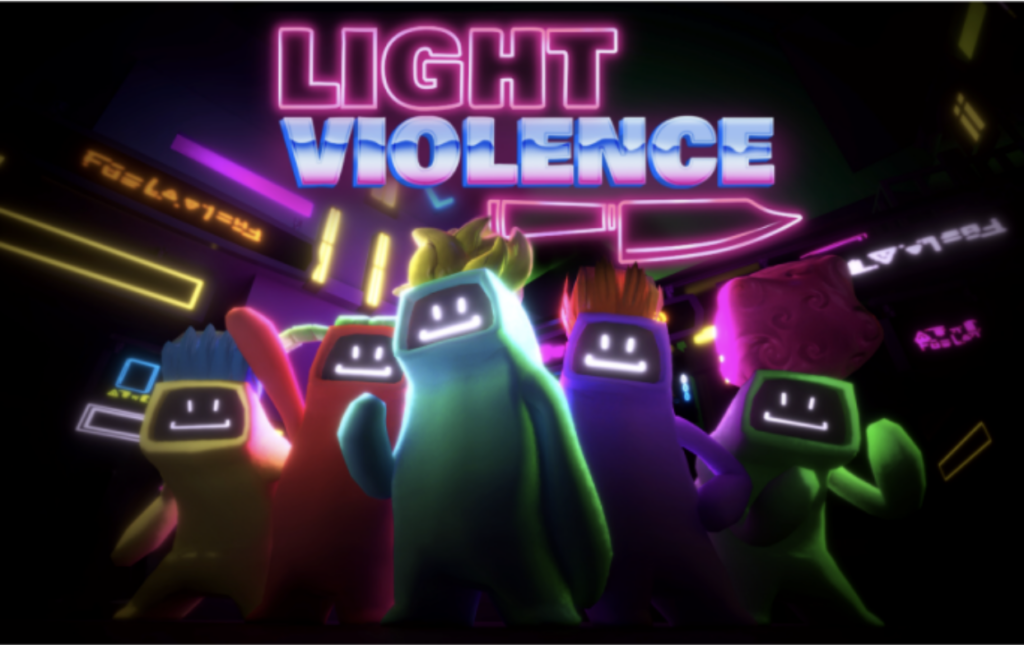
Here are the details! We would love to see you there!
Wed, March 23, 2022
5:00 PM – 8:00 PM PDT
777 Valencia Street
San Francisco, CA 94110
Stop by for music, free food, drinks, and conversation about the future of live games, LiveOps, and multiplayer game development.
Space is limited. RSVP Today!
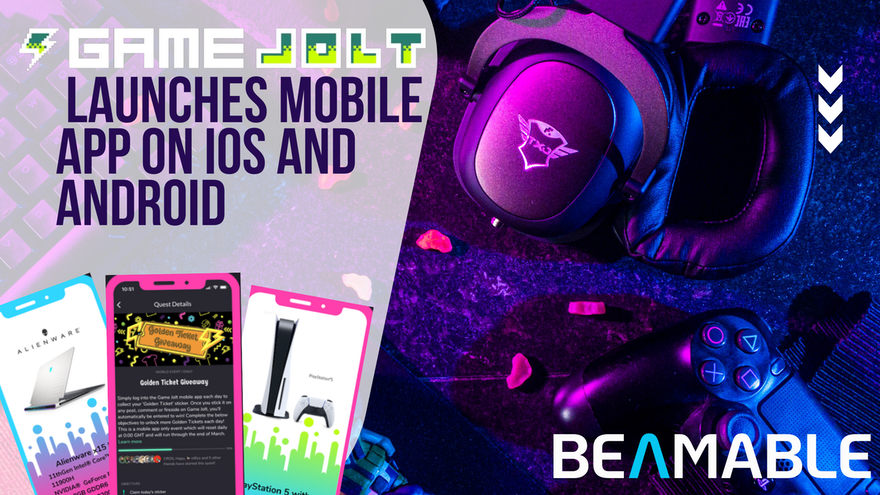
GameJolt launches Mobile App on IOS and Android
Today we’re celebrating with our friends at Game Jolt! A fantastic place for gamers and game devs to meet and interact. Recently they launched their mobile app on IOS and Android incentivizing players to log on each day to earn golden tickets.
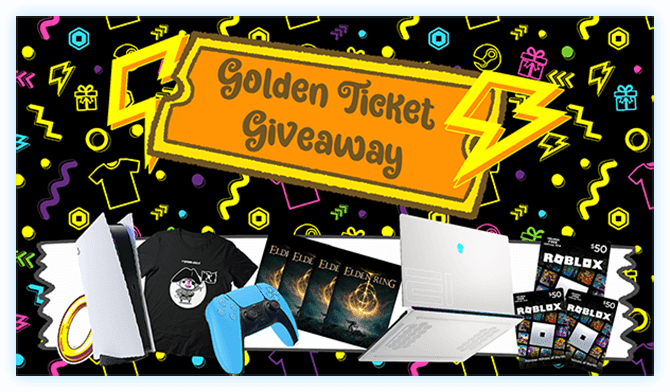
You can install GameJolt for iOS or Android using the App Store or the Google Play store. Participate in daily challenges to win a PlayStation 5, Alienware x15 gaming laptop and more prizes!
After installing the Game Jolt mobile app, remember to log in each day to collect your ‘Golden Ticket’ sticker. Once you use it on any post, comment or fireside on Game Jolt, you’ll automatically be entered to win! Be sure to check your inbox and notifications daily to see what you’ve won! Want to increase your chances of winning? Invite friends to sign up for Game Jolt, or view your quest log to complete various tasks for additional stickers.
To learn more about the Golden Ticket giveaway, head on over to GameJolt to learn more!
Looking for more?
The Preservation of Videogames: How Nintendo is eliminating access to digital games.
Built On Beamable: The Office Somehow We Managed
Beamable Release Unity SDK 1.0.1
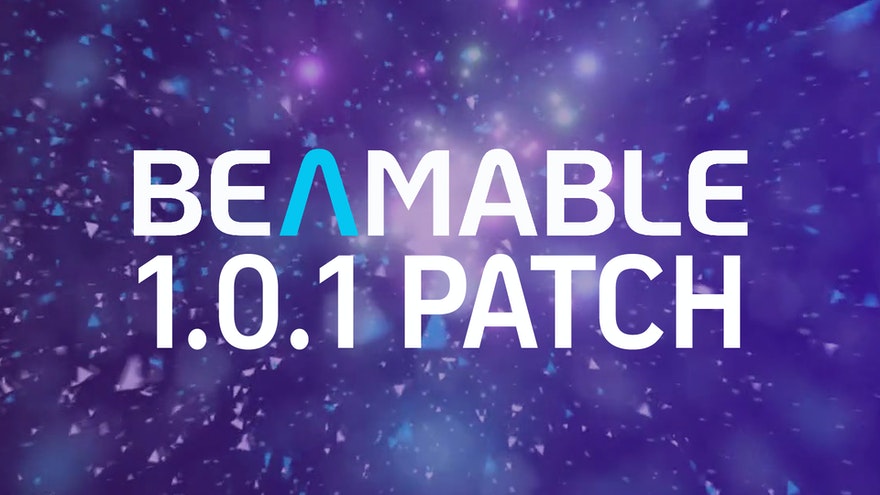
Beamable Releases Unity SDK 1.0.1
Beamable 1.0.1 is available!
This is a patch release and contains bug fixes, performance improvements, and usability improvements.
Performance Improvements
Through a few mechanisms, we’ve improved the Beamable initialization times by roughly a factor of 2, and content resolve times by multiple orders of magnitude. When Beamable initializes, there are 4 general networking steps that need to occur;
- User initialization,
- Session creation,
- Notification setup,
- Potentially purchaser initialization.
In Beamable 1.0.0, those 4 steps were happening in sequence. Now, in this patch release, the last 3 steps all begin at the same time, and execute in parallel. In high latency network conditions, this is a major speed improvement. Additionally, Beamable switched the internal representation of access token expiration from a date string, to a numeric-based timestamp. The numeric representation prevents the need to do any date parsing, which saves about a quarter of a second in initialization speeds on a Google Pixel 4A. Additionally, games with lots of content can take advantage of the Content Baking feature, which is now supported on all platforms. In 1.0.1, the content manifest is baked alongside the content objects and included as a resource in builds.
Stability Improvements
There were several UI glitches in the Microservice Manager UI/UX that have been fixed, including some broken icons, broken text wrapping, and inconsistent texts between windows. Critically, the ResolveAll() function that was used for Content downloading has been fixed. Previously, the implementation of ResolveAll() would trigger a stack overflow under certain conditions. The method would actively try to run up to 50 content downloads in parallel. As soon as one download finished, the method would start a new download. However, the new download was represented as a recursive call from the original download’s Promise success callback. Depending on network conditions, it was possible for one chain of method execution to reach the stack frame limit and trigger a fatal crash. Our new solution uses a batch mechanism internally instead of a rolling recursive mechanism. Instead of using callback recursion to schedule all the downloads, the new method creates a data structure to represent the downloads and enumerates it over time. Lastly, there was a bug in the micro-storage feature where document Ids weren’t being set correctly when using the mongo driver’s replacement functions.
Apple IDFA Handling
Apple has changed how they entrust the player’s device id to developers. You can read about it here. Beamable is not creating a workaround for this behavioral update starting in iOS 14.5. However, if a Beamable customer wants to change the internal deviceId that will be reported to the Beamable backend, they can use the updates in 1.0.1. Please reference this code to override the deviceId. In general, you can unregister the standard IDeviceIdResolver implementation, and register your own custom implementation.
Community Requests
A few community members on the Beamable Discord brought up some great points about our package. We’ve changed our internal usage of the AssetDatabase.FindAssets function to use fully qualified class names. This should limit the cases where Beamable accidentally loads types of assets defined in customer projects. We’ve also configured all of our assembly definition files to “overrideReferences” which should stop them from automatically referencing every assembly in a customer’s project.
The full changelog history can be found on our Github, here…
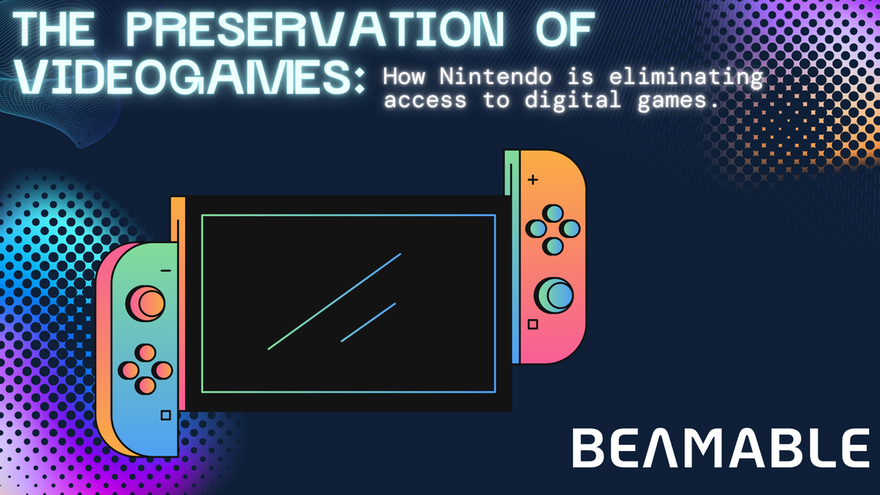
The Preservation of Videogames: How Nintendo is eliminating access to digital games.
While there are many debates on whether or not people should play emulated games there is one thing that is widely agreed upon: emulators do not support the creators of the game.
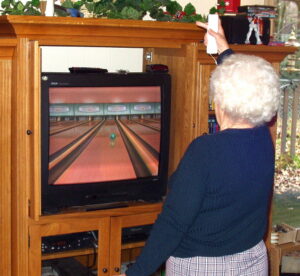
(What I Saw 2.0 is licensed under CC BY-NC-SA 2.0)
Recently Nintendo decided to stop support for eshop on the Wii U and 3DS platforms. This action made the games on the eshop unable to be purchased and re-downloaded, even if a player had already bought a particular game. The Video Game History Foundation, a non-profit aiming to protect the lifespan of video games, had much to say on Nintendo’s decision. Although they understand the business perspective from Nintendo in stoping the eshop from further purchases they stated, “preventing institutional work to preserve these titles on top of that is actively destructive to video game history.”
Nintendo’s comments on the removal of the eshop for the WiiU and 3DS platforms was simple, “This is part of the natural lifecycle for any product line as it becomes less used by consumers over time.” While the company noted that the Nintendo Switch Online Membership shows much promise in allowing for many players access to retro games, there is still a much bigger problem with Nintendo’s decision.
Since the release of the Nintendo Switch, many players have opted to utilize the Switch’s eshop to purchase digital copies of their favorite games and have moved away from physical copies of games. While physical copies of games have started to decline in popularity due to copies being easily accessed through online shops, Nintendo’s move in eliminating older e-shops may show a rise in physical copy ownership. Many have also noted the inability to sell back a digital copy of a game after playing as you can do with a physical copy, and not having to worry about packaging and cartridges, yet having to pay the same price.
For more information on the work being done to preserve the history of video games, head to The Video Game History Foundation. To read more about Nintendo’s move to eliminate the e-shop for the Wii U and 3DS, head to Nintendo Announces Closure of Wii U and 3DS eShop.

Built On Beamable: The Office Somehow We Manage
The Office Somehow We Manage
The Office Somehow We Manage is the latest game release that is built on Beamable.
Congratulations to the team at East Side Games on the successful launch of The Office Somehow We Manage. Seeing Michael, Jim, and Dwight back in action makes for some good times.
Launching a game built on Beamable
The video below will give you some insight into what it’s like to launch a game on our platform. You will get a behind-the-scenes look at what happens in the war room and how we monitor and prepare launch day.
A smooth game launch is our top priority for games Built On Beamable.
“It is critical to our success that the games launched on our platform are successful”
– Brandon Bateman Dev Ops
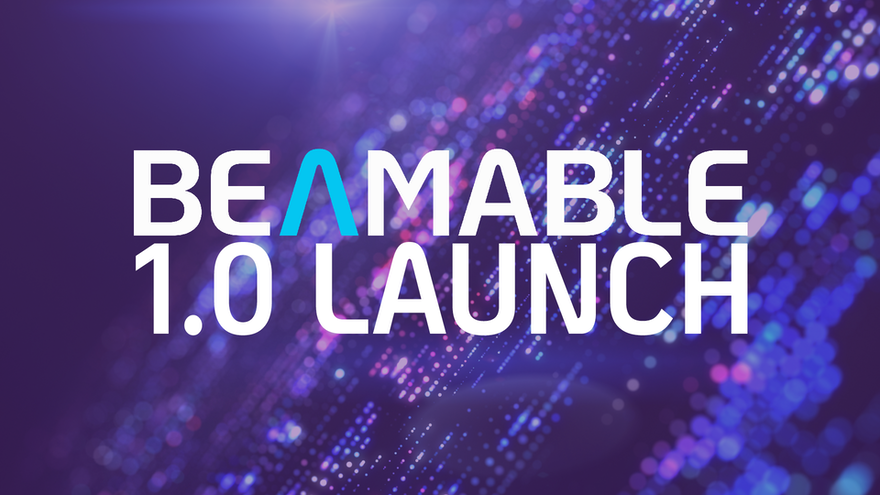
Beamable Release Unity SDK 1.0.0
BEAMABLE 1.0
Beamable is happy to announce the release of our Unity SDK 1.0.0. We’ve been working towards this milestone for a long time, and it’s completely full of new features to help Game Makers. The full changelogs can be found below. Here are the highlights of the release.
Microstorage and Microservices
In Beamable 0.17.0, we released the Microstorage preview, which allowed you to experiment with connecting local persistent storage to your Microservices. Now, you can deploy those storage layers alongside your Microservices to the Beamable Cloud. You get full access to read and write your data, as well as to view metrics and performance suggestions to keep your games moving fast. When you create a Microstorage object from the Beamable Microservices Manager Window, you can mark it as a dependency of a Microservice, and start writing your data C# classes in Assets/Beamable/Common right away. You have full access to the Mongo C# Driver, so you can take advantage of the powerful capabilities Mongo provides. In Beamable 1.0, we’ve also updated our Microservices to take advantage of Dotnet 6, which will make your apps faster and more secure.
If you’ve already added Storage Objects through the 0.17.0 preview release, you’ll see a few errors when you upgrade to Beamable 1.0.0. To fix these issues, you need to do the following steps for each Storage Object
- Identify the assembly definition for the Storage Object, which should be located next to the Storage Object’s class file.
- Add a reference to the Unity.Beamable.Server.Runtime.Common assembly
- Add a reference to the Unity.Beamable.Server.Runtime.Mocks assembly
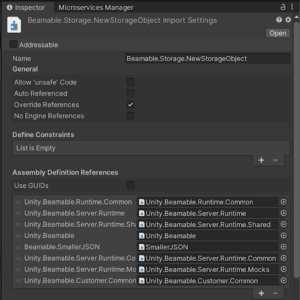
Brand New Portal and Documentation
Beamable 1.0 has an entirely new Live Operations Portal. The Portal is designed to make operating and managing your live games easier. You can control your Analytics, Player Data, Beamable Cloud Resources, Content, Realm Data, and more from the new Portal. We are always looking for feedback, so please share your thoughts and experiences about the Portal with us. Oh, and it has Dark Mode. Our documentation page has also been redesigned and updated to reflect many of the new features in 1.0. You can give us feedback or suggest an edit from within the new documentation pages.
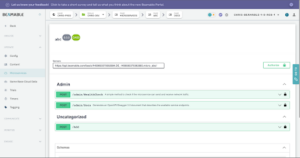
Beamable Assistant
Making games is hard. Using Beamable shouldn’t be. We’ve added a brand new window called the Beamable Assistant. It’ll automatically analyze your project and codebase for common Beamable usage errors and suggest fixes or performance improvements. The hints that the Assistant reports are configurable and extendable. Your own team can leverage the analytization pipeline and offer custom suggestions that fit your project’s needs. If you’re worried that this sounds vaguely similar to a certain metal paperclip from the late 1990’s, don’t worry, you can always disable this feature if you want to. In future Beamable releases, we’ll be adding and improving the hints and suggestions so that you can rely on Beamable Assistant giving you reliable and insightful feedback.
Theme Manager Preview
Beamable 1.0 has a brand new way to manage theming prefabs. We call it Beamable Unity Style Sheets, or BUSS for short. If you have a new Leaderboard prefab in your scene, and you open the Skinning page from the Toolbox, you’ll be put into a new theming experience where you can override the look and feel of the Leaderboard. BUSS uses a Signed Distance Field rendering technique under the hood to deliver crisp and rich UI visuals. BUSS empowers the developer to express their styles with CSS concepts like selectors, properties, and variables. The new Theme Manager window is still in Preview, and we will be listening to your feedback and improving it in future releases. As we build more prefabs powered by BUSS, the style decisions you make once will be reused over and over again so that you can spend more time building your game instead of wrestling with UI code.
Player Centric SDK Preview
We’ve added new SDK capabilities to Beamable so that you can access your Player Data as easily as possible. In previous releases, every code interaction you had with Beamable started with Beamable.API.Instance. That will still work, but starting with Beamable 1.0, you can also use BeamContext.Default.Api instead. The BeamContext is a class that represents a Player and all their code dependencies. Internally, we are using a Dependency Injection framework to power the context, instead of hard coding a list of service initializations. You can take advantage of this by having multiple BeamContexts in memory at once, which allows you to support couch co-op or hot seat gaming using Beamable player accounts. You can inject your own context sensitive services as well, modify the existing Beamable ones, or even replace them with your own implementations. Once you have a BeamContext instance, you can access player data directly, or in an observable pattern. You never need to worry about promise callbacks ever again if you don’t want to. We are going to keep working on improving the BeamContext and adding more convenient SDK functionality to it in future releases of Beamable. However, as part of this transition, we have removed the capability to use the ServiceManager class with Beamable.
Here is the complete changelog for 1.0.0
Added
- BeamContext classes and new player centric SDK types like PlayerInventory
- Beamable Assistant window
- BUSS Theme Manager window
- StorageDocument base class for storage data classes that automatically handle document ID assignment.
- Automatic Mongo serialization for basic Unity structs like Vector2, Color, and Quaternion
- Automatically generate a client-server shared asmdef, and new Microservices automatically reference it
Changed
- All Beamable Portal interactions use the new Beta Portal
- Consolidated internal assembly type scanning into ReflectionCache system. This improves editor time performance by an order of magnitude.
- ServiceManager no longer provides Beamable types. Use BeamContext instead.
- Beamable.API.Instance now returns BeamContext.Default.Api after waiting for the context initialization
- Upgraded Microservices to dotnet 6.0 instead of 5.0
- Microstorage is out of Preview. Storage Objects can now be published and used in a remote environment.
- Microstroage GetCollection method must now take subclass of StorageDocument
- Return values from ClientCallable methods are serialized using Unity style serialization
- Microservice Publish window has improved performance and User Experience
Fixed
- Deleting all items from an inventory subscription notifies client
- Immediately failed promises throw uncaught errors on access
- Disabling multiple content namespaces setting will disable both
- Publish button dropdown and content namespace dropdown
- Content baking will process correct number of objects regardless of local changes
- Baked content meta file warning should not appear anymore
- Immutable prefabs are no longer dirtied by the legacy skinning system
- The Reset command works on unsaved scenes
- EventContent.StartDate is kept in sync with schedule definition
- Swagger docs handle generic types instead of failing to load
- C#MS Log View stay attached to the bottom of the scroller
Our changelogs can be found at https://github.com/beamable/Changelogs/blob/production/com-beamable-changelog.md
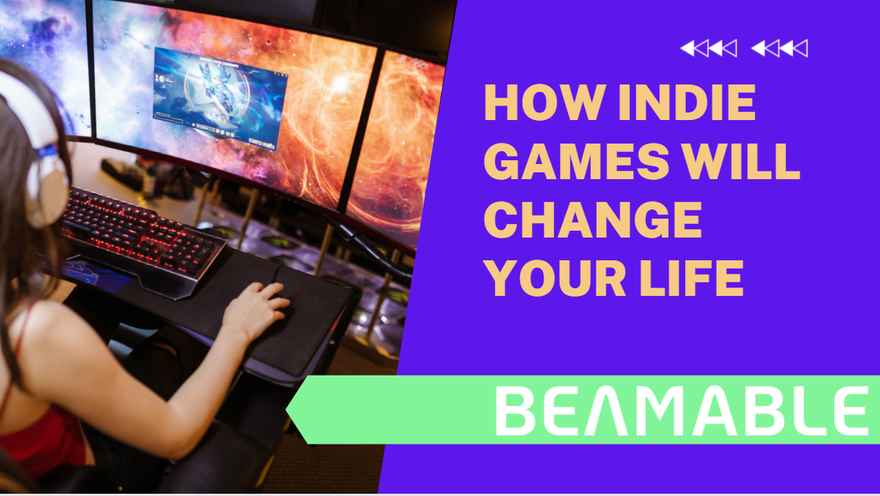
How Indie Games Will Change Your Life
Every creator has experienced the dreaded stage of burnout. For many, it consists of a loss of hope, exhausted resources, and a dry spell of creativity. In the videogame world, many Game Developers recite their heroic triumph over burnout, and their story often ends in a massive success with the creation of a game like Stardew Valley. In this article, we’re going to delve into the process of how indie games will change your life, but it is not as easy as it seems.
Please be advised that the content in this article will comment on Game Dev Unlocked’s Youtube video.
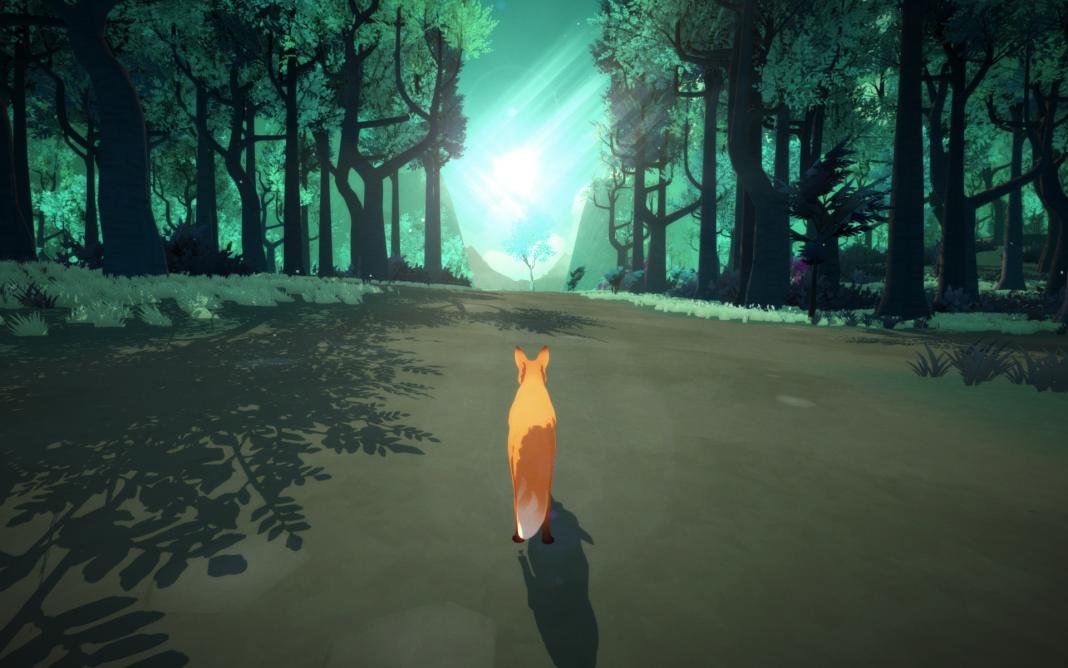
After graduating as a film student, David Wehle had no idea that he would eventually be the creator of a live monetized game. Wehle had started out by modding Star Wars Jedi knight into various settings like casinos, hotels, and movie sets. Although he wanted to follow his dream of video games, he ended up settling for a film company that eventually fizzled out. Wehle started working in the architecture field where he came in contact with, Unity. “As a visual and art-oriented person learning code sounded impossible” (Wehle) He learned from his co-worker a visual scripting tool called Playmaker which allowed him to see the abstract images he was creating in code. Although he felt pressured by code-snobs to not use Playmaker because ‘it will never create a good game’, Wehle did just that he created a game using Playmaker. His first game, Home is where One Starts…, although it was a simple 30 minute game with an in-depth story Wehle had achieved his dream: he released his first game.
But this game was not the reason for his massive success today as an Indie Developer. However, this game allowed him to gain an interview at VOID and allowed for him to become a technical engineer. As someone who started his journey by creating mods for Star Wars: Jedi Knight, he was now officially partnered with Lucas Film through VOID. During this time he realized there were some major mistakes for the launch of his first game, mainly marketing. Through research, learning, and a heightened perspective, Wehle created The First Tree netting $150,000 after its first year on steam. The game was later ported to Xbox, Playstation, and even the Nintendo Switch garnering the game more traction in the industry. Wehle was able to not only leave his job at VOID to become a full-time Indie Game Developer, but he was able to pursue his passion.
David Wehle’s story is extremely important for Indie Devs dreaming of a groundbreaking first game. It’s a rarity, but it does not mean that your first game wont be a success. Indie Games will change your life, the industry will change your life, only if you take the time to enhance your perspective, connect with the community, and research the best approach strategies.
Looking for how to create a successful Indie Game? Read our article series on that here:
2.) Monetization
3.) Timed Events
Be sure to visit David Wehle’s Youtube Channel Game Dev Unlocked to learn more about his story.
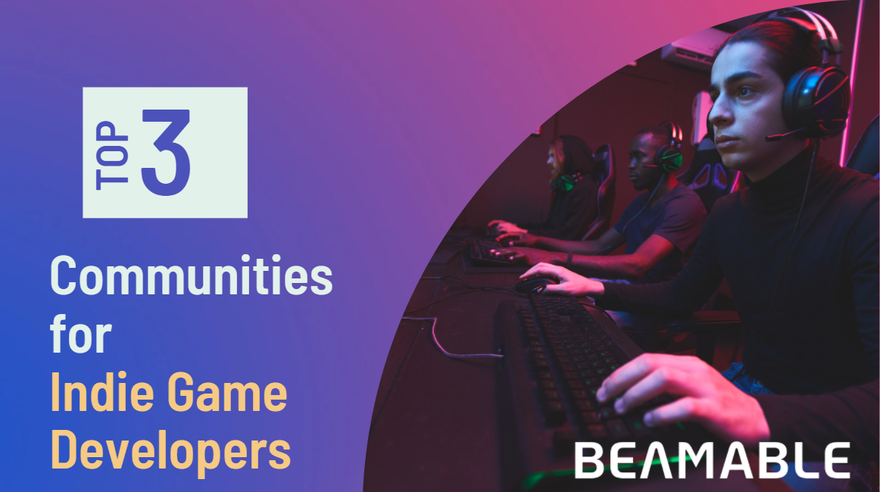
Top 3 Communities for Indie Game Developers
Looking to make friends? This article will act as a comprehensive list of online groups to join in order to expand your network and meet more game makers like you!
Slack

While many companies utilize slack to keep their employees organized and connected (like us!) Slack can also be used to join and create various communities. For indie developers looking to learn more from their peers, indiegamedevs.slack.com, is the place to be. With slack you can start networking immediately into channels and send those in the group a direct message to create stronger connections.

Another fantastic place to meet creators online is through Facebook groups. There are groups for specific interests, as well as broader topics, and of course there are groups created for Indie Developers. These are a few of the communities we reccomend joining:
Indie Game Developers – A public group that has a few subset groups including:
- Indie Game Promos – A place to post promos and teasers of your game as well as interact with others work.
- Indie Game Chat – a casual place to talk to game developers about their game to interact and make friends.
- Game Industry Talent – this is a group to not only self-advertise, but find other talented creators in the community who you could use to create your game.
- GameDev Assets & Tools – this is a fantastic space to find tools and assets other game developers are using that may help you create your game.
Discord
If you’re looking to join a fantastic community look no further than our very own Beamable discord! Join here to connect with us and the developers behind some of our games. Looking for more resources? Have some to add to our list? Tweet us @Beamable and let us know how we can help you!
For more content check out Josh and Erin’s Podcast Episode (#22) where they talk about some of their favorite Indie Games they’ve been playing.
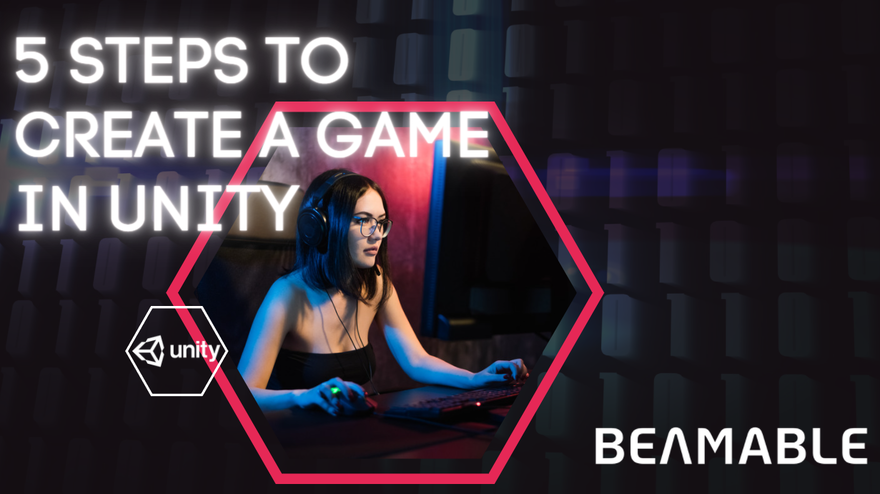
5 Steps to Create a Game in Unity
Here at Beamable, we provide you with all of the tools to create your future game, but what if this is your first game? Working in Unity can be easy while working with our support teams, but if you’ve never launched Unity before this can seem like a daunting task. In this article, you’ll be able to see our resource recommendations as well as advice from Game Developers here at Beamable.
Step One: Download Unity
One of the most important things you’ll need to work in Unity is… Unity. There are four different types of subscriptions, and assuming you’re a first-timer at game creation, all you’ll need is a free subscription. ( Click here to set up your free Unity account)

Each subscription has its perks, and if you’re looking to upgrade use this link to compare each subscription.
Step Two: Research, Research, Research!
While Unity downloads on your computer, you’re going to want to familiarize yourself with the software before diving in. We highly recommend watching Brackey’s How To Make A Video Game playlist that consists of 11 videos that cover the basics of game creation including Programming, Movement, and Camera Flow. ( For more information on how to Zoom a Camera in Unity read our article here.) Brackey’s in-depth How To Make A Video Game series allows for any beginner to become more familiar with Unity before opening the software.
Step Three: Sample Projects Saves Lives
We know what you’re thinking. “When can I START making MY game?!” In order to start your own project, it is important that you’ve not only watched educational videos on Unity but that you have some hands-on experience before diving into creating your dinosaur-princess-zombie-adventure game.
Upon entering the software you will be met with this page:
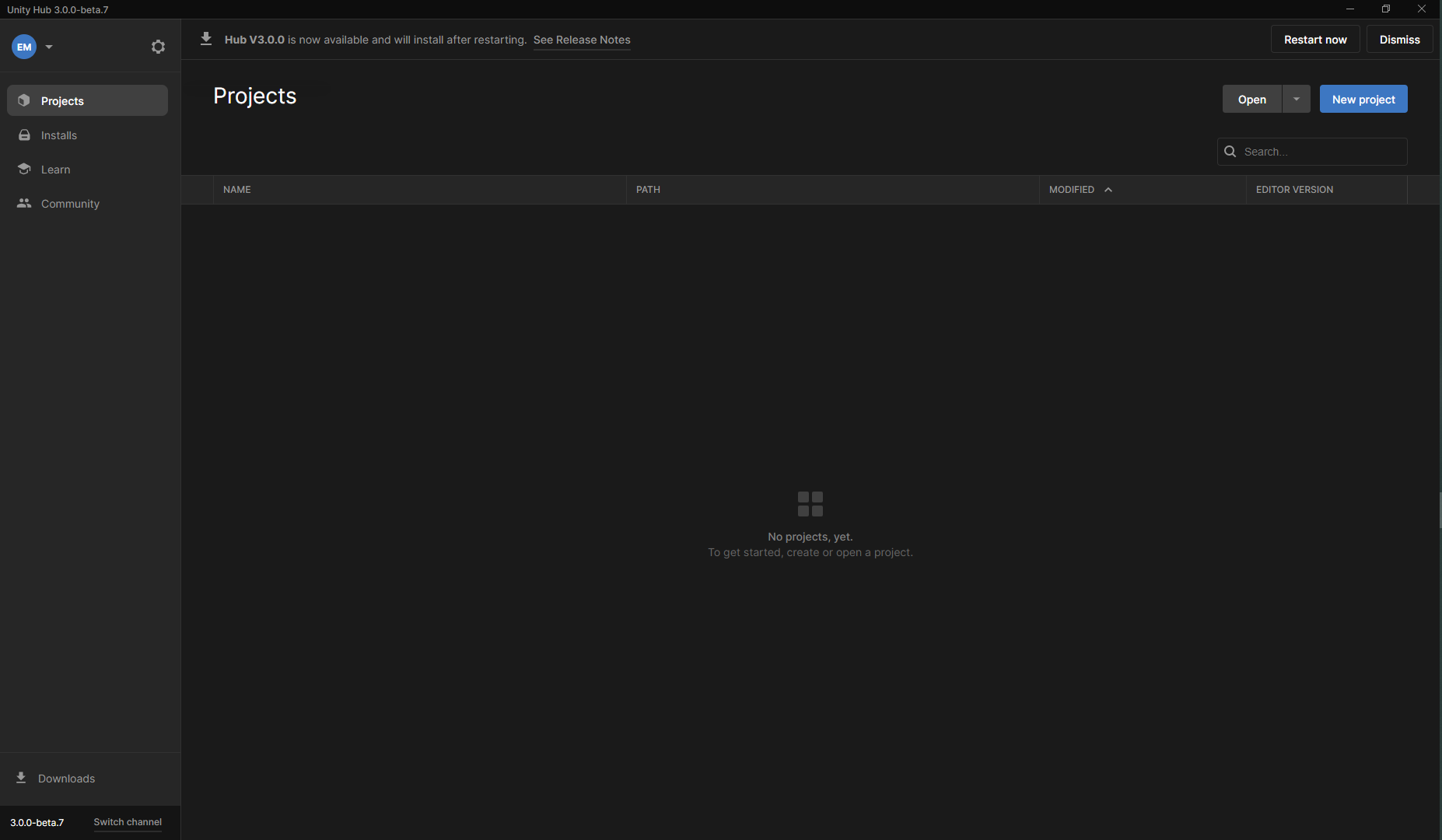
This is your Unity Hub and is where your projects will be stored.
If you look to the left panel you’ll notice there are four separate tabs. One for Projects, one for Installments, one that says Learn, and the final one says Community.
The Install tab will show all content that you have installed into Unity that you are using for your project.
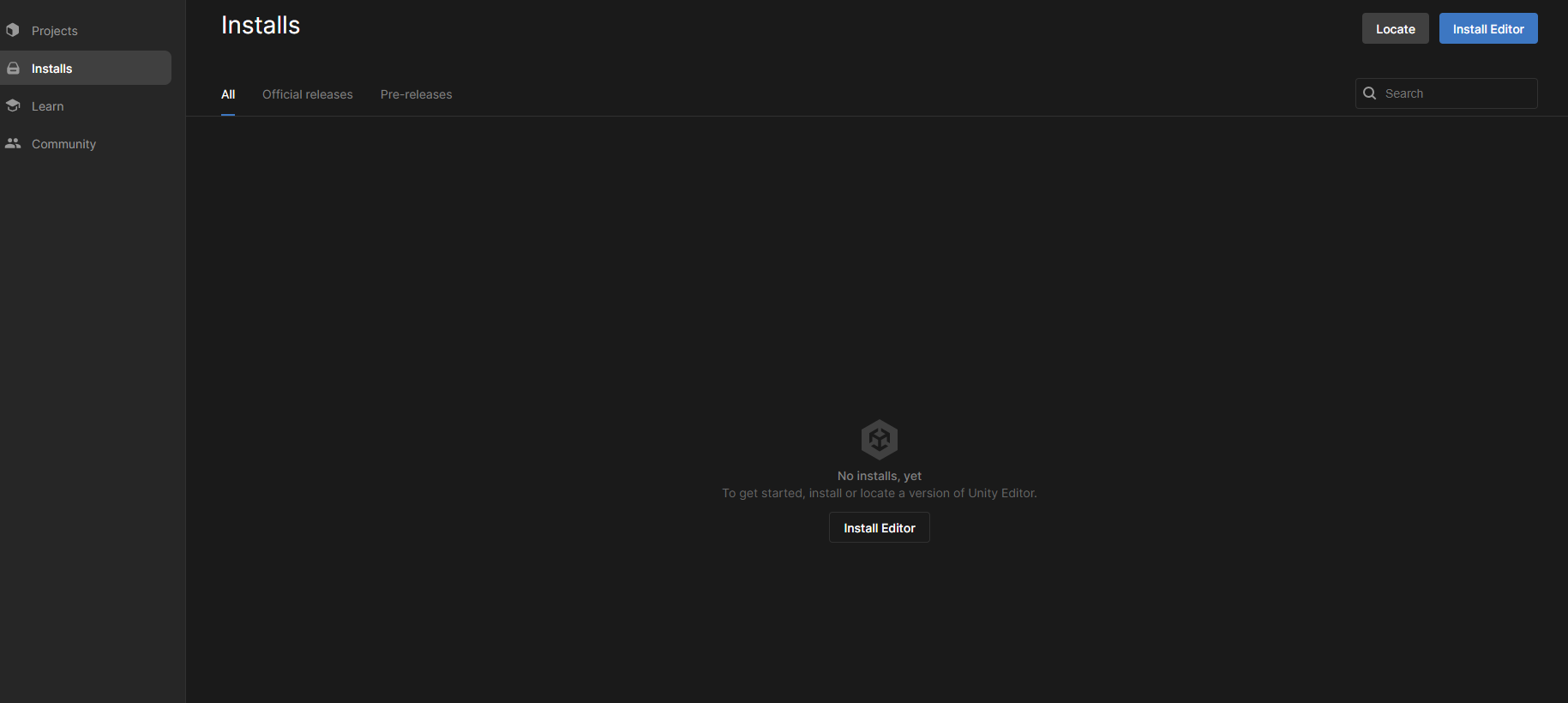
The Community Tab allows for you to connect to the Unity Blog, Answers to common questions, Forums, Live Help, Unity Play, and Unity Pulse. Think of this tab as your helper tab, if you have a question you can ask Unity developers through a live Chat or connect with other Unity creators for inspiration.
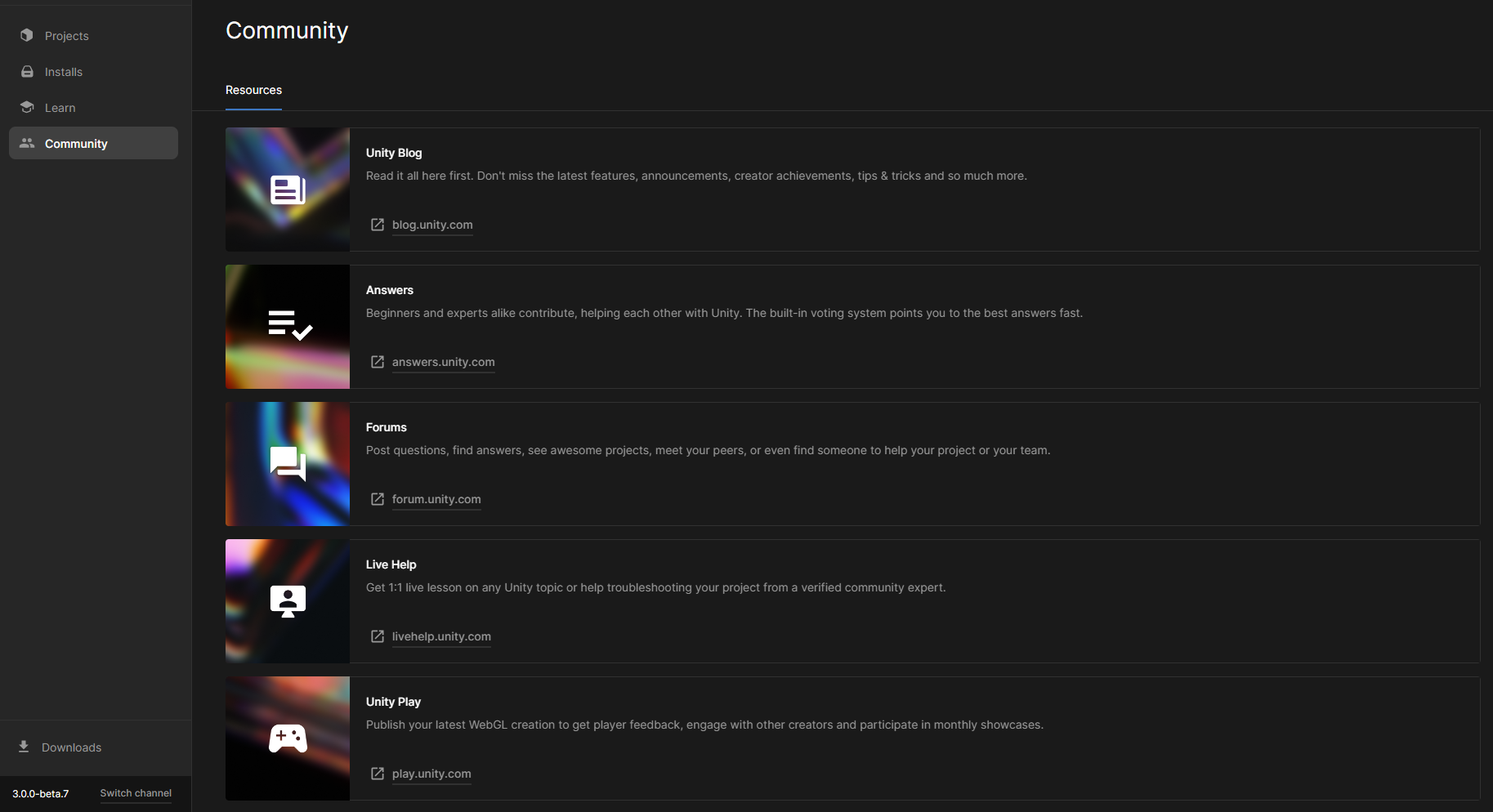
The Learn Tab will be the most helpful tab when starting to be hands-on with the platform. This is what the tab looks like:
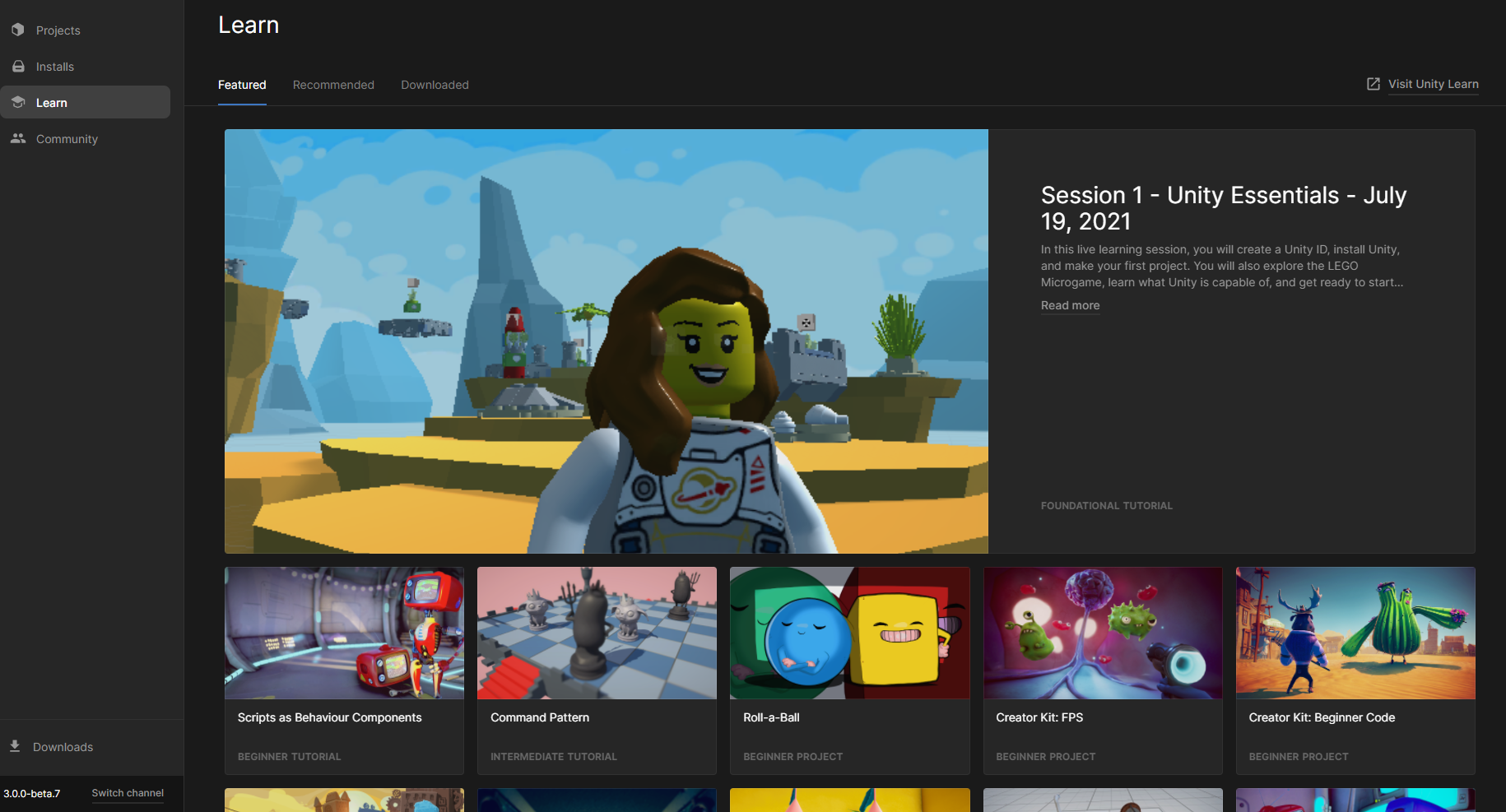
Step Four: Sample Projects
In the Learn tab, you will find an array of projects to choose from. Each project is a tutorial for a specific mechanic that can be used to create your own game. There are various levels to these projects from a Beginner Project, to an Intermediate Tutorial. Each Sample project takes a certain time to complete ranging from 5 minutes to 840 minutes. ( Don’t worry there are various tutorials that are 5-30 minutes long so that you can get to creating your own game faster, although we recommend taking on one of the larger projects before diving into your own) When selecting a sample project to work on, you will be prompted with downloading Unity’s editor ( when using the Unity Hub), make sure to download the most recent version in order to utilize all of their tools!
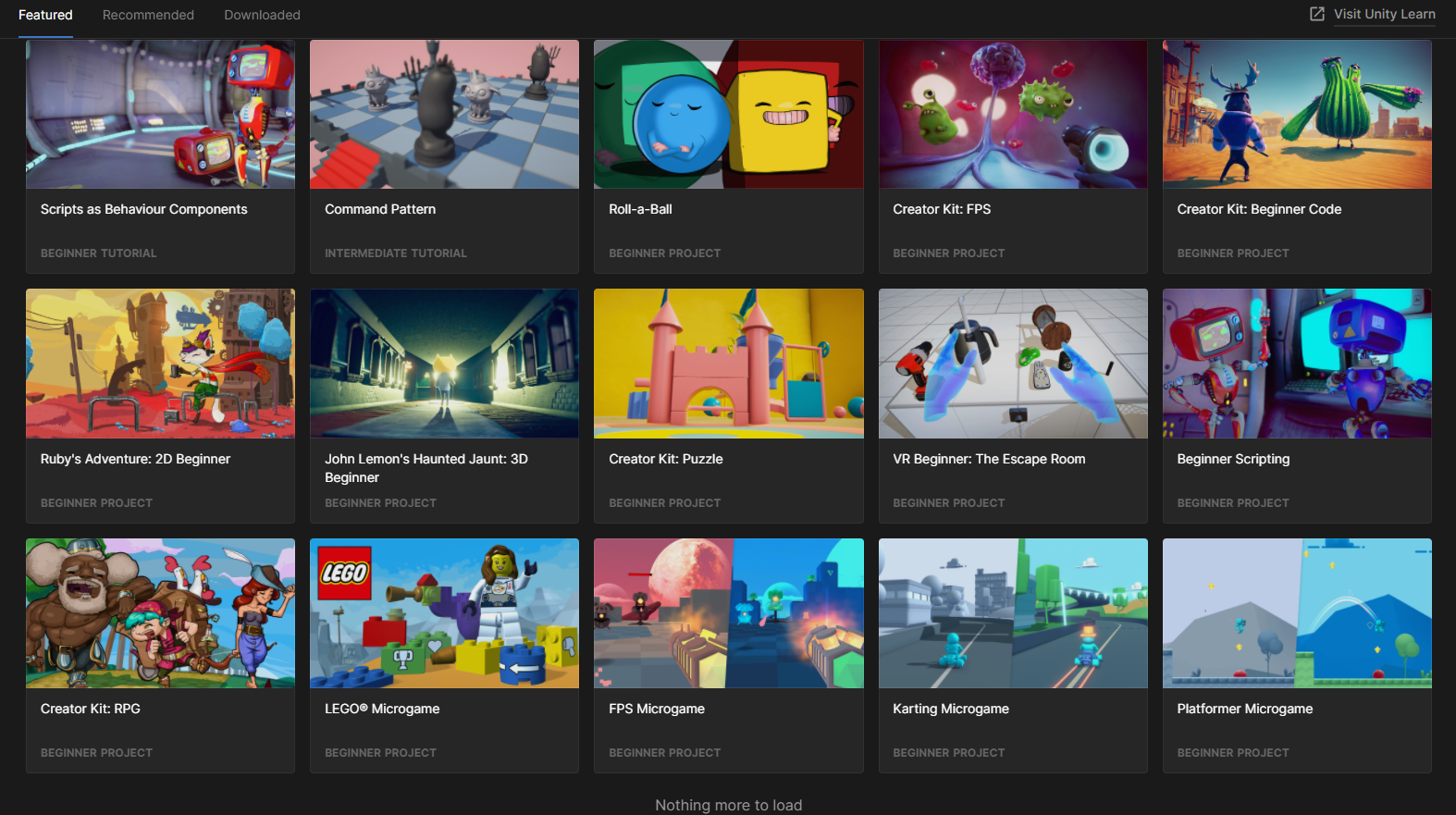
Step Five: Start your OWN Project
It is time young padawan, you are on your way to becoming a Game Dev Jedi! ( and a master of Unity Software!) To start your own project, return to the projects tab and select “New Project”. From here you will be met with a similar page that you have worked with during the Sample Projects.

Here are resources recommended by Software Engineer Chris Hanna:
GDC: https://www.youtube.com/c/Gdconf https://www.gdcvault.com/free “These are a bit more advanced, and have less to do with game-dev specifically, but are great resources for math and computing in general. They’re fun!” – Hanna, 2021
- https://www.youtube.com/c/TheArtofCodeIsCool (a channel about writing shaders)
- https://www.youtube.com/c/SebastianLague
Looking for more?
Join our discord at beamable.com/discord and come and talk to our team, as well as other Unity creators!
Here are our Top 10 Tips for Indie Game Developers
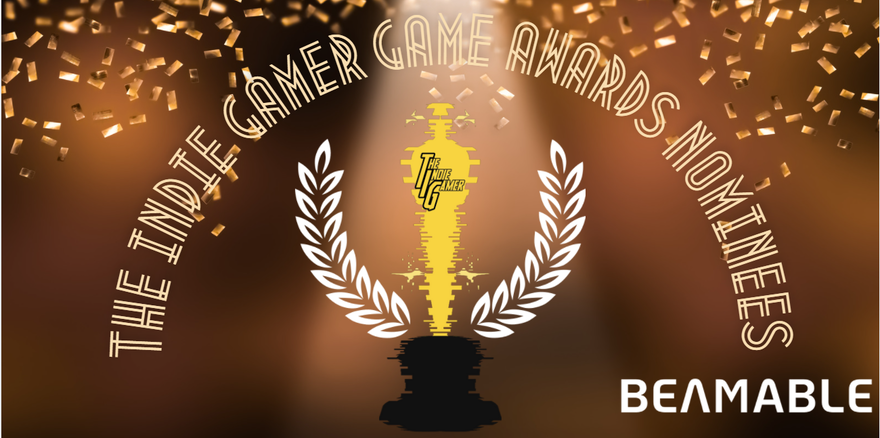
The Indie Gamer Game Awards Nominees
The Indie Gamer Magazine is hosting their 2nd Game Awards on January 8th 2022!
There are ten areas where you can vote for your favorite Indie Game Nominees. The Nominees for each category are listed below:
Most Improved Game
Best Cosplay Creator
Best Soundtrack
Best Voice Performance
Lorenzo Polin
Dewa Ayu Dewi Lorassanti
David Flepp
Mike Bodie
Best Solo Developer
Dani
FYQD-Studio
Aarne Hunziker
Fabraz
Best Early Access
Best Team Developer
Best Storytelling
Best Gameplay
Game of the Year
See your favorite Indie Game from this year on the list? You can vote for them here before the awards on January 8th 2022.
Good Luck to all the Nominees!
Looking for more indie game content? Here’s our Top 3 Games for the Holidays.

Beamable Release Unity SDK 0.18.0
Beamable is happy to announce the release of our Unity SDK 0.18.0. The full changelogs can be found below. Here are the highlights of the release.
Content Baking
Beamable 0.18.0 introduces a new feature called Content Baking. Previously, the first time players launched a Beamable game, they’d have to download every piece of Beamable content to their devices. For games that had significant amounts of content, the download could cause considerable lag time in-game startup speeds. Now with Content Baking, you can bundle an initial version of content with your game, removing the need for users to download anything. You can configure how the content is bundled with the application, choosing either GZIP compression, or no compression. To enable automatic Content Baking, go to the Content section of your Project Settings. Or, to do it manually, use Window / Toolbox / Beamable / Utilities / Bake Content. Content Baking lets your users start playing your game faster, which reduces friction in your onboarding process. No one likes loading screens.
Webhooks and APIs as Content
Microservices can be used to implement features specific to your game’s needs. In Beamable 0.18.0, we’ve added the ability to represent your own [ClientCallable] methods as Beamable Content. Our vision is to allow you to attach these API Content Objects to Beamable events, like when a player claims their Tournament rewards, reads an announcement, or makes an in-game purchase. Today, you can register a custom API Content as a reward in an Announcement. You can use this feature to execute custom logic when a player claims the gifts in an Announcement. For example, you could write a custom C# function that increments an item’s property value, or resets a stat timer for a player. We’ll be expanding the places you can use API Content so that you have as much control over your game’s logic, flow, and state as possible.
Leaderboard Prefab and BUSS Preview
Beamable is dedicated to giving you fully functioning prefabs that leverage entire Beamable feature sets. In Beamable 0.18.0, we’ve added a new Leaderboard prefab that is more performant, scalable, and configurable than the previous. Similar to the old Leaderboard, all you need to do is assign a Leaderboard Content Ref to the prefab, and you’re ready to go. The new prefab is built using our new User Interface technology. We call it the Beamable Unity Style Sheet, or BUSS for short. BUSS is a tool that gives you full control over the styling and theming of your drag-and-drop prefabs while optimizing performance. It uses a Signed Distance Field rendering technology under the hood to give your UI’s modern aesthetics like drop shadow, borders, gradients, and more. We are going to continue building tools for BUSS so that you have easy and powerful ways to customize and personalize your game’s look and feel.
Workflow Improvements
Beamable 0.18.0 is bursting with various workflow improvements and SDK enhancements. In the Unity Editor, you’ll notice that you see less Asset Importing as you enter and exit Playmode. We’ve fixed a bug deep in our Content system that was erroneously causing asset imports.
The schedule editor for Listing and Event Content has also been extended to support more of the cron syntax. In fact, you can now enter your schedules as cron strings directly in the Inspector if you need to express a more nuanced schedule than the UI can represent. If you aren’t familiar with cron, check out this excellent third-party website, https://crontab.guru/.
Beamable 0.18.0 also moves the BeamableEnvironment class from the Editor namespace, to the Runtime namespace. The BeamableEnvironment class contains data about the Beamable package you are using, like what version you have, what API URL you are using, and more. You can use this information to write robust code that responds to Beamable’s version number.
C# Microservice Enhancements
The Microservice feature continues to mature and offer more ways to configure your workflows. In Beamable 0.18.0, you can use the [InitializeServicesAttribute] to decorate a static method as an application startup method. If your method is static, returns a Task or a Promise, and accepts a single IServiceInitializer as a parameter, then it will be invoked exactly once when the Microservice starts up. The method will be called before the service can receive traffic from players, but after a secure connection to Beamable has been established. This means that you can reference Beamable data as part of your initialization. There are a few other Microservice improvements, such as the ability to collapse the log view in the Unity Editor, and the ability to return simple Dictionary types from your [ClientCallable] methods.
Added
- Content can be prebaked with game builds to speed up content initialization
- ScheduleDefinition now supports CRON expression
- Minute support for scheduled listings
- Announcement content includes gifts in addition to attachments. Gifts support webhook calls.
- scheduleInstancePurchaseLimit field to the ListingContent to enable setting a purchase limit scoped to the schedule instance
- SearchStats() admin method is usable from client and microservice code.
- ApiContent classes and execution methods allow you to invoke microservices with data
- InitializeServicesAttribute can now be used over static methods to declare initialization hooks in microservices. Supported signatures are async/regular Task(IServiceInitializer), async/regular Promise<Unit>(IServiceInitializer) and synchronous void(IServiceInitializer). void methods must be fully synchronous — it is not possible to guarantee that any promises started within a void initialization method will have been completed by the time the microservice is receiving traffic.
- Exposed CreateLeaderboard methods in IMicroserviceLeaderboardsApi to enable the dynamic creation of leaderboards in microservices (can take a LeaderboardRef as a template or explicit parameters).
- Folding/Unfolding services cards in Microservice Manager
- Added clearer unsupported message for microservice’s implementation of IAuthService.GetUser(TokenResponse)
- Added support for Dictionary serialization in ClientCallable methods using SmallerJSON
Changed
- BeamableEnvironment has moved to the Runtime to enable SDK version checking at runtime
- Removed unnecessary Unity asset reimport for identical content data.
- list_content Admin Command displays limited results. You can specify start index for list_content command
- Renamed build and run to play buttons in Microservice Manager to be more intuitive
- Can have multiple ConfigureServicesAttribute and InitializeServicesAttribute explicitly ordered via ExecutionOrder property of the attributes.
Fixed
- Renamed Beamable’s iOS plugin for Google Sign-In from GoogleSignIn to BeamableGoogleSignIn to prevent name collisions with public plugins.
- InventoryService.GetCurrent is no longer limited by URI length
- only use InitializeOnEnterPlayMode in Unity 2019.3 or higher
Our changelogs can be found at
https://github.com/beamable/Changelogs/blob/production/com-beamable-changelog.md
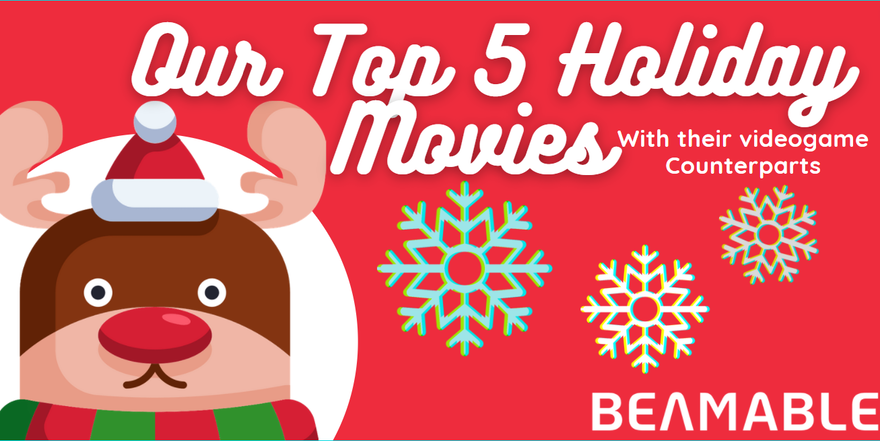
Our Top 5 Holiday Movies with Their Videogame Counterparts
We’re one week out from the Christmas Holiday and we wanted to share our favorite holiday movies! Here is the list of our top five holiday movies.
Elf
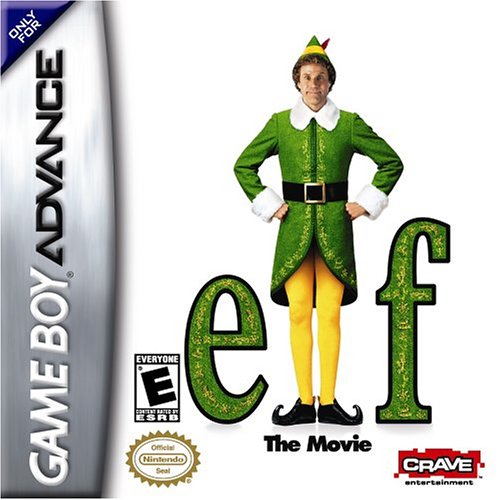
Who could forget the iconic spaghetti and syrup platter? Or the infamous snowball fight? And of course, SANTA! Elf was released in 2003 with Will Ferrell playing Buddy the Elf. Today it still runs frequently during the Christmas Season and remains one of our favorite Christmas Movies. Elf also had a video game created after the movie. This videogame was for the Game boy Advance and allowed players to explore 10 action-packed missions following the movie storyline.
The Polar Express
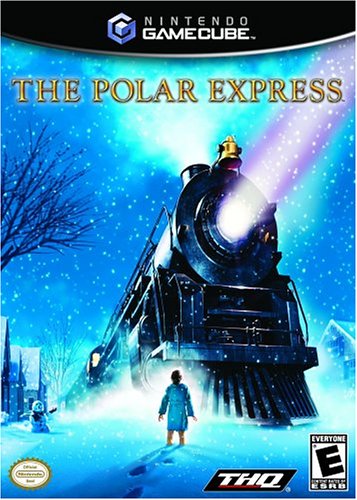
All Aboard! Tickets please, tickets! The Polar Express has the power to have adults believe in the magic of Christmas again. Released in 2004, The Polar Express follows a young boys’ adventure to the North Pole on a magical train filled with other kids and hot chocolate! This film also inspired a videogame released for the Gameboy advance, Ps2, and the Gamecube, where players follow the events of the movie on their own.
Home Alone
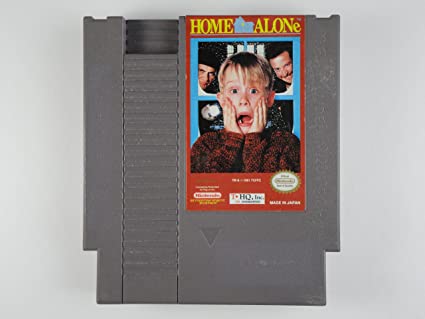
A friendly spider, two robbers, and a kid home alone for the holiday season– what could go wrong? Released in 1990 Home Alone follows a bratty 8-year-old Kevin McCallister whose wish for not having a family seemingly comes true after his family forgets him at home for their trip to Paris. This classic holiday movie has an interesting videogame paired with it. Released for the Nintendo Entertainment System (NES), the Super Nintendo Entertainment System (SNES), the Master System, Sega Genesis, Game gear, Amiga, and MS-DOS platforms. The gameplay of the game follows Kevin McCallister using household objects as traps and weapons to prevent Harry and Marv from burgling his home.
Die Hard
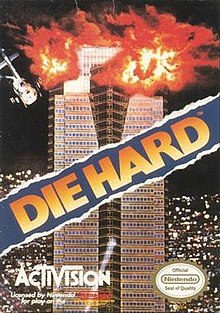
Yes, there is no debate Die Hard is a Christmas Movie. As New York City policeman John McClane is visiting his estranged wife and kids on Christmas Eve, he joins her at a holiday party in the headquarters of the Japanese-owned business she works for. Just as the fun begins, the party is crashed by terrorists taking over the high-rise and keeping the guests as hostages. Released for the Commodore 64, the TurboGrafx 16, and for the Nintendo Entertainment System (NES), Die Hard ( the videogame) allows for players to rescue hostages and battle terrorists from a top view perspective at Nakatomi Plaza.
The Santa Clause Movies
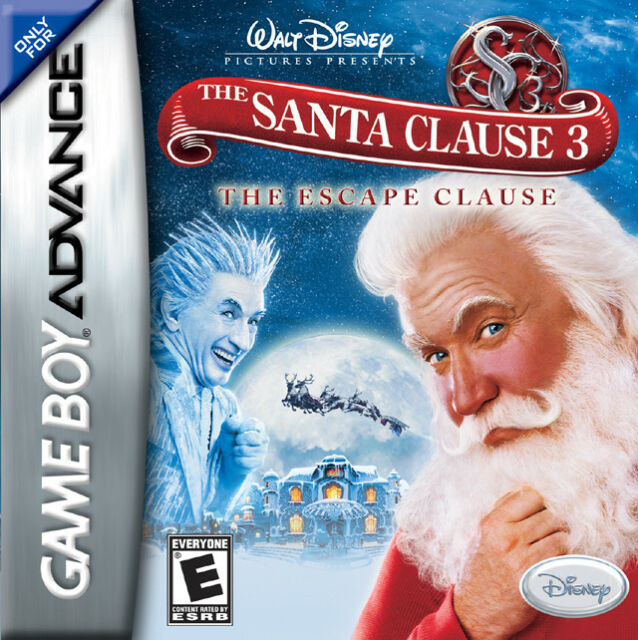
All of the Santa Clause Movies, starring Tim Allen as Santa, are essential to the holiday season. In each of these movies, Santa fights to save Christmas and ensure the safety of the North Pole from various outsiders. For the Santa Clause 3 movie, there was a videogame created for the Gameboy advance that allows players to relive memorable moments from the film.
Still unsure what to get your favorite gamers and game makers this holiday season? Here’s our Beamable Gift Guide created using our workers’ favorite picks.

Beamable Gift Guide: Our Top 10 Picks for 2021
Looking for that perfect gift for your fellow game creator? Wondering what tools you might need to start creating games? We asked our co-workers here at Beamable what’s on their list this year. Below are our top 10 picks for gifts this holiday season. 1.) Blood, Sweat, and Pixel: The Triumphant, Turbulent Stories Behind How Video Games Are Made. by Jason Schreier $12.99 USD
Its always important to have an understanding of the world you want to work in before getting hands on with creating. One of our workers here at Beamble suggested this book to allow for people to get an inside look at the highs and lows of game creation.
2.) Aeron Chair $1,645.00 USD
While our next item is expensive, it’s for good reason. A worker here at Beamable explains their recommendation: “ Game Makers, and everyone whose work includes a lot of siting at computers, will get a lot of comfort ( and possibly healthier sitting!) from a really good chair. The Herman Miller Aeron is super expensive, yes, but you can often find discounts and perfectly good refurbished units. Would you rather have a really good $1500 chair for 20 years, or ten merely adequate $150 chairs that you need to replace every couple of years?”
3.) Makey Makey $49.95 USD
Looking to use Bananas as controllers for your next game? Now you can with Makey Makey! Try out new ways of learning the mechanics and circuits of controls with video games. 4.) Pico-8 $14.99 USD
Meet Pico-8! This downloadable fantasy console allows for you to create small games in an 8-bit style. 5.) A Rubber Duck $2.24 USD
Yes, we’re serious. This Rubber Duck is not all its QUACK-ed up to be. The Beamable worker that recommended this explains the mythical powers of the duck: “ When you’ve been staring at the same block of code for hours and hours, sometimes you just need to explain the problem to a friendly duck. The duck will know what to do.” We like to call this rubber duck debugging 6.) Camtasia $299.99 USD
Already have a fantastic game? Looking to show off gameplay or make an epic trailer? Camtasia, although on the pricier end of our list, allows for creators to easily create content to promote their games. 7.) Playdate $179.00 USD
Playdate is currently on pre-order, and would be a great gift for a gamer with a nostalgic mind. Playdate allows for any game-dev to create games for their Playdate and play games created by other owners of a Playdate. 8.) Elgato Stream Deck XL– $249.99
Looking for new ways to amp up your setup? Whether you stream or not, a stream deck can help you easily create projects in an organized fashion 9.) SwissGear Laptop – $89.99 USD
The worker that recommended this item explains that “A sturdy backpack with plenty of room for a laptop, books, mobile devices, cables, and peripherals is essential if you are making games on the go. SwissGear makes really solid bags that are comfy to wear and carry.” 10.) Another Castle: Enjoying the Journey – $0.00 with audible sign up/ $9.99 paperback
Our last item on this list is created by our very own Josh Schmidt! In Josh’s book, Another Castle, he outlines his personal journey into working in the games industry and the importance of enjoying both the highs and the lows. Josh’s book is available for free when signing up with Audible, and is $9.99 when purchasing paperback from Amazon. We hope you’ve enjoyed the roundup of our top 10 gift ideas for this holiday season. For more ideas take a look at last year’s round-up here: https://www.beamable.com/blog/beamable-gift-guide-for-game-makers-2020
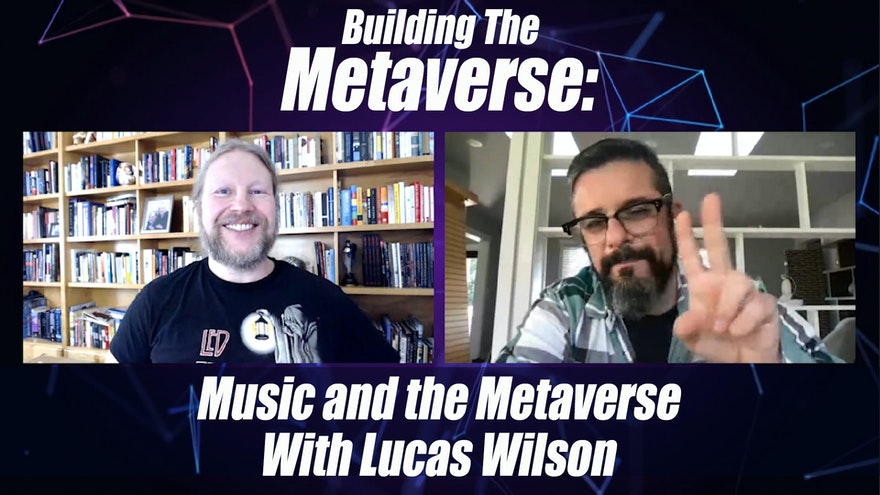
Jon Radoff Building the Metaverse With Lucas Wilson
Music and the Metaverse with Lucas Wilson
If you’ve wondered how music will fit into the metaverse you don’t want to miss this episode of Building the Metaverse with Jon Radoff. This fireside chat with Lucas Wilson touches on how music is already playing a part in the metaverse. Lucas has worked with Post Malone, Billie Eilish, and more to bring their music to more fans via the metaverse. You will also learn how NFT’s are shaking up the music industry and putting more money in the hands of artists.
If you have any questions for Jon please leave a comment on the video.
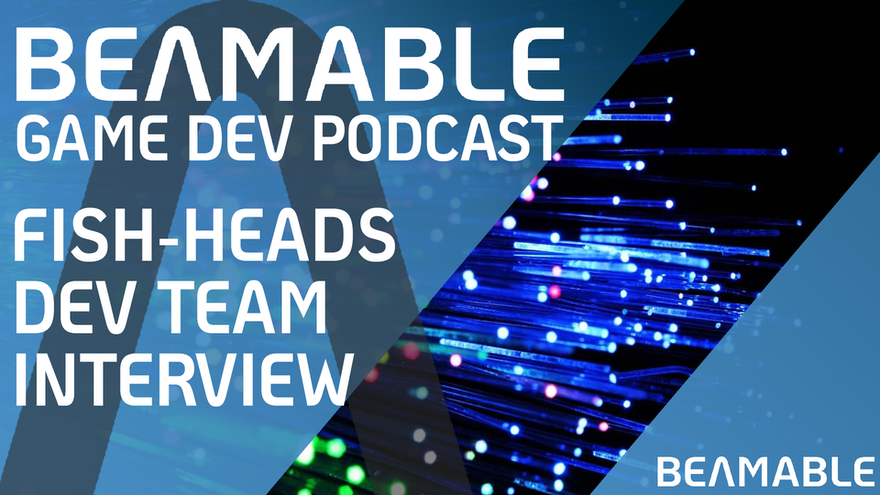
Interview With The Team Behind Fish Heads, Beamable Game Dev Podcast Ep.18
Quadratron Studios team interview
Quatdratron Studios joined Erin and I for the latest episode of the Beamable Game Dev Podcast. Earlier this year Erin connected with this team at the Too Many Games convention. She set the high score on Fish-Heads and won some posters. The main topic for this episode was Fish-Heads. We were joined by most of the team behind the game and they shared so great insights into the development of the game. If you enjoyed this episode make sure to check out our other episodes.
Take a look at all of Quadratron Studio’s projects here.

Top 3 Games for the Holidays
During the Holiday Season, we all have that one person who has every game to ever exist, plus the remastered-deluxe-ultra-rare edition. As you pursue the online aisles of Amazon, we bring to you three games on our wish list this holiday season.
Starting at number 3 we have Fobia, a HARD puzzle-platformer game. ( did we say hard? We mean HARD!!) If you’re looking for a challenge this game is for you. With stunning aesthetics, beautiful creatures, and an environment where everything can kill you — including your own two feet.
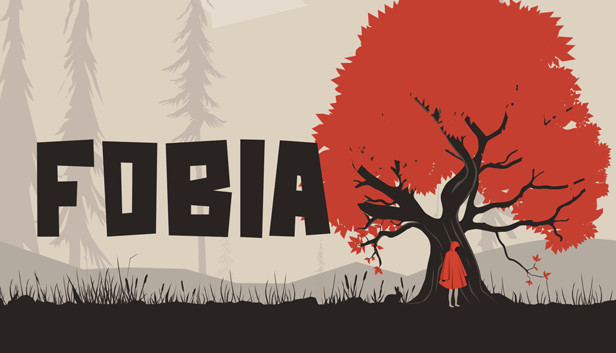
At number 2 we have The Last Campfire. Illuminated by stunning flames, orbs, and glowing water, The Last Campfire is a puzzle game with a story to tell. As you traverse this immersive world you’ll stumble upon lost souls and attempt to reunite them with their path. By completing puzzles you’ll achieve the impossible and may just reunite with your own path.

At number 1 we have Gris, a stunning platform adventure game. As you traverse this mystical world you’ll uncover new abilities, friends, and bring color back into the environment. The story is told through the colors, environment, and music throughout the game.

Each of these games are available on Steam, Nintendo Switch, Playstation 4, and Xbox One.
Enjoy this list? Looking for your favorite game, or maybe YOUR game? Tweet us @Beamable with your recommendations.
Here are more games we’ve enjoyed highlighting: Cozy Games on Our Radar

Top 10 Tips For Indie Game Developers
New to game creation? Not sure exactly where to begin? Here are our top ten tips Game Developers want new Indie Game Developers to know starting out.
Tip #1: Start Small
While creating your first game is exciting, invigorating, albeit also exhausting, don’t let your rush of creativity get the best of you. While you may have a million and one ideas to push into a project, its better to avoid starting big projects while you are a newbie.
You’ll have the time to cultivate and refine your ideas over many projects, so relax and take things one at a time.
Tip #2: 1 Step at A Time.
Small steps eventually combine together to output a polished product. By focusing on the current step and phase of the project you are in you are more likely to not only complete the project but also avoid burn-out.
Tip #3: Get a foundation.
You’ll need some knowledge and experience before diving straight into a new project. Luckily here at Beamable, we have engineers and developers eager to connect and consult on your various projects and aspirations. If you’re looking for advice join our discord at www.beamable.com/discord to chat with us.
Tip #4: Have a goal in mind
It is extremely important to Always keep your audience in mind. While this is your game, they will be the ones playing it and you want to ensure that the player relationship with the game is the best it can be. Make sure to incorporate lifestyle changes, updates, and camera angles that can help the quality of your game. If you’re unsure on how to utilize camera angles to the fullest read our article here: Zooming a Camera in Unity
Tip #5 Your plans are going to change
When Animal Crossing was first created, it was named Animal Forest. Our point is, plans change, games evolve, you and your project will grow alongside one another. While having a dinosaur named Larry shooting laser beams out of its eyes is a super cool idea, it may need to be put away for your cozy-home-deco game.
Tip #6 You’re going to need help
Glitches, Bugs, and Online issues are not only common, they’re normal. When you’re met with these struggles do not be afraid. You have access to many willing communities through Reddit, Twitter, and Discord that are more than willing to help you with these technical issues. Don’t be afraid to reach out!
Tip #7 Recognize when something just isn’t worth it.
Larry the laser beam dinosaur is super cool, but his shading is wrong, every time we try to put him in the game he glitches out, and he’s slowing production time by a month. Maybe Larry isn’t worth it, and that’s okay. Some things are meant for later projects, don’t try to squeeze something in that is not fitting into the bigger picture.
Tip #8 You Might Fail, and Fail Hard
Larry the dinosaur? Yeah, he just erased 45% of your progress. How? We don’t know. It happens, and it is not fun, but it is very normal to experience failure in a project. Keep pushing and realize every failure is an opportunity to learn from for your next venture.
Tip #9 Don’t Give Up! Remember What You’re Trying to Make
With every obstacle you face, there’s a new opportunity for something to be learned. Sure the water mechanics in your game have failed over and over again, but now you know how to fix it and make waterfalls. Every experience can be learned from in-game creation. Just ask our devs!
Tip #10 Have Fun!
This is not just a project, this is your passion. Creating games can be an extremely fun and fulfilling process if you let it. Be inspired by the games you love, and the community that surrounds you. We’re sure as heck inspired by you.
Looking for more tips? Here are some insightful articles below:
How to Add a Leaderboard To Your Game
Do You Have a Program to Build Videogames?
Code Your First Video Game in 6 Steps!
Get Started on your Game and Download Beamable Today:
https://www.beamable.com/free

Scalability and Volume with Beamable
Searching for a platform that can handle volume and large-scale projects? Beamable can do both! Over the past few months, we’ve noticed a trend of creators struggling to find support for high-volume and large-scale projects. Here at Beamable we have the team to provide you with the best support in improving your scalability and supporting high volume.
Volume
We strive to support high volume on our platform. A large amount of Concurrent Users (CCU) is something we can support for your game. When your Daily Active Users (DAU) evolve into Monthy Active Users (MAU) it’s important to ensure that your game is supported on every front. Since Beamable is built to be scalable, we are able to grow our serves flexibly and support DAU, MAU, and CCU with no cap!
Scalability
By utilizing various servers, Beamable is able to ensure your game will work as anticipated. Being able to add or remove servers when the traffic grows or shrinks allows us to mitigate and track traffic passing through our servers for your game.
More Features
To learn more about our recent updates to our program, we wrote about our latest release in this article.
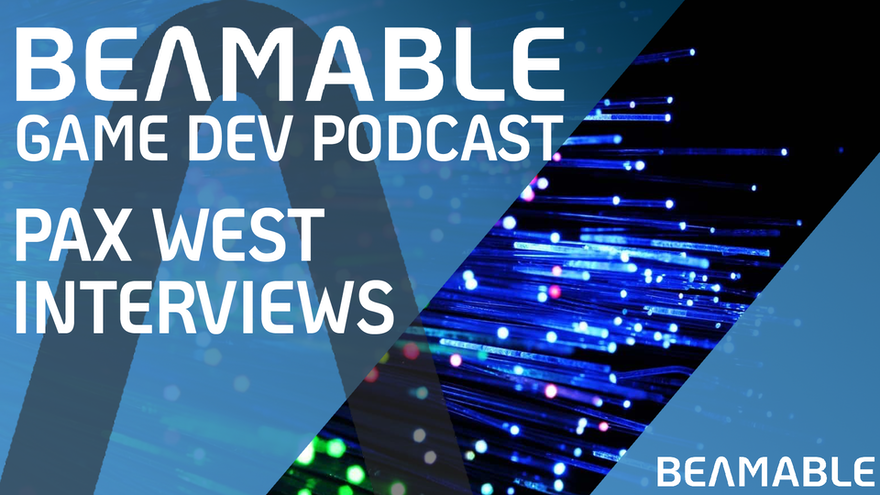
Interview with PM Studio and Grave Rave Games, Beamable Game Dev Podcast Ep. 16
Live from PAX West with PM Studio and Grave Rave Games
This episode of the Beamable Game Dev Podcast is live from PAX West. PM Studio shares some of the amazing games they are publishing. Paul from PM Studio shares some great tips for pitching a publisher. You will also hear from Grave Rave Games and learn about their game Squish. It is Tetris meets Smash Bros to create a fantastic party game that will be playable online. I hope you enjoy this interview and you can catch our last episode here.
To learn more about Beamable check out some of our sample projects here.

Cozy Indie Games on Our Radar
Grab a blanket and a cup of coffee and get cozy with these indie games.
As we near closer to the holiday season, there is a multitude of cozy games to wishlist releasing in 2022. In this week’s blog post we’re revealing three games that have caught our attention.
Rainboy
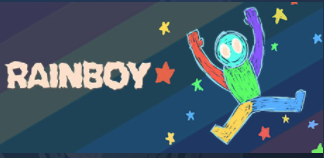
Our first game is Rainboy, a precision platformer displaying hundreds of levels. Cast into the universe knowing nothing prior to the world, you’ll explore the seven wondrous worlds and adventure through sleepy pandas and treacherous bosses. The brightly lit aesthetic, and wondrous sounds, will force you to search for your purpose in the world and what it means to be alive.
Aka
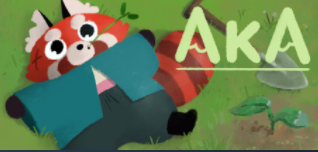
The second game that caught our eye is Aka. With hand-drawn elements, you’ll traverse a small open-world game where you can feed baby dragons, nap on a giant monster, and take care of the environment that surrounds you. As you explore you’ll be reminded of demons from your past you try to forget and are forced to confront.
Naiad
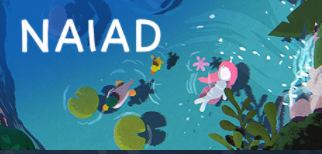
Our final cozy game for this week is Naiad. Setting to release during Q2 of 2022, Naiad is simply “A game about nature.” Curated in a beautiful art style, you’ll be able to sink into the clarifying waters to relax and explore various environments.
For more information on these games follow:
@Sealllio for Rainboy wishlist here: https://store.steampowered.com/app/1758250/Rainboy/
@BarthelemyNamra for Aka wishlist here: https://store.steampowered.com/app/1591450/Aka/
@HiWarp for Naiad wishlist here: https://store.steampowered.com/app/1813860/NAIAD

B-Real Monster Buds from the creators at LDRLY.
Unleash your inner budpreneur in B-Real Monster Buds!
Soar higher than you’ve been before with the latest game from LDRLY. Grow your plants, make cash, and take the throne of the finest pot botanist around in B-Real Monster Buds.
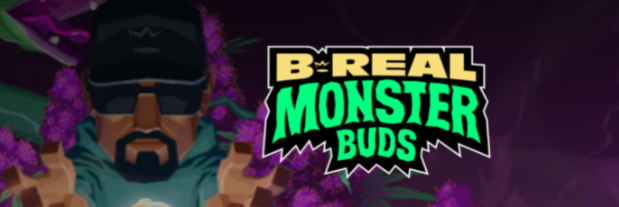
Multiplayer Connectivity
With multiplayer connectivity, you’ll be able to grow the best buds with your best buds from Facebook! Earn rewards from each in-game event to boost your lab to the next level! As you level up you’ll unlock new rewards to achieve and events to explore.
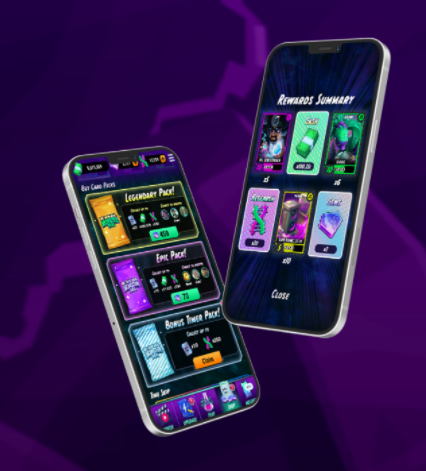
Exclusive Features
Hire and manage your crew and collect new cards and gain more customers! Grow insane strains and make insane cash by the gram! B-Real Monster Buds will have you explore the wild events of B-Real and his alter ego Dr. Greenthumb; as well as interact with the coolest game characters out there. B-Real Monster Buds is sure to take your breath away.
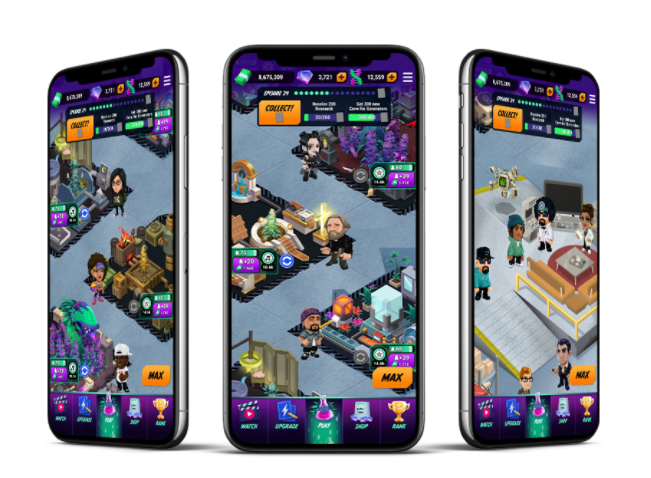
B-Real Monster Buds has dedicated customer support teams working closely with the players; LDRLY invites you to contact LDRLY directly through each game’s help function. More information about B-Real Monster Buds can be located here. All images were taken from LDRLY.

Beamable Expands 2021 Funding to Over $10m to Accelerate Platform for Live Games
Beamable has expanded its equity funding to over $10M
Read the official press release at PRWEB
Beamable has expanded its equity funding to over $10M. New investor Gutbrain Ventures joined a round led by Companyon Ventures and GrandBanks Capital, with participation from other current investors including Defy. Beamable provides game makers with the tools to deliver and continually optimize their live games with infrastructure, features, and content.
Beamable has significantly expanded its platform over the last year based on product input from over 1,000 game developers and the interactions of over 10 million players. The growing, globally-distributed team now has 41 people who have built a platform to make live games easy to build, operate and scale. Unity developers can drag-and-drop social features, virtual items and dynamic content updates to their games with simple, visual tools.
“Making a live game should be as easy as publishing a web page,” said Jon Radoff, CEO of Beamable. “Although engines like Unity and Unreal have made it easier to author 3D experiences, the workflow and infrastructure to enable games with sophisticated economies and communities has lagged far behind. We empower game makers of all sizes to go directly from their imagination to a game of any scale.”
Beamable’s backend is based on microservices, an architecture used by some of the largest online companies including Shopify and Netflix. This architecture equips studios to rapidly scale to millions of active players while retaining a high degree of agility in their game design–without worrying about the high cost of ownership related to server engineering and DevOps.
“The best development platforms are built by teams who have deep domain experience,” said Bob Davoli, Managing Director at Gutbrain Ventures. “The Beamable team clearly understands the needs of game developers. We were impressed by how the company is creating an authentic culture of making game studios successful.”
To learn more about Beamable, visit https://beamable.com — a complete media kit that includes images and the company’s vision for live games may be found at https://beamable.com/media.
About Beamable
Beamable fights for the game makers of the world by helping them turn their game ideas into thriving businesses with a low-code, serverless Live Game platform. Beamable enables anyone who builds, updates, and maintains a live game to save time and earn more money. Beamable is a global, remote-first company led by a team of game-industry and enterprise-technology veterans, backed by investors including Companyon Ventures, GrandBanks Capital, Defy and Gutbrain Ventures. For more information visit https://beamable.com.
About Gutbrain Ventures
Gutbrain Ventures is an independent venture firm that invests primarily in software companies and has been making investments for thirty years. Gutbrain looks for passionate and driven founders with innovative and disruptive ideas. Managing Director Bob Davoli has appeared on the Forbes Midas List five times.

Beamable Update 0.17.0 Update Roundtable, Beamable Game Dev Podcast Ep. 15
Meet some of the team behind Beamable update 0.17.0
In the Beamable Game Dev Podcast episode 15, we get to meet some of the team behind the latest update. Each member of the team shares what they are most excited about with Beamable 0.17.0. Chris’s cat also makes an appearance so make sure to check out the video. You can find the complete rundown of Beamable update 0.170.0 here
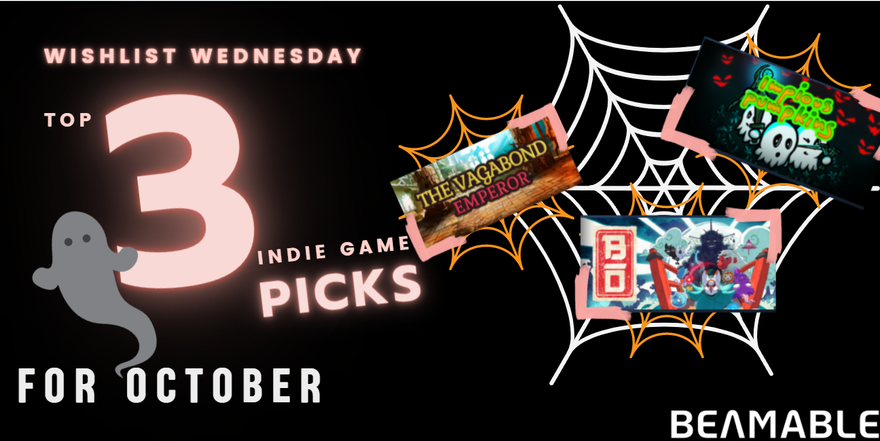
Wishlist Wednesday: Top 3 Indie Picks For October
This week we’re celebrating Wishlist Wednesday in a new way. For the first time, we’re showing you our top three picks from games that have been interacting with us for the past few Wishlist Wednesdays.
Starting at number 3 on our list, Impious Pumpkins is a Real-Time-Strategy game where you fend off hordes of evil pumpkins attacking you and your ghost pal’s resting places. This game will give you pumpk-in to talk about.
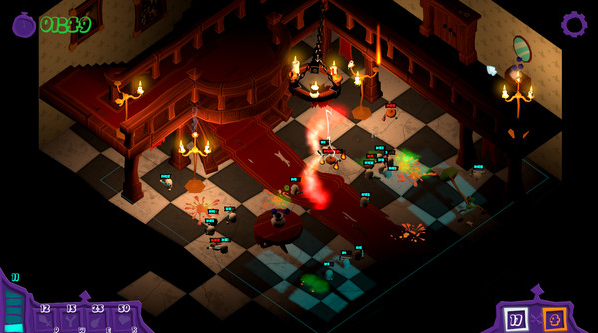
At number 2 on our list awaits The vagabond, Emperor. With the perfect timing of a curse, you’ll be able to traverse the life as a vagabond working to become an emperor. Explore dungeons and fend off armies to create your empire!
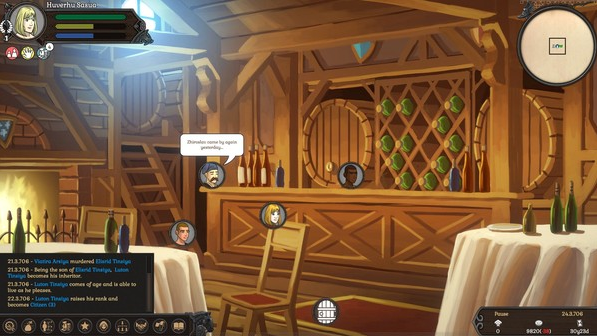
Bo sits at our number one spot this month. Showcasing beautifully hand-drawn animations laced with the beauties of Japanese folklore, you’ll traverse this mysterious world as a tiny fox using its earring as its weapon.
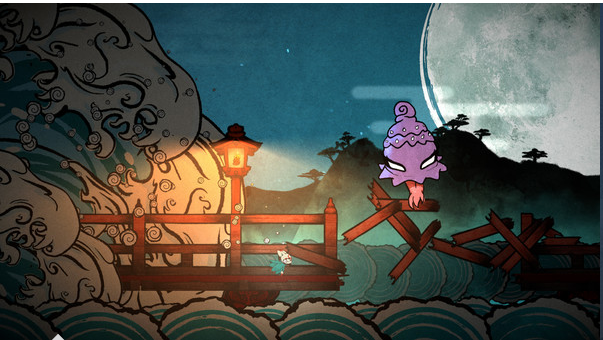
Each of these games is available to pre-order on Steam! Check them out in our personal Steam wishlist library. Wishing your game was mentioned or not seeing your game on our Steam wishlist? Let us know on Twitter @Beamable
Steam Wishlist Link: https://store.steampowered.com/wishlist/?snr=1_wishlist_4__12

Fly Johnny Fly Dev Mattlekim Interview, Beamable Game Dev Podcast Ep.14
Creating and publishing games
If you are early in the game dev journey this is an episode you won’t want to miss. Mattlekim shares some great insights on game development. He shares where he finds inspiration when creating his games. How to prototype games and use your friends to test the games to see if they’re any good. Creating games isn’t all he does, he has also been working with some friends on the publishing side. Helping them get their games on the Nintendo Switch. His latest game, Fly Johnny Fly will be released soon so keep an eye out for it.

Spoopy Jam Publishers Panel Announcement
Game Jolt Announces Spoopy Jam Publisher Panel
With all the fun we’re having in Spooktober and Spoopy Jam with Game Jolt, we’d like to welcome more to the party! Game Jolt announced that Team17, Developer Digital, TLM Partners, Ludus, tinyBuild, Lunar Owl, and Amazon Games are joining the Spoopy Jam team!
Spoopy Jam allows creative minds to use their magical powers and formulate a cute and spooky multiplayer game within 15 days. In addition to a prize pool of $10,000, 3 winners will have the opportunity to pitch their creations to the Spoopy Jam team of investors for funding and publishing their game. The winners will also have the chance to play their creation on the home page of Twitch. tv!
Remember to follow us @Beamable on Twitter for continuous updates throughout the duration of Spoopy Jam.

Beamable Release Unity SDK 0.17.0
Beamable is happy to announce the release of our Unity SDK 0.17.0. The full changelogs can be found below.
Here are the highlights of the release.
Microstorage Local Preview Beamable 0.17.0 brings a brand new database capability to the microservices feature. In addition to creating C# Microservices in Unity, now you can create and manage a Mongo database from the Microservices Manager window. You can create and restore database snapshots, explore your data using Mongo Express, and filter database logs from within Unity. This feature is only available in preview, so you’ll need to enable it in Project Settings / Beamable / Microservices / Enable Storage Preview. Once you’ve enabled the preview feature, you can create a Storage Object from the Microservice Manager, configure a Microservice to depend on the Storage Object, and then automatically receive a pre-built and connected database client in your Microservice code. You have full access to the Mongo C# Driver, so you can take advantage of the powerful capabilities Mongo provides. While the feature is in Preview, you won’t be able to deploy any databases, but you can get an early look at the workflow and capabilities of Beamable Microstorage.
Microservice Enhancements
We’ve improved the Microservices feature in several ways. Your ClientCallable methods can now return Promise types. You can also return List types directly from a ClientCallable as well. The Microservice Manager window has a few workflow improvements, such as being able to see Remote-Only services, and tailing service logs more accurately. The final major enhancement in Beamable 0.17.0 is the addition of container-level health checks for deployed Microservices. If you have deployed a Microservice, and for whatever reason any particular cloud instance becomes unresponsive, the instance will automatically restart. This will help ensure that your Microservices have maximum uptime.
More Authorization Support
Beamable 0.17.0 adds support for two new seamless player log-in methods; Steam and Device authentication. If your player is already logged into Steam, they can associate the Steam login with Beamable effortlessly. Similarly, Device authentication registers your player’s unique device id to Beamable. You can use Device authentication to help remember player data through app reinstall events. In addition to these new authentication schemes, players can now also unlink a third-party authorization. The RemoveThirdPartyAssociation method in the AuthService will let players remove an association from Steam, Facebook, Google, Apple, or their Device id.
Schedulable Events, Listings, and Content Improvements
The 0.17.0 release includes the ability to schedule Events and Listings on a recurring basis. Events have traditionally been one-off competitions where players can participate and receive rewards based on their performance. Now, you can configure your Event to repeat on an ongoing basis, or to repeat a specific number of times. Similarly, the Beamable Commerce capability lets you assign active periods to store Listings. Now, you can customize when a Listing is active, schedule it to repeat on an ongoing basis, or a specific set of dates and times. The Event and Listing schedules both come with easy-to-use scheduling workflows, but both use cron strings under the hood. If you need to create an advanced schedule, you can alter the raw cron strings directly from Unity, publish your content, and you’ll be all set. In addition to schedulable Events and Listings, the Event system now supports player cohorting.
Workflow Improvements
This release includes several workflow improvements around the development process. When you use the Beamable 0.17.0 Admin console, you’ll be able to see command suggestions, use the Tab key to autocomplete and cycle your command inputs, and use the Up/Down arrow keys to scroll through your command history. We’ve also added a variant of the Promise class that doesn’t require a generic type. Lastly, all of our subscription-based SDKs have a new method called Fetch that gives you the raw network data. You can use it to get direct access to the API results without going through the Beamable subscription layer.
Added
- Device id authentication support
- Steam third party authentication support
- Auto-complete text feature for AdminFlow prefab
- New default currency.coins currency that demonstrates client writable currency.
- Ability to remove a third-party authorization with RemoveThirdPartyAssociation method in AuthService
- Cohort Settings for EventContent that support partitioning by player stats
- Event schedules for repeating events
- Listing schedules for repeating listings
- Support for archiving manifest namespaces.
- A Fetch() method to all subscribable SDKs that requests and returns the raw subscription data
- Microservices- Local Mongo Storage Preview
- Microservices- Ability to use Promises as a return type for ClientCallable methods
- Microservices- RemoteOnly Microservices visible in Miscroservice window
- Microservices- Deployed Microservice instances will be automatically re-run if they become unhealthy
Changed
- An optional force refresh parameter to all subscribable SDK’s GetCurrent() method that forces a network request
- API.Instance. Requester is now an IBeamableRequester
- The Promise class is no longer static, and extends from Promise<Unit>
- The realm dropdown now has a loading spinner on realm switches
- Content Inspector date picker with no user given value no longer constantly updates
- Content deletion popup opens as a separate window
- Microservices- Generated services no longer include the class name in the namespace
Fixed
- If no internet connection exists on startup, API.Instance() will retry every 2 seconds until a connection is established
- Able to build games to device
- Microservice clients can now deserialize Json lists
- Microservice log view stays focused on the bottom of log feed Our changelogs can be found at https://github.com/beamable/Changelogs/blob/production/com-beamable-changelog.md

Beamable Game Dev Podcast With Erin Our Junior Marketing Manager, Too Many Games Con
Erin was at Too Many Games
Last Weekend our Junior Marketing Manager, Erin McCarrie, attended the Too Many Games Convention celebrating Indie Games. Our content creator and video producer here at Beamable, Josh Schmidt, sat down with Erin to talk about her experiences on our Game Dev Podcast.
She wanted to share some of the photos she took at the convention, and her excitement about the indie games she interacted with.
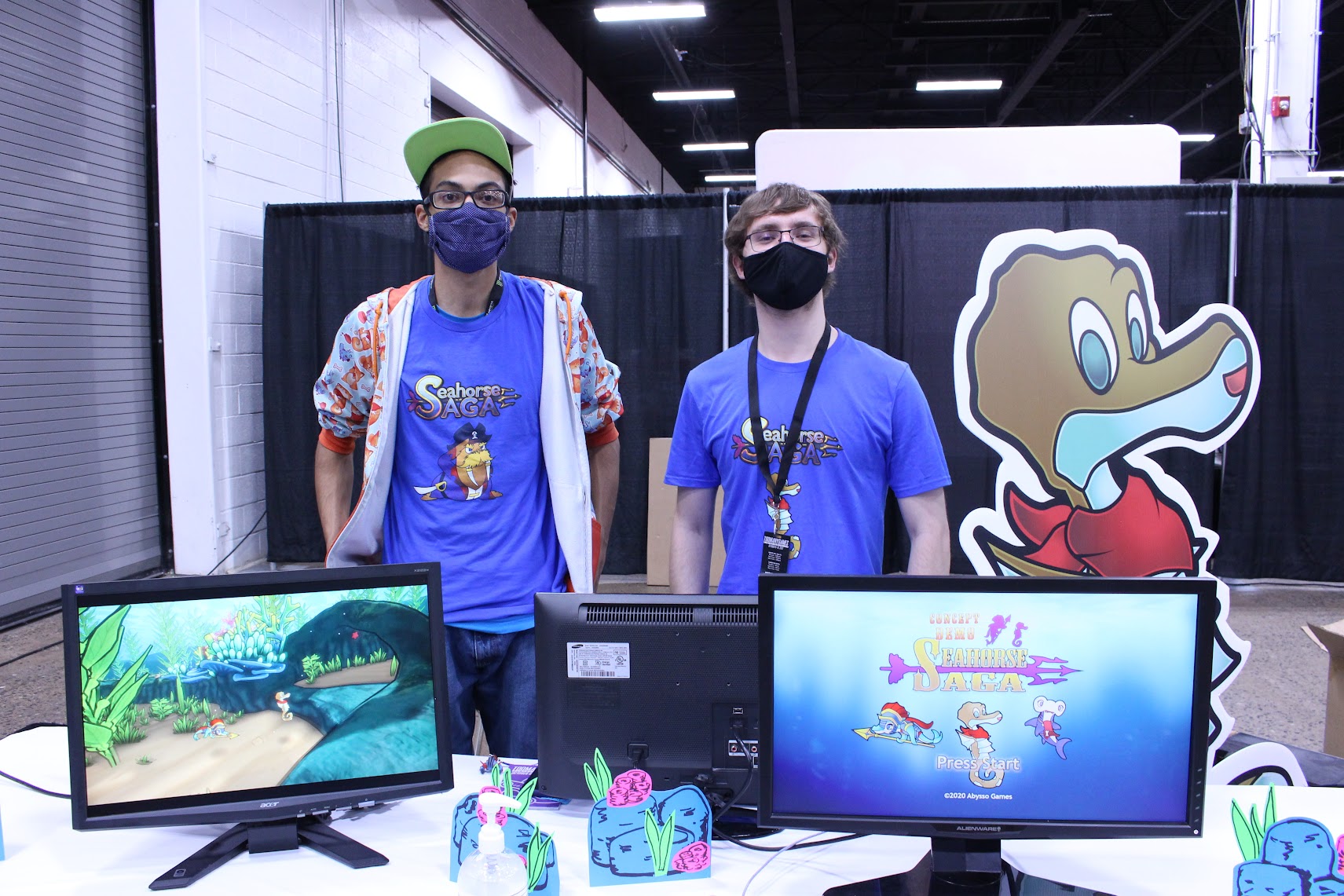
“ It was such an invigorating experience all around. The thing that inspired me the most was the drive of the creators of Seahorse Saga. It originally started as a senior school project, and developed over the course of the pandemic into a full-fledged game!” She also was able to play Fish Heads, a one-button game that allows you to traverse through the depths of the sea dodging various creatures.
A live game that Erin interacted with was Retro Mania. “ They had a table featuring multiple copies of the game across various platforms like PlayStation and Xbox. The game was launched a year ago and features some great fighting characters.”
Erin shared some of the highlights of her experience on our Podcast with Josh like meeting Charles Martinet, Meeting Kim and Wood from BeatemUps, and even connecting with Miss Click. Below are some photos that encapsulate these features of her experience.
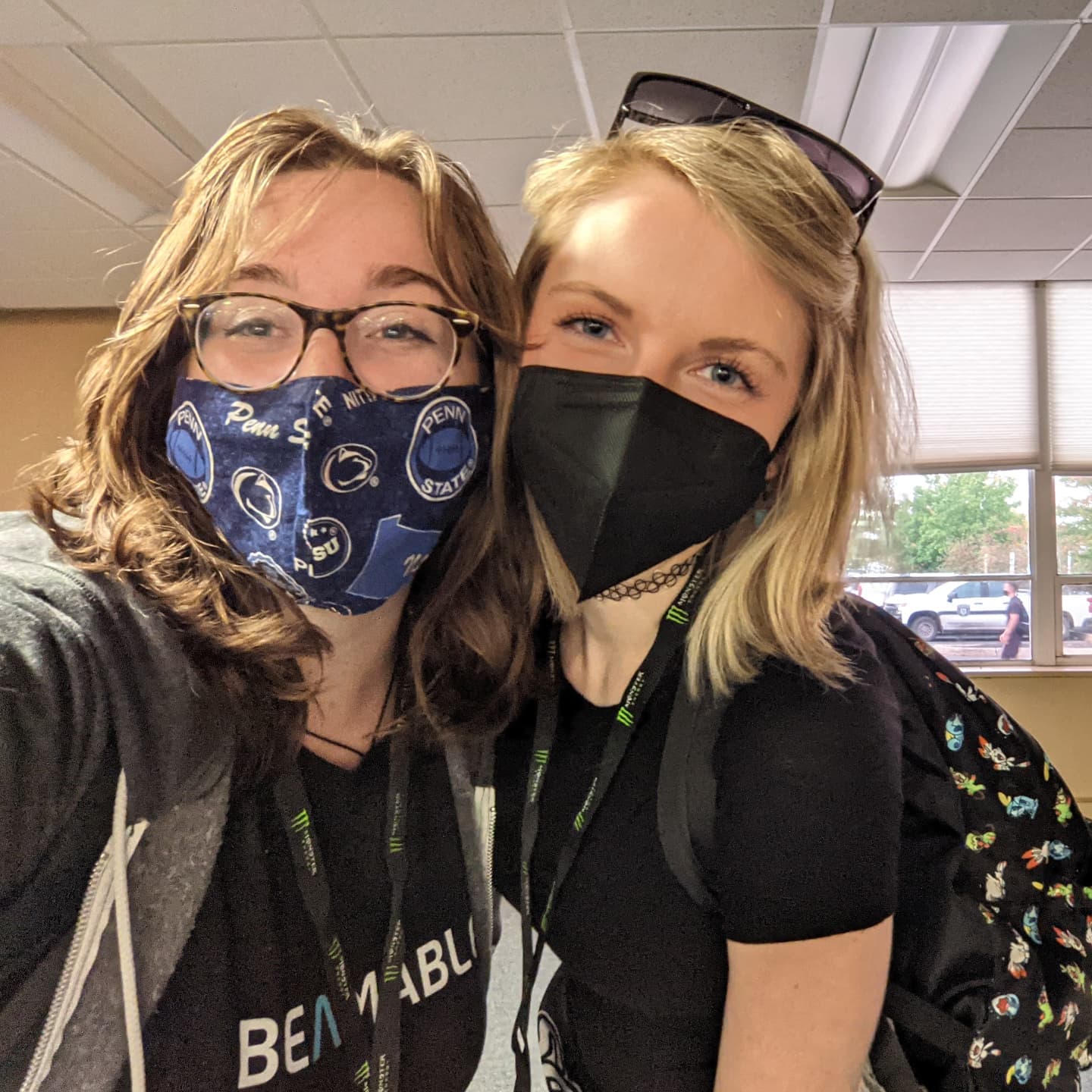
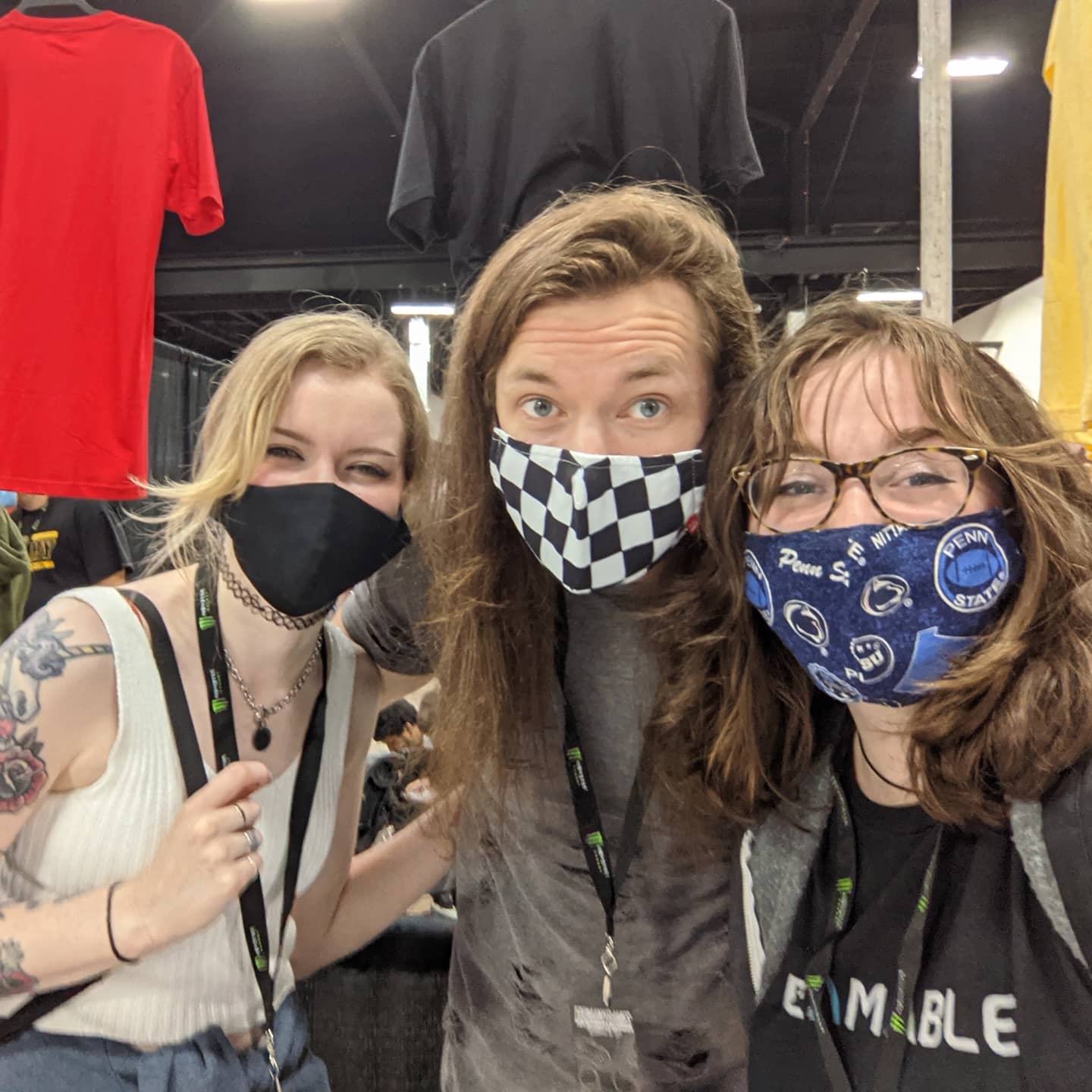
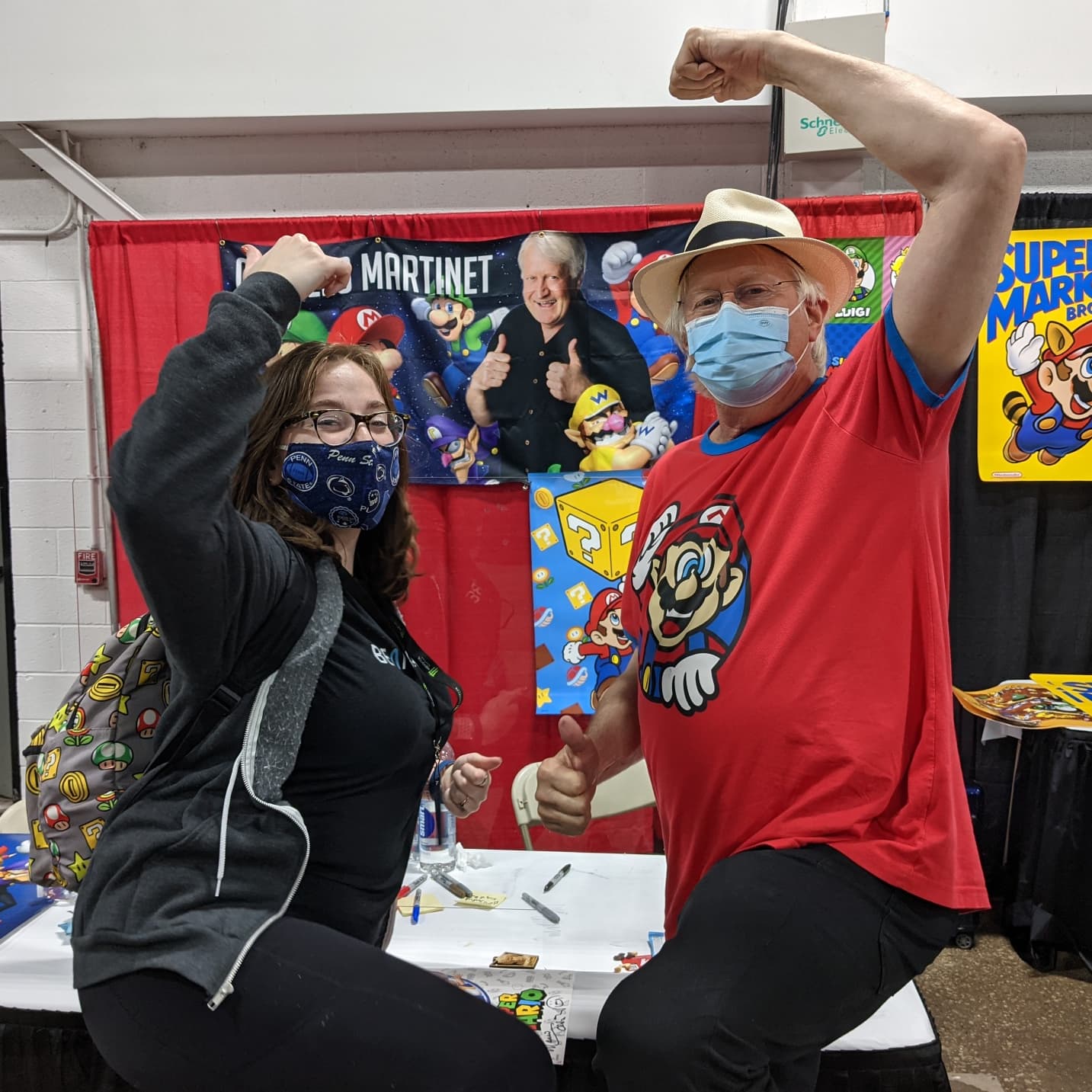

Beamable Teams Up With Game Jolt For Spoopy Jam (Game Jam)
Happy Spooktober!
Update
Game Jolt has just announced a $10,000 prize pool for the Spoopy Jam!
To kick off October we’re announcing our partnership with Game Jolt in the SpoopyJam! You’ll have the opportunity to not only create your own game with Beamable but also win exclusive prizes! Spoopy Jam not only helps provide a space for creation, but it also enables the ability to network and collaborate with companies fighting for you, the game maker.
Throughout the next few weeks stay tuned for updates as we have a lot of surprises in store. We’ll not only be announcing the prizes, but we’ll also extend a special invitation to a network of resources. From AMA’s (Ask Me Anything), to exclusive webinars, and mentoring sessions, we aim to ensure that you and your game have the best chance of winning Spoopy Jam and having a spooktacular time while doing it! We also have a super special surprise for those implementing Beamable into the creation of their game.
This is our second partnership with Amazon and Gamejolt following on the heels of Party Jam earlier this year where hundreds of game teams built dozens of exciting multiplayer games. We’re excited to continue the collaboration with Amazon and GameJolt to continue creating interactive and rewarding spaces for game developers.
Make sure to follow us on Twitter @Beamable and @GameJolt and turn on notifications to not miss a beat! You’ll wanna go big or gourd home for these prizes!

Top Three Ways to Create a Game in Unity: Part One Creating a Community
Every new game maker provides their own wonderous perspective on gaming. While each creator starts their journey with a flourishing of ideas, eventually the plateau happens. What then?
We’ve gathered three ways to help you create a game in Unity with the help of Beamable.
What’s better than creating a game? Creating a game with friends! Building your community will help you connect with creators going through the same struggles as you but can help inspire you with more ideas for your game’s creation, story, and technical elements. Two communities we recommend joining for support are our Discord and Unity’s Community. In our discord, you’re not only able to interact with other creators, but also have access to our team for support! ( insert link and picture of our discord sync with josh on that) Unity also has created its own community forums to help its creators interact, and produce with each other. Looking for more? Check out the #madewithunity hashtag on Twitter to connect to other unity creators for inspiration, connection, and support! Tag us in your current projects, we love seeing what you create!

How To Add A Leaderboard To Your Unity Game
Beamable Game Dev Podcast Episode 10: Adding a leaderboard with Beamable
Have you wondered how to add a leaderboard to the game you’re developing in Unity? The answer is Beamable. In episode 10 of the Beamable Game Dev Podcast, it’s all about the leaderboard. Adding a leaderboard to your game adds a social element that can prolong the life of your game. It can also work as a tool for word of mouth. Leaderboards in your game give your community a chance to compete. Streamers can compete with their community, which could lead to more users, sales, etc.
Beamable leaderboard sample project
If you want to learn more about adding a leaderboard to your Unity game with Beamable check out our samp project here

Beamable Releases Unity SDK 0.16.0
Beamable is happy to announce the release of our Unity SDK 0.16.0. The full changelogs can be found below. Here are the highlights of the release.
New Microservices Experience
The Microservices window has been completely rebuilt. You can create, manage, monitor, and deploy your services all from the new window. Each microservice has its own log container that can be docked anywhere in the Unity Editor. We’ve also added support for executing Docker Snyk tests, viewing the microservice’s build directory, and attaching a Command Line Interface directly to the microservice Docker container.
Disable Unity Domain Reloading
Unity has offered the ability to increase your Playmode entrance speeds by disabling domain reloading since Unity 2019. Now, Beamable 0.16.0 supports disabling domain reloading as well, which can dramatically speed up your workflow. To try it out, enable Enter Playmode Settings in the Editor section of Project Settings, but don’t enable any reloading options. You should be aware that you may need to adapt your own code to support this workflow.
Leaderboard Cohorting
Beamable has always offered leaderboards as a core capability. Now you can control how your players are grouped into leaderboards by using cohorts. Cohorts can be configured based on player stats, or percentage splits. Beamable uses your configuration to distribute players amongst the various cohorts. The leaderboards SDK automatically aligns the cohorts with leaderboards, so players in the same cohorts exist in the same leaderboards. You can use this feature to group your players based on their gameplay, business logic, or spend.
Content Workflow Enhancements
Content is a central Beamable feature, and in 0.16.0, we’ve added a few improvements to make your workflow faster and more efficient. In the Unity Editor, you can now reset your local content files by going to Window/Beamable/Utilities/Reset Content. If you need to create a new content class, we’ve added a menu item at Create/Beamale/Content Types that will automatically generate you a content class with the associated Content Ref and Content Link classes. When you enter playmode, the Admin Console has a few new commands to help you investigate and verify your content. LIST_CONTENT will print your current content manifest, and GET_CONTENT will display the serialized version of a piece of content. These commands can help you discover issues or validate your content flows.
Automatic Network Compression
Beamable 0.16.0 automatically compresses network traffic between your game and Beamable’s servers. If any request or response exceeds 1KB, the traffic will be GZipped. GZip compression can reduce the payload size of your network traffic by an order of magnitude. Megabytes become kilobytes. This will speed up your game’s connection to Beamable, and increase the size of messages you can send.
Added
- Support for disabling Unity Domain Reload
- Content console commands (GET_CONTENT, LIST_CONTENT, CONTENT_NAMESPACE, SET_CONTENT_NAMESPACE)
- Easy custom content class creation in Create/Beamable/Content Types
- Resetting content to the server state under Window/Beamable/Utilities/Reset Content
- MustBeSlugString content validation with configurable option to allow underscores
- OptionalBoolean type for content
- Leaderboard Apis that supports fetching partition/cohort cached assignment transparently
- Ability to disable VIP currency awards on Mail Rewards
- PlayerSettings scripting define symbols are saved in the Diagnostics file
- Beamable package version Toolbox announcement
- Microservices- New Microservices Manager window
- Microservices- Local microservice health checks are accessible on container port 6565
- Microservices- Snyk testing for microservices
- Microservices- Ability to categorize [ClientCallable] methods in documentation with [SwaggerCategory]
Changed
- Request and Responses to and from Beamable are GZipped if larger than 1K
- Leaderboard Content supports partitioning, max size, and cohorting
- Leaderboard Update API will transparently fetch cached assignment
- PlayerStatRequirements now support providing the domain and access to stats
- MustBeOneOf content validation attribute now supports Optional types
- Beamable Platform errors all extend from RequesterException in Unity Client and microservice code
- Redesigned internal Toolbox announcements
- Content Manager publish flow shows Realm and Namespace for confirmation
Fixed
- Added missing attributes for content classes
- SocialService SocialList serialization
- Account Management Flow third party login buttons use correct third parties
- Microservices- Visual Studio Code debug configuration source maps are now correct
- Microservices- AssumeUser() no longer throws null reference
Our changelogs can be found at https://github.com/beamable/Changelogs/blob/production/com-beamable-changelog.md

Beamable Product Roadmap Announcement
The road ahead
Here at Beamable, we pride ourselves on transparency for our customers, employees, and investors. We are extremely excited to announce the publication of our Public Beamabel RoadMap! https://beamable.com/roadmap
This roadmap includes information about our latest release notes, recently shipped items, updates on our Backend Services, Unity SDK, C# MicroServices, and more. We are using a public Trello board to make it easy to maintain and update.
We value transparency in our product communication, creative partnerships, and through all aspects of our customer support team. This roadmap will ensure we take accountability for our own progress, as well as update everyone on the latest ideas and breakthroughs in the Beamable service.
By providing a view into our roadmap, we hope you will gain an understanding of what we are working on now, what we are working on next, and the exciting things to come for Beamable.
We also hope that you will reach out with any questions, comments, feedback, and input as we continue to define, design, and plan new features. This roadmap is a reflection of all the conversations we’ve had with you the game developers as we ambitiously expand Beamable and wake up every day to fight for the gamemaker!
If you have any questions, please reach out via our contact form at https://beamable.com/contact-us or through your customer success representative!

A Night At The Races Game Dev Interview
A Night At The Races, a point and click, action platformer.
In episode 9 of the Beamable Game Dev Podcast, I sit down with Umut the developer of A Night At The Races. The game hit the Switch eShop on Sept 3rd after being on PC. From the moment I fired up this game, I could tell it was something special. As Umut peels back the curtain on the story behind the game you will see why it’s so special. Learning about the early prototypes that he showed his friends, to finding himself in a dark place mentally, and how it shaped the final game.
A game within a game.

This is a game within a game that does a great job of making you care for the main character. You play a part in helping the character get out of a bad situation by mastering a platforming game and trying to win a gaming tournament. Now, this isn’t your typical platformer because of Umut’s game dev history. A Night At The Races is a hybrid platformer that combines endless runner mechanics with platforming, and it just works.
Listen to the full episode here.
Watch the full episode here.
Have you played A Night At The Races? I would love to hear your thoughts in the comments below.

Zooming A Camera In Unity
How to zoom a camera in Unity
The 3 main methods for zooming a camera in unity are Perspective Zoom, Movement Zoom, and 2D orthographic Zoom. Each zoom has its own individual purpose.
- Perspective Zoom works to change a camera’s field of view. This method creates a telescopic effect.
- Movement Zoom physically moves the camera object closer to the subject. This method is used to adjust the position of a third-person camera and a top-down camera angle.
- 2D orthographic zoom increases or decreases the viewable area of a 2D camera by changing its orthographic size. Let’s cover the basics first.
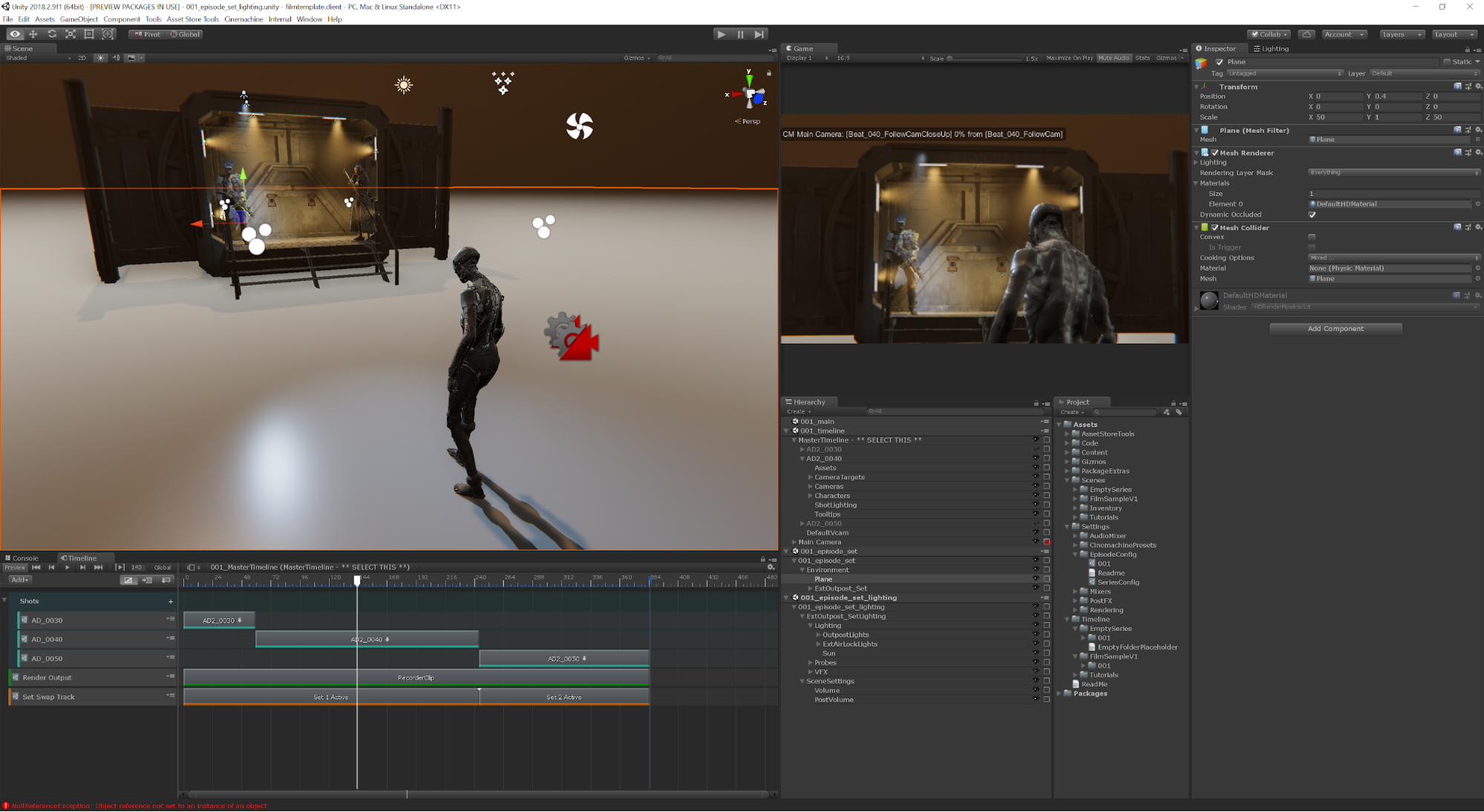
Perspective Zoom
The foundation of zooming a camera in Unity is quite simple. To create a key zoom effect, all that is needed is to reduce the camera’s Field of View property. By doing this, the field of view creates a telescopic view as if the player is looking at their environment through a magnifying glass. While this helps create a sniper effect in most games, this effect is not the same as moving closer to an object. It’s important to keep in mind the players’ needs when creating and manufacturing the zoom functions. For many reasons, this is why games usually use a default setting so that the players are able to configure what suits them best. ( as motion sickness may be an issue)
Movement Zoom
There are two main ways to smoothly change the value in Unity. The first being by a time where movement takes place over a fixed duration, and by speed, where the duration varies but the speed of movement is consistent. When smoothing a value by speed, this involved the Move Towards function. This allows for increments to be set at a value towards a target at a constant rate. However, instead of passing at a fixed speed you can calculate the amount of angle change needed for the full movement and divide this by the duration wanted. This will give you a speed value. Why is this important? This creates a formula where the speed of the transition is relative to the amount of angle change required. The duration at full zoom stays constant.
2D Orthographic Zoom
There are certain scenarios where you may want to control the camera’s distance from a player in the third person or a top-down system in an RTS ( Real-Time Strategy) game. You will need two objects for this process a parent object and a child object. While the parent object will be moved around, the child object ( the camera) will be rotated down towards the scene to create a simple zoom effect. Now that you are able to maneuver the camera, you can zoom in closer to the world by using the local forward direction of the camera object. Multiplying its forward direction vector by a zoom-float value will return a new vector set forward by a number of units that are used to set the camera’s zoomed position. With this, you are now able to set this motion to control, for example, a mouse scroll wheel. Gamedevbeginner states that Using the Input Class, Unity’s default method of getting input from devices, I can access the Mouse Scroll Delta, which is a Vector 2 value that returns the vertical and horizontal scroll amounts as values between -1 and 1. In this case, I only want to detect vertical scroll data, which is the Y value of the Vector 2 value. I can then use the delta value to increase or decrease the zoom amount.“ They also explain that adding a sensitivity monitor can help control the reactions in the environment.
If you’re looking to begin your game dev career, or enhance your skills, download Beamable today to get started! Our experienced team will help you navigate creating your dream in Unity.

Do You Have to Program to Build Video Games?
Have you been thinking about creating your very own video game? Maybe you’ve got a working knowledge of game design and some experience programming, but want to avoid countless hours coding. Well then—Beamable has you covered with a guide to more efficient video game programming, and we’ll take you through it step by step!
What Programming Language Should I Use?
When it comes to building a new video game, there are several programming languages to choose from. The two most common options are C# and HTML5; however, C# offers more benefits and is generally viewed as the most versatile—and in conjunction with Unity, is the only language supported by Beamable.
One more note on Unity; as the premier real-time game development platform, it delivers best-in-class scalability, while offering a simple learning curve that’s unmatched by just about any other programming platform.
How Much Coding Experience Do I Need?
You’re likely wondering just how much coding experience is needed to build a new video game—and the answer may surprise you.
It’s true that if you wanted to create your own game from scratch, you’d need to possess an advanced understanding of video game programming code. You would also have to learn a programming language, create the gaming engine and know how build out graphics, UI and other individual components.
If you’re indeed new to game design and programming, we recommend exploring Roblox; it provides a fantastic foundation to build your skills upon. Then once you’re comfortable with the basics, and you’re ready to balance ease-of-use and flexibility with optimal player experiences—it’s time to start building with Beamable and Unity! We simplify everything—from updating your game, to selling items via special offers and even live events with leaderboards—all thanks to drag-and-drop prefabs that dramatically streamline the programming process.
Wait—What Are Drag-and-Drop Prefabs?
In the world of video game programming, prefabs are special components that come fully configured. These GameObjects can be shared between scenes or projects without having to be rebuilt, and as fully-formed digital assets, they link to our managed back-end and offer a robust UI.
Even if your programming experience is limited, prefabs allow you to ramp up quickly. With them, you can fix object errors, swap out art, and make various stylistic changes to your project—but that’s not all! Beamable prefabs are truly drag-and-drop—meaning all you have to do is select a prefab and drag it onto the build window. All assets will instantly be uploaded and implemented, so you can keep your focus on the creativity—where it belongs!
Launch Your First Project with Beamable
With C# and Unity, Beamable empowers you to create a high-quality gaming experience—and save tons of time you would have otherwise spent coding in the process. Try a sample project with us today, and discover the difference our platform can make!

Choosing the Right Programming Language for Video Game Development
At the heart of any video game is a programming language—and there’s a never-ending debate raging about which language is best.
Spoiler alert: It depends!
But first, a primer. A great video game programming language should be:
- Easy to learn
- Efficient
- Scalable
- Simple to maintain
- Written in an object-oriented manner
What Are the Most Popular Video Game Programming Languages?
Let’s start by setting the playing field and listing some of the most commonly-used languages in game development today:
- C#
- HTML5
- CSS3
- JavaScript
While the languages listed above are all currently deployed, the most popular are C# and HTML 5.
C# Scores an A+
Today, C# is widely regarded as a top choice for video game creation, thanks to its compatibility with Unity—arguably the most robust, flexible and easy-to-use game development interface.
Moreover, C# is easy to learn, efficient and features reusable code. It’s an object-oriented programming language, making it flexible and reducing the need for ongoing maintenance. C# is considered a higher-level construct, and compiles into Common Language Runtime (CLR), which is interpreted in a Just-in-Time (JIT) manner. Compared to C++, this process affords C# extra memory and time resources.
Bottom line—if you want to create a unique and enjoyable gaming experience, C# makes it possible. It’s an exceptional tool for video game development—and is the coding language of choice here at Beamable.
HTML5 Pitfalls
While certainly a serviceable programming language that offers several benefits, HTML5 comes with a few drawbacks that are important to be aware of.
Perhaps the biggest disadvantage with HTML5 is that it is constantly being developed and transformed. In theory, this means that any aspect of your game’s functionality could be changed at any moment. And on top of that, HTML5 is only compatible with JavaScript—and this scripting language simply does not offer enough features to enable an optimal gaming experience.
Video Game Coding Made Easy with Beamable
If you’re ready to get started building a game in C#, then Unity and Beamable represent the optimal solution to maximize both efficiency and cost-effectiveness. Start by checking out a sample project on Beamable—our simple, user-friendly platform makes creating amazing video games possible for anyone!

Code Your First Video Game in Six Steps!
So you want to build a video game! You’ve got an amazing concept, a top-notch storyline and now—it’s time to build. Crafting your own playable experience can be an utterly magical undertaking—but it can also be a massive, daunting process. Like with most things, success begins with having the right plan in place—and the team at Beamable has you covered with six simple steps for coding your very own video game.
1. Choose a Development Interface
It all starts with selecting the right foundation. When it comes to a development interface, you have many options to pick from; the following are some the most popular interfaces:
- ProjectAnarchy, for mobile games
- LWJGL, best for advanced coders
- Roblox, great for those new to game coding and with limited resources
- Unity, offering an ideal balance of flexibility, quality and ease-of-use
If you’re new to the scene, we’d recommend Unity—it offers developers the most versatility for creating just about any game environment on any platform. And as you’ll discover, it pairs beautifully with complementary tools—like Beamable—that make building games even faster and easier.
2. Build Your Engine
Alright—it’s time to construct that game engine! As you begin to build, you’ll need to address a few core areas, including:
- Server selection
- AI for characters
- Graphics rendering
- Game loops
Be sure to give these components enough time and attention, as they will support all your subsequent development efforts.
3. Tell Your Story—and Make It Beautiful!
Not every game needs to tell a sweeping narrative—but any quality game will offer its players a sense of progress. Think about how to reward your players as they complete tasks—weapon upgrades, fast-travel options and aesthetic enhancements can all be leveraged to support forward momentum throughout the game.
You should also think through the visuals, be they 2D images or 3D textures. And don’t forget about the music score and sound effects—all of which enhance the overall gaming experience.
4. Design Your Levels
This is an area where we always recommend starting small—and advancing when you’re ready. Begin by building a simple level, and construct a core path for the player to use while navigating the area. As you progress and grow your skills, you can augment the level of complexity and add higher-end graphics and other elements.
5. Tweak Those Graphics
Once you’ve built your levels and established the core tenets of gameplay, go back and enhance the graphics; incorporating particle effects, creating shaders and adding textures all contribute to a more immersive environment. This is also a good time to conduct a full audit of the game code, and remove any unnecessary lines that may negatively impact the performance of your game.
6. Test, Test, Test!
If you plan to publish your game—and we hope that you do!—it’s critical to conduct player testing. Gather as much feedback as you can, and leverage this information to improve your game. Doing so at this phase will position you for a successful roll-out!
Video Game Coding with Beamable
At Beamable, we want to empower video game developers to create incredible worlds for us all to enjoy! To help get you started, you can choose from one of our sample projects and build on our platform—for free! We offer drag-and-drop prefabs, fully integrated software and a user-friendly web portal that gives you total control of your Unity-based project.
Now go forth and build!
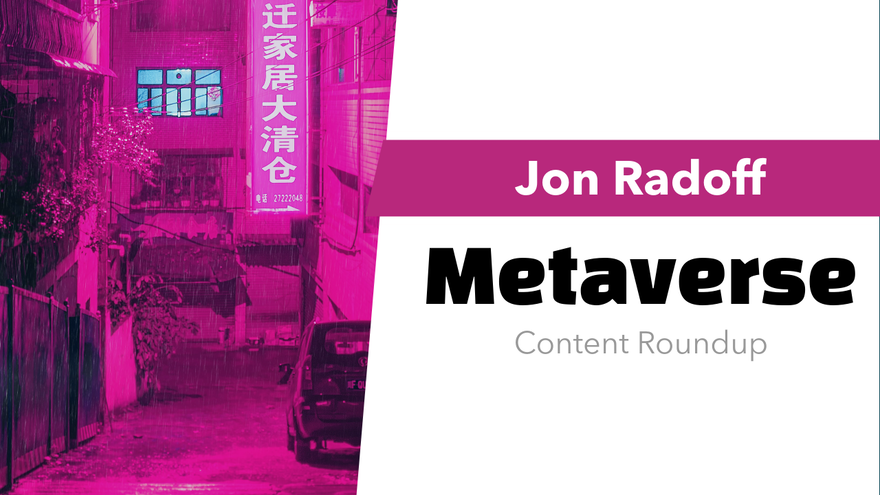
Jon Radoff’s Metaverse Content Round Up
Top 30 Most Influential People in the Metaverse via ReadWrite.com
Beamable’s CEO Jon Radoff was named by ReadWrite.com as one of the top 30 most influential people in the Metaverse. Jon is number 24 on the list, here is what they had to say about him.
“Jon Radoff is the CEO of Beamable, Radoff aims to integrate social networking, content creation, online communities, and games. In May 2021, Beamable had a $5 Million raise intended to continue being a creator-focused platform for building live games, eliminating all barriers to help game makers increase their revenues at a low operation cost.”
Take a deeper dive into the Metaverse with Jon Radoff
If you’re looking for a greater understanding of the Metaverse look no further than Jon’s blog Building the Metaverse. Do you need an introduction to Metaverse? This article is for you, or if you prefer video Jon has you covered there as well. His new Youtube series is just getting started, covering topics like Introduction to Metaverse and Nine Megatrends of the Metaverse.
Jon’s recent podcast interviews
Jon was recently interviewed on the Deconstructor of Fun and PlayMaker podcast. The Building the Metaverse Podcast is in the works so stay tuned for that. You will find each show below and both are available on your favorite podcast player.
Deconstructor of Fun
Playmakers – The Game Industry Podcast
The Metaverse is Coming
For more on the Metaverse from Jon Radoff you can check out The Metaverse is Coming: An Open Letter To Game Developers and the Beamable Community.
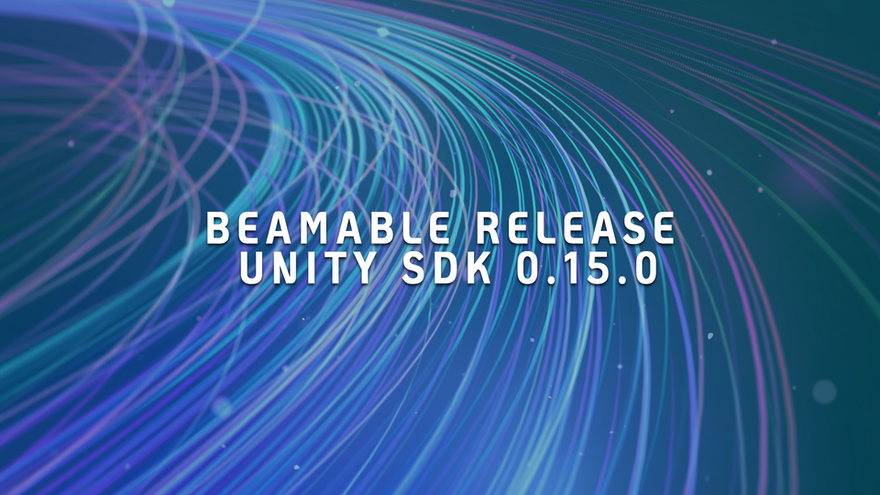
Beamable Releases Unity SDK 0.15.0
Beamable is happy to announce the 0.15.0 release of our Unity SDK. The full changelogs can be found below. Here are the highlights of the release. Tournaments
A Tournament is a contest amongst players which recurs on configurable duration (e.g. daily) and delivers progression and rewards based on the outcome.
Group Tournaments
A Tournament is a contest amongst players which recurs on configurable duration (e.g. daily) and delivers progression and rewards based on the outcome. With Beamable 0.15.0, groups can compete as well, and you can control how player members get rewarded based on their group’s performance.
Score Rewards
In addition to the existing rank-based rewards, we’ve added specifiable player rewards based on the final score.
Passive Regression
The outcome of a tournament cycle determines whether a player will advance to the next stage, remain in the current stage, or regress to a previous stage. It is now possible to also optionally specify a non-participation stage-regression penalty. This effect compounds, meaning that if a player misses two cycles, they will suffer the regression twice.
Commerce Offers
Offers provide the ability to sell items and currencies to players for real money or virtual currency.
Listing Cooldowns
Cooldowns on Listings are defined on content and are the same for every player. The Commerce service has a new method, AccelerateListingCooldown, which can be invoked from a Microservice to allow a Gamemaker to reduce the cooldown temporarily, for a listing, for a single-player providing a more dynamic experience for the players.
Inventory
Beamable’s inventory system has always supported items and soft currencies for players.
Console Commands
Three new console commands exist that let you get, set, or add currencies at runtime in your game. You can use this feature to quickly grant currencies or see what happens when a player is out of currency.
Meta Currency Properties
We’ve also added meta properties to currencies. You can store key-value data on individual currencies in a player’s inventory. This unlocks the ability to store the last modified date of a particular currency, a rate at which you want the currency to grow, or whatever other metadata you need.
Unity Editor
Beamable includes a variety of editor tooling and workflow support.
Usability Improvements
The 0.15.0 release includes several bug fixes and usability improvements. You can now control Beamable’s internal log level on the Project Settings/Beamable/Verbose Logging page. This can be really helpful if you need to monitor Beamable’s web traffic, or other internal messages.
Added
- Microservice Commerce Service AccelerateListingCooldown support to reduce the cooldown on a listing
- Verbose logging capability available in Project Settings
- Exposed cohort requirements for listing content
- Tournaments now support the ability to specify group/guild-based rewards
- Tournaments now support player score rewards in addition to the existing rank rewards
- Tournaments allow developers to specify how many stages a player regresses if they do not participate in a cycle
- Inventory now supports setting properties on currencies at runtime
- Admin commands: ADD_CURRENCY, SET_CURRENCY, GET_CURRENCY
Fixed
- Logging back into the Toolbox will remember your Realm selection per game
- Validate, Publish and Download windows now appear in the center of Content Manager
Our changelogs can be found at https://github.com/beamable/Changelogs/blob/production/com-beamable-changelog.md

Indie Game Success: Timed Events
In the first installment of our Indie Game Success, we uncovered Why Content Matters. In our second installment, we covered the Importance of Monetization. In our third and final installment of Indie Game Success, we are going to cover the Secret of Timed Events.
We’ve entered into the third sector of the Live Game Trinity, Timed Events.
You’ve successfully created content, you’re mapping out the best way to monetize your game, and now you’re invested in creating Timed Events. First, what exactly are Timed Events. Timed Events, also referred to as Live Events, boost community engagement by providing scarce, real-time, activities for the players to engage in.
Recently Live Events have been re-shaping and formulating social spaces in video games for the better. With concert events featuring celebrities like Lil Nas X, Travis Scott, and Ariana Grande, these Timed Events boost the interest and popularity of these games and also help develop a new way to socialize in-game. Our Content Producer at Beamable Josh Schmidt, also known as N64Josh, reflected on the evolution of Live Events in gaming:
” Fornite has shown us how well live events build hype for their upcoming seasons. I loved piloting my battle bus as Mando! Dancing with the community while we waited for the event to start was something I wont forget.”

Timed Events provide uniqueness to a game.
They not only bring people together at the same time, but they also create anticipation around the event and the game. Utilizing Timed Events can determine the success and downfall of a game. Luckily, as the videogame world continues to explore the Metaverse, the easier it becomes to create interactive, engaging, and immersive Timed Live Events. If you are ready to get rolling, Download Beamable today and let us help you develop your passion for gaming into an occupation. Looking For More Content?

Three Tips To A Successful Kickstarter
Three tips it increasing your chances of funding your Kickstarter
You have the killer game idea, you’ve narrowed the scope. The prototype is solid and now it’s time to fund the dream. Running a successful Kickstarter campaign means you need to be in the trenches with the community that is supporting you. Filming a great video for your pitch, choosing the support tiers, and pressing go live are only the beginning of the process. As you become a machine at creating content your Kickstarter will have a much better chance at funding.
Build your brand
It is time to create content. As of writing this Tiktok, IG Reels, and Youtube Shorts are where you want to be. Get your phone out and document your journey and start telling your story with video. Pulling the curtain back and giving your potential customers a peek behind the scenes will create connection and connection leads to support. Here are a few questions to jumpstart your content creation journey.
- Where did the idea for the game come from?
- How did you narrow the scope?
- What did you cut that you wish you could have kept in?
- What has kept you motivated when you had no motivation?
- What hurdles have you overcome in the development process?
- What tips do you have for other devs?
Begin answering these questions in short-form videos, and start building the following. This will pay dividends down the road when it comes to funding your game and running a successful Kickstarter campaign.
The Gaming Podcast Circuit
Step number one is to invest $50-$150 in a decent USB mic. The Blue Yeti or Elgato Wave are a couple of many great options. There are thousands of gaming podcasts looking for guests that want to share your story. Open up your podcast player and start looking for shows that would be a good fit for the game you are creating. The shows should have an email in their bio or at the very least a Twitter account. Hit them with a short pitch that gets to the point. It could read something like this:
“I am reaching out to you because I am developing a game that I believe your community would enjoy. The story behind my game and the development would be great content for your podcast, and it could help me promote my Kickstarter campaign? I have a decent mic so you won’t have to worry about poor quality audio. As my campaign is running I will post links to your show as updates on my Kickstarter campaign, which should introduce your show to a new audience. Pending funding, I would love to provide you with a review code and a handful of codes to share with your community for giveaways or contests to increase engagement with your show.”
As a podcast host, I would be stoked to share the project with my audience. That may not be the case for everyone. You will inevitably have some “no’s” and that’s fine it’s part of the grind. Any show that is growing its audience should see the value proposition you are offering.
Keep your supporters in the loop.
Update, update and update some more. A key element to a successful Kickstarter campaign is the updates. This is not a set it and forget it scenario. Give updates on the game’s development. If you’re crushing the funding early on, offer additional content to your backers. Share your updates on Kickstarter and all of your socials, keep documenting the journey. Use a call to action like “Tweet at me your questions about the game,” or “share this Kickstarter campaign on your socials and use my hashtag.” As people get to know you through your content they will want to support you and your game, so don’t hold back share it all. Ask questions with your updates to increase engagement. The goal is for them to feel like they are part of your journey. Include them in content, “Backer number three asked if this feature would be possible?” Then answer with an update. Host a Q&A in your discord or subreddit. Make videos answering each one and use them for updates on Kickstarter and content on socials. Questions fuel the content machine and allow you to focus your creative energy toward your game instead of the content. All of this will take a ton of work, but having our dream funded will be worth it.
For more ideas on funding your game check out 5 Ways To Fund Your Indie Game. If you have any questions or want to add another tip to The Three Tips To A successful Kickstarter, leave them in the comments below.
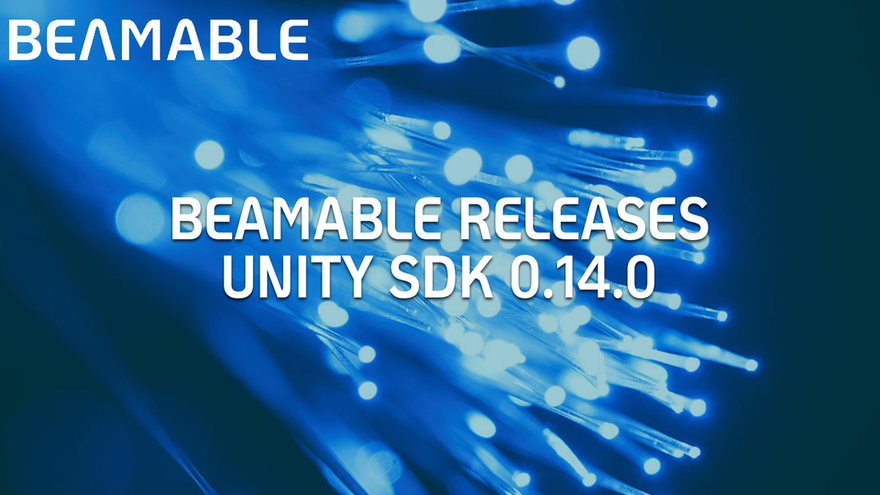
Beamable Releases Unity SDK 0.14.0
Beamable is happy to announce the release of our Unity SDK 0.14.0. The full changelogs can be found below. Here are the highlights of the release.
Build support for WebGL
Unity builds running in WebGL don’t support any multithreaded code. In the previous version of Beamable, there were lots of references to concurrent types and other multithreading system types. We’ve modified the package so that no multithreaded code is used when you build your games for WebGL. Beamable features like inventory, account management, cloud saving, and multiplayer will all work in a WebGL build now. However, it is important to mention that Unity IAP does not support native WebGL builds, so hard-currency purchases are not supported.
Multiple Content Namespaces
This is a new feature for Beamable’s Content system. Traditionally, each realm has had one set of content available. Now, you can create and maintain parallel namespaces of content in each realm. This can be a gamechanger if you need to support multiple game clients while still innovating on your content design. You can manage your content namespaces from within Unity, the Beamable Portal, or the Game Content Designer. Multiple Content Namespaces is a powerful feature, and you should think carefully about if it fits your game’s needs. If you do, you’ll need to enable the feature in the Project Settings / Beamable / Content section.
Unity IAP 3.x.x Package support.
The older Unity IAP services split their code between a plugin and a package. When Unity released their 3.x.x IAP packages, they moved the code from the plugin into the package and removed the need for the plugin. In Beamable 0.14.0, we’ll automatically detect which version you are using, and get the code from the correct spot.
Password Reset Codes as PINs
In previous versions of Beamable, when a player requested a password reset code, they were issued a UUID code. The UUIDs were clunky and long. We’ve replaced them with much shorter PIN codes. This change should be automatic, but if you need to change it for any reason, the setting can be found in Player Settings / Beamable / Account Management / Password Reset Code Type
Usability Improvements
The 0.14.0 release includes several bug fixes and usability improvements to make working with Beamable easier. The realm picker is in both the Toolbox and the Content Manager. The last time content was published to a realm is available in the lower right of the Content Manager. When you need to edit date strings in Content, there is a new visual date picker that automatically formats the date for you. You can right-click on the date fields and opt to use the old text field if you prefer. You can now set content ref values across multiple objects. The Beamable Promise type can now be used as the return type of an async method. This can be an especially useful way to format your code.
Microservice Improvements
The Beamable Microservice package also has a few new powerful features. We added a dependency injection system that allows you to extend what services are available. In your Microservice class, you can write a method that takes exactly one parameter of type IServiceBuilder, and use it to register transient, scoped, or singleton services. The method must be marked with the [ConfigureServices] attribute. The serialization of request objects has also been improved. Your request objects can now implement Unity’s ISerializationCallbackReceiver interface, and the associated methods will be invoked from the Microservice code.
Fixed
- Integration for Unity In-App-Purchasing 3.x.x packages
- Content references will update after a manifest subscription update
Changed
- Rearranged the Portal button and Account button in Toolbox
- Rearranged the Content Count label in Content Manager
- Password reset codes can use PINs instead of UUIDs
Added
- WebGL build support
- Multiple content namespaces, both in Editor and Runtime. Must enable in Project Settings
- Facebook Limited Login (iOS) Authentication
- “portal” console command, which opens Portal to the current player’s admin page
- Multi-object editing support for Content Reference selector
- New editor tooling for ISO date strings in Content Objects
- Realm Picker in the top right of Content Manager
- Last, publish date in bottom-right of Content Manager
- ISerializationCallbackReceiver support for Content Object serialization
- Async support for Promise<T> types
- Added Donate API call method to GroupApi
- Dependency Injection system
- ISerializationCallbackReceiver for request and response objects used in [ClientCallable] methods
- Custom routing prefix setting in MicroserviceConfiguration
Our changelogs can be found at
https://github.com/beamable/Changelogs/blob/production/com-beamable-changelog.md

Beamable Announces Migration Kit for GameSparks Clients
GameSparks is going offline in September 2022 and Beamable has been named an alternative by Amazon Web Services.
Read the official press release at PRWEB
View the official GameSparks migration documentation
August 11, 2021 – Beamable, an APN solution, and ISV Accelerate Partner, has been named a migration path for GameSparks clients in advance of the live game platform’s shutoff in September 2022.
Currently used by thousands of games globally, GameSparks is one of the leading backend-as-a-service providers in the video games sector. In this year’s AWS GDC keynote, it was announced that GameSparks will be going offline in September 2022 and game developers must find a replacement.
Beamable’s revolutionary developer workflow has been recognized by Amazon Web Services as a next-generation solution to live game services.
“Live operations have evolved beyond services. Today it is about freedom, flexibility, and workflow,” says Jon Radoff, CEO of Beamable. “We are committed to providing GameSparks customers with continuity. And after upgrading to Beamable, our creator-centered workflow brings joy and productivity to live game operations. There are no new languages to learn or servers to manage. The workflow fits the way game studios really operate.”
To help game developers with the migration process, Beamable and their external solutions experts have created a nine-step process for game migration: beamable.com/gamesparks-migration
Beamable’s team of in-house experts and third-party migration partners, such as SuperNimbus, are available for consultations and custom strategy sessions to help make the transition process as seamless as possible for game developers. Sean Durkan the CEO of SuperNimbus adds:
“We are thrilled to partner with Beamable for GameSparks migrations. For Unity developers, the combination of their favorite engine and Beamable’s highly scalable backend is unmatched in accelerating development. SuperNimbus takes pride in pushing boundaries and based on experience, we have great confidence in Beamable.”
For more information visit beamable.com
About Beamable
Beamable fights for the game makers of the world by helping them turn their game ideas into thriving businesses with a low-code Live Game platform. Beamable enables anyone who builds, updates, and maintains a live game to save time and earn more money. Beamable is based in the Boston area, and led by a team of game-industry and enterprise-technology veterans, and backed by investors including GrandBanks Capital. For more information visit, beamable.com.
For media enquiries, please contact:
Trapper Markelz
(617) 645-9619
trapper@beamable.com

Indie Game Success: Why Content Matters Part 1
Why Content Matters
You’ve made it this far. You have a passion for gaming, an unquenched thirst for creation, and possibly a catchy name like “Big Bad Beans Studio”. Now comes the hard part, creating content, monetizing that content, and figuring out a way to use timed events to your advantage. Over the next few weeks, we will be posting a three-part series on the best way to Create a Successful Indie Game. Today we will be diving into the world of content creation and why it matters.
Any successful game is crafted around a successful story intertwined with the passion and work ethic provided by you, the developer. While your needs in-game creation are important, there is another element that is essential to creating a game. Knowing your audience is not only important but vital to creating a live and successful game. For us, a successful game is not only visually engaging, and unique, but is focused on refined qualities rather than a larger unpolished game. Taking the time to market and develop a community surrounding the game is as important as compatibility and accessibility. While these components are crucial in the success of any game, it is as important to navigate the climate and continual expansion of the gaming atmosphere. The Co-Founder and CCO of Beamable, Trapper Markelz explains how the nature of game development has evolved:
How Game Development Has Evolved
“The nature of player expectations around a game experience has changed. Games are no longer a one-time experience where you purchase the game, play through all the content, and move on. Games are now live and ever-changing.”
Trapper continues, “ If you want to build a successful game today, you need to conceive of it as a live game experience with evolving content. When you sit down to design your game, you have to think about the flow of this content from day one. How will the game evolve week to week or month to month? How will you add new content? How will you monetize that content? How will you make some of that content scarce to drive urgency and participation?”
Live Game Trinity Of Continuous Content.
The CEO of Beamable, Jon Radoff, calls this unlocking the Live Game Trinity of continuous content, continuous monetization, and limited-time events. If you can design this trinity into your game from day one, you can build an online, living game experience that will attract, retain, and entertain players for years, maybe even a decade.”
Building the tools to enable this Live Game Trinity is a daunting task, but Beamable is here to aid in every step of the process. The best place to start, as a game designer, is with content creation. Prioritizing the flow and unceasing machine-creating content will help promote, build, and unify your game and its stance within the indie game market. Constant construction of substance to support your game is of the utmost importance to the success of indie games, especially those looking to top the charts in the indie game market.
Create Great Content, Then Monetize It.
Start with content, and then figure out how to monetize, and how to architect limited-time events to drive the cadence of release and participation around this content. In part two of Indie Game Success, we will cover the world of monetization. If you are ready to get rolling, Download Beamable today and let us help you develop your passion for gaming into an occupation. Looking For More? Jon Radoff and Game Economics: Part 1 The Attention Economy

Indie Game Success: Monetization
Why monetization matters.
In the first installment of our Indie Game Success we uncovered Why Content Matters. In our second installment, we are going to be talking about the importance of monetization.
Congrats! You’ve mastered the art of creating content. Combining your passions into a vocation with gamers all around the world exploring the masterpiece you have created. Now what? While any successful game can be measured by the fulfillment of creating the game, satisfaction doesn’t pay the bills. Crunching long hours by the computer, brainstorming the entire layout of your game, and drinking way too much caffeine at 3am, deserves a pay off.
A major pillar of this triad is monetization.
In our post about Why Content Matters we discussed the Live Game Trinity, coined by CEO of Beamable Jon Radoff. A major pillar of this triad is monetization. While receiving a well earned pay day is important, monetization converts community attention into virtual item purchases to optimize economics. For more insight we sat down with our VP of Finance Matthew Fuller to hear his perspective on the importance of monetization.
Matt explains that “whether you are a small indie developer looking to earn a modest income or a AAA developer looking to recoup a multi-year development spend, finding that sweet spot of monetization where the value provided is equal to ( or ideally greater than) the monetary cost to your players is one of your most important goals.”
Do’s and don’ts of monetizing your player base.
If you are overcharging for your in-app purchases, or presenting something your players do not value at your proposed asking price, even the best NPE and D7 retention will not help. Whether the item is for cosmetic value, nostalgic value, or for a time saving factor to speed up progression, your players have to feel that they are getting value. Matt continues and states
“ A well-developed game will not require its player base to spend money, it will inspire them to do so.”
Monetization matters and should be paralleled with constant creation, adaptation, and revision. In our next, and final, installment of Indie Game Success we will be covering why every successful game incorporates timed-events.
If you are ready to get rolling, Download Beamable today and let us help you develop your passion for gaming into an occupation.
Looking for more?
Jon Radoff’s Game Economics Part 2: Digital Collectibles and NFTs
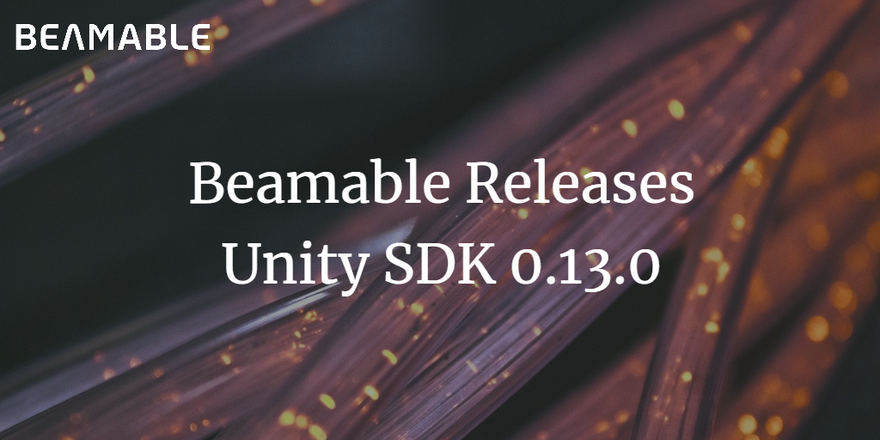
Beamable Releases Unity SDK 0.13.0
Beamable is happy to announce the release of our Unity SDK 0.13.0. It includes:
Added
- GameCenter SDK Authentication Support
- Adds an optional field, activeListingLimit to Store Content
- Microservice: Added a difference check at Microservice Deployment time, so that microservices that have not changed are not re-uploaded.
- Microservice: Added a RealmConfig service to available Services. This can be used in read-protected realm settings.
Changed
- Switched MatchmakingService API to point to our new backend matchmaking service.
Bug Fixes
- Fixed possible null reference exception in MustReferenceContent validation attribute

HATS: Where Cooler Heads Prevail! (A “Rock, Paper, Scissors” Style Sample Project)
Our wide selection of sample projects makes it easy for game developers to expand their skills by getting to know different ways of leveraging development platforms, in this case, Beamable and Unity.
Check out our latest sample project: HATS (Head Adornment Test Scenario). Have you got what it takes to win? This sample project is an excellent way to explore the mechanics of competitive, multiplayer games.
Shoot arrows and fireballs at your opponents, hunker down and defend yourself, and stay away from the lava. The last player standing wins! Other Beamable prefabs and features showcased in this project include C# Microservices, Payments, Chat, and Store.
What are the Rules of the Game?
Four players face off in this epic battle, but only one will emerge victorious!
Each turn presents you with four choices: move, shield, fireball, and arrow.
- Move: Travel to a free space nearby.
- Shield: Hunker down and resist incoming fireballs or arrows.
- Fireball: Launch an epic fireball across the grid.
- Arrow: Take aim and attack one of your opponents with your bow and arrow.
Choose wisely, but the clock is ticking! Make sure you commit to your action before time runs out. Protect yourself from fireballs and arrows but don’t forget to stay on your toes: Lava tiles are deadly and expand, so watch out for crumbling tiles beneath your feet.
Will You Beat Your Opponents and Stay Alive? Try Our Sample Project for Yourself
- First, start by downloading the HATS Sample Game from GitHub.
- Next, open the project in your Unity Editor (version 2020.3.11f1),
- Once that’s done, open the project in the Beamable Toolbox.
- Finally, sign in to your Beamable account and get cracking! (For more information, please review our Getting Started Guide).
- To begin playing, open the Matchmaking scene.
- Play the scene by selecting Unity à Edit à Play
- Decide whether you want an easy start or to do a standalone build and run the build in the Unity Editor. In both running games, choose “Play” to play against yourself.
- For a standalone build, make sure you rebuild Addressable Asset Groups before you run the game. To build content in the Editor, open the Addressable Groups window and select Build à New Build à Default Build Script
- Let the battle begin!
Are you ready to emerge victorious? Download Beamable today!
Additional Reading
Before you begin, you might want to check out our getting started, matchmaking, and leaderboards guides.

Have You Got What It Takes to Be King of the Ring? Beamable Announces New Sample Project
Sample projects are a great, hands-on way to familiarize yourself with various game creation and development platforms while having fun experimenting with different gameplay styles and strategies. To help you test out Beamable’s platform, we’ve created a variety of awesome sample projects.
Check out our latest sample project: King of the Ring. Have you got what it takes to win? This sample project is great for developers interested in creating competitive, multiplayer, battle royale style games.
You can attack with power and dodge with speed; the last player alive is the king of the ring! Other prefabs and features demonstrated in this project include virtual currency, inventory, store, and leaderboard. We hope you find this sample helpful and would be psyched to get your feedback!
What are the Rules of the Game?
Challenge between one and five of your friends! Only one of you will emerge victorious in this game!
Move your avatar by clicking where you want them to go. Collide with other players and attempt to push them out of the ring. Every time a player is successfully ousted from the ring, they lose shield points and ranking. The last player left inside the ring will be crowned King!
Will You Be the King of the Ring? Try Our Sample Project for Yourself
1. First, you will need to download the Multiplayer KOR Sample Project from GitHub.
2. Next, open the project in your Unity Editor (version 2020.3.11f1).
3. Now you need to open the project in the Beamable Toolbox.
4. Sign-in to your Beamable account (for more information, please review our guide on Getting Started). Now you’re ready to start playing!
5. Open the 1.Intro Scene.
6. You can play this Scene using Unity à Edit à Play
7. Do you want to play against the computer or against yourself?
a. Click “Start Game: Human vs. Bot” for an easy start.
b. Click “Start Game: Human vs. Human” to play against yourself.
8. Crush your opponents!
Ready to get started? Download Beamable today!
Additional Reading
Before you begin, you might want to check out our getting started, matchmaking, and multiplayer guides.

Beamable Releases Unity SDK Version 0.11.0
Beamable is happy to announce the release of version 0.11.0 of our Unity SDK for live game development!
Changes
- Console Configurations ToggleKey will be reset to BackQuote.
- Microservice: Changed response serialization from Microservice. Use UseLegacySerialization to maintain old behavior.
New Features
- Support for the new Unity Input Manager System.
- Added OnUserLoggingOut event available from API. The event fires before a user switches account.
- Microservice: Added a cache for content fetches.
- Microservice: Added Open API 3.0 auto-generative documentation.
- Microservice: Added AdminOnlyCallable version of ClientCallable that requires caller to have full scopes.
- Microservice: Added requiredScopes field to ClientCallable that requires caller to have required scopes.
- Content: Event phase validation. Events can no longer have zero phases. This may lead to disappearing Event Phases if your Beamable version is mismatched.
Bug Fixes
- Fixed Promise multithread safety.
- Fixed ContentRef property drawer showing invalid references when deleted.
- Fixed MustReferenceContent validation for lists of Content References.
- Fixed Inventory fetching with empty scope
- Microservice: Fixes leaderboard and stat fetching cache errors.
- Microservice: Fixes null reference bug when passing null to ClientCallable arrays.
Critical Breaking Change
There is a BREAKING CHANGE in this release, but it is relatively easy to handle. Effective 0.11.0, C# Microservices will no longer respond to [ClientCallable] methods with a wrapped payload field. For game clients that have already been deployed, the old serialization structure is critical.
When you upgrade your project to Beamable 0.11.0, do not deploy a C# Microservice to a realm with existing client builds unless you configure it to use legacy serialization.
You can do that by marking a boolean as true in the Microservice attribute. This will preserve the old serialization technique. You can freely ship new client builds without needing to worry about this. As soon as there are no clients in the wild with the old version, you can remove the legacy serialization.
An example… (see the UseLegacySerialization field is set to true).
[Microservice("DeploymentTest", UseLegacySerialization = true)]
public class DeploymentTest : Microservice
{
Get started with Beamable
Check out Beamable for your game project today! Get started for free and see how Beamable can speed development for your game.
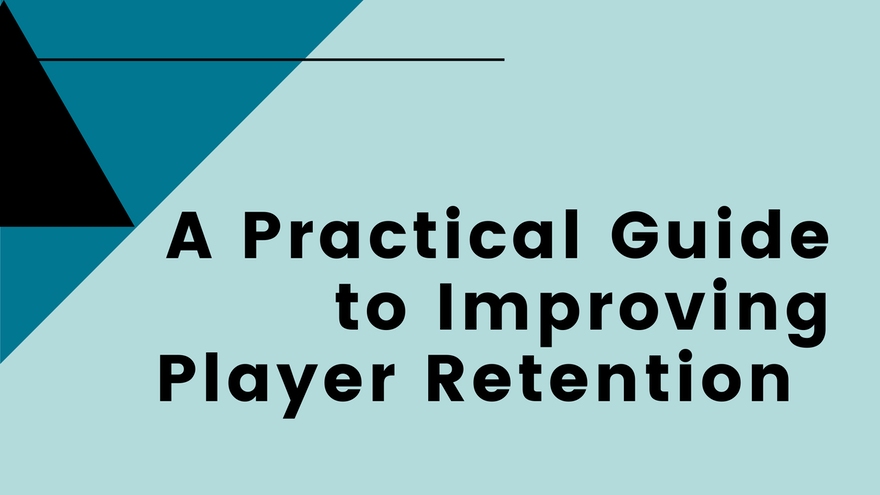
A Practical Guide to Improving Player Retention
Player retention is key for game developers looking for a continued revenue stream. By consciously considering player retention throughout your development cycles, you can create a fun, engaging game that players will enjoy returning to.
To help you get started, our game development experts have put together this handy guide.
Add a Good Tutorial
First impressions are important, so make sure your game includes a concise yet comprehensive FTUE (first-time user experience) tutorial. Though you should add as many steps as necessary to ensure players have the knowledge they need to play successfully when it comes to tutorials, less is usually more. Avoid unnecessary steps, keep the tutorial as brief as possible, and consider blending this tutorial with the rest of the game to avoid a jarring transition.
You should also consider offering players a reward for completing the tutorial (such as an exclusive item, a small amount of in-game currency, or some other benefit). By tying a reward to tutorial completion, you give players a sense of accomplishment and set players up for success by giving them the tools and knowledge they need to play with confidence.
Give Them a Reason to Return Every Day
One of the best things you can do to improve player retention is give players a reason to come back every day. By positioning your game as a daily recurring appointment, you can strongly encourage players to return frequently. Offering daily rewards can help, but requiring players to return daily or lose progress, forfeit items, or otherwise miss out is also incredibly effective.
Consider requiring players to return daily to:
- Affect an action in your game
- Progress through the game
- Collect daily items or quests
- Level up their character
Leverage Push Notifications
Encouraging or requiring players to authorize push notifications and then using push notifications to periodically nudge players is great for two reasons: A regularly scheduled notification encourages players to return at roughly the same time every day, forming a daily habit, while periodic notifications spaced out throughout the day announcing time-sensitive or otherwise non-regularly scheduled items, quests, or other activities keeps your game top of mind even when players are attending to other tasks.
To turbocharge the effectiveness of your push notifications, structure your game so that players need to click the push notification to complete the requested action. You may also want to consider sending players push notifications when they have accrued the required resources to complete certain tasks or when new tasks or actions become available.
Reward Players for Returning Frequently
Offering rewards to players who click on push notifications or offering D1 (day 1) return offers are particularly effective strategies. Rewarding players periodically, particularly when they have just begun to play, creates a positive association and encourages habitual play.
Offering rewards for completing actions creates a positive feedback loop. As such, you may also want to consider offering gifts or rewards at other critical periods (such as D3, D7, D12, D20, D30, etc.) and make those rewards perishable so that players who don’t log on during those critical periods forfeit those gifts.
Offer a Varied Diet of Gameplay Activities
Players enjoy choice and variety. Making your game both fun and easy to play encourages players to continue the relationship with your game. This can be achieved by offering players various gameplay options, ensuring there is always something they can do that interests them.
One mobile game that does this well is Archer: Danger Phone. Players are able to choose between three missions to complete at any one time, giving them a varied gameplay diet without overwhelming them with options. This limited choice gives players some autonomy while also prescribing pre-determined play paths and ensuring players are always clear on what actions they need to complete next to achieve their goals.
Star Trek Fleet Command is also an excellent example of this: by always offering a new task to complete, players are encouraged to play longer and return frequently.
Offer Live Events
Live events are an excellent catalyst for increased play. As players advance through the game, live events can offer a chance to show off their gear and prowess, improve social connections with other players, and hone their skills. Live events that offer players the chance to play together, or play alone together, are a great way to increase social cohesion, build a community, and increase player enjoyment.
Want to Improve Player Retention? The Beamable Team is Here to Help
Beamable offers a few tools and tips that game developers can leverage to increase player retention. These include both commerce systems to manage your D1 and other reward offers, as well as bundles designed to pull players into accelerated gameplay.
We also offer live event systems that allow developers to easily make regular content updates and schedule time-scoped multiplayer cooperative or competitive play, complete with unique event-specific currencies, items, and rewards.
Are you ready to increase player retention in your game? Beamable is free to use until you launch. For more details, or to get started, please visit our website.

Social Gaming Trends & How to Leverage Them
The COVID-19 pandemic has, for many of us, had a profound impact on our daily lives, from how we work to how we socialize. As such, social gaming (whether playing alone or playing alone together1) has skyrocketed.
Social Gaming More Popular Than Ever
Even as vaccination rates around the world continue to rise, many of us remain stuck at home in search of social experiences. Many of us are craving human connection, and games are an excellent way to bring people together and build a lasting sense of community.
Why You Should Consider Adding Social Features
The more social your game, the more likely players will play your game and the more likely they are to play it for longer and more frequent intervals2. When done correctly and paired with regular content updates, a flywheel of gameplay (and ultimately revenue) is created.
All good live games have three things in common:
- Live events
- Social Features
- Multiplayer
Live Events
The biggest trend in social gaming right now is live events. Aside from Fortnite’s famous Travis Scott concert which drew 12 million live, in-game viewers and has been viewed over 77 million times on his YouTube channel, another example of a successful event is Minecraft’s music festival Square Garden, which drew 130,000 attendees and raised $50,000 for charity.
Live events that encourage individual players to work together to achieve a common goal or goals are also excellent for increasing player investment. One excellent example is No Man’s Sky’s community research events, which have players complete a series of missions to help map the universe in exchange for rewards. Individual players benefit by earning quicksilver (a form of in-game currency3 only earned via community research tasks) that can be spent on exotic items that cannot be purchased using “units”, the game’s main currency).
Social Features
Games offer a safe, socially distanced way for players to socialize with others anytime and anywhere. By making socialization via gaming a habit now, players are also more likely to continue to socialize this way even once the pandemic subsides. There are a number of ways to add social features to your game:
- Friend lists: Allow players to befriend one another and see who is currently online, making it easier to play with friends.
- Groups (including guilds and teams): Allow players to form social groups with existing friends or make new friends by joining groups, guilds, or teams.
- Leaderboards: Allow players to see how they stack up against their friends and rivals, encouraging friendly competition.
- Events: Live or limited-time events are an excellent way to encourage new players to check out your game and current players to return. Scheduled group activities such as live events are great for fostering a sense of community and, when leveraged effectively, can increase player engagement, drive IAPs, and boost merchandise sales.
- Tournaments: Great for building a sense of community through friendly competition.
Multiplayer
While the “play together” model is not new, current trends have demonstrated its staying power. Popular play together style game Among Us has been downloaded over 350 million times (as of November 2020) and boasts 3 million concurrent players (as of October 2020). Making a multiplayer game requires a range of special technologies. Some technologies you should familiarize yourself with include:
- Relay server: Supporting turn-based gameplay while offering rewards, matchmaking, and leader boards to encourage friendly competition.
- Matchmaking: Depending on the style of your game, you may want to consider allowing players to be randomly matched against each other or use your matchmaking servers to create temporary teams of unrelated players, allowing players to complete group tasks.
- Deterministic multiplayer: Ideally suited for non-random multiplayer play.
You can try out our multiplayer and leaderboard functionality for yourself using our multiplayer sample project and our leaderboard sample project.
Leveraging These Trends Effectively
Though many developers have great ideas for social games, even the best idea will fall flat without the right technology and resources needed to turn that vision into a reality. That’s where Beamable comes in.
Beamable offers a wide selection of drag-and-drop pre-fabs to add limited-time events and tournaments to games developed using Unity. By choosing to partner with a platform company like Beamable, you can avoid having to build social and other functionality from scratch, dramatically speed up your development cycle while also reducing costs.
Are you ready to add social features to your game? Download Beamable for Unity today!

6 Steps to Creating an In-Game Currency
Adding in-game currencies to your game can be useful for driving revenues and increasing player retention. However, which form or forms of in-game currencies are most effective depends on several factors that should be carefully considered. For maximum benefit, you need to identify the core objectives each of your currencies plays within your game and use that information to determine what style of currency is best suited for each use case.
In this handy guide, we will walk you through creating an in-game currency, discuss common mistakes new developers make when creating in-game currencies, and offer practical advice on avoiding these pitfalls.
Creating an In-Game Currency: A Step-by-Step Guide
The six steps for creating an in-game currency or currencies are:
- Decide whether your game would benefit from an in-game currency or currencies.
- Plan your development path to ensure your new currencies complement your game and support player objectives.
- Determine the number of currencies you want to create as well as the objective of each currency.
- Decide whether your currency will be hard or soft (more on those terms later), or in the case of multiple currencies, whether you want to create a combination of hard and soft currencies
- Determine whether your currency or currencies will be universally usable across the game or limited to select activities or shops.
- Review the common mistakes many new developers make when creating in-game currencies and create a plan to address and overcome these potential pitfalls.
Once you have decided to build an in-game economy, you need to ensure the path you take compliments your game and player objectives. A game economy is most successful when designed around the actual game itself and integrates smoothly with it.
Ideally, your economy should be so seamlessly integrated that engaging in commerce feels like a natural gameplay progression.
Why You Should Consider Adding an In-Game Currency or Currencies
When designed thoughtfully and leveraged correctly, in-game currencies are an excellent way to motivate players to exhibit desirable behaviors. This may include:
- Encouraging players to earn currency so they can exchange it for desirable items or rewards.
- Encouraging players to exchange rewards and items to complete desired actions.
- Rewarding players for showing up (ex: D1 rewards).
- Rewarding players for completing in-game missions or other tasks.
Another strategy you may want to consider is “unlock free-to-play”, which allows players to use in-game currency to unlock premium options that normally require players to pay using fiat currencies (such as US dollars or Euros).
The free-to-play model has revolutionized and democratized gaming, allowing anyone to play for free while allowing developers to earn money by offering cosmetic items (such as new player outfits) or premium items (such as more powerful weapons or armor).
Overall the combination of free-to-play and virtual currency has the benefits of increasing total players and revenue potential per player. In this model a game’s total revenue potential uncapped, while revenue from traditional video games was capped on a per-player basis via the purchase price. As such, the only way to increase your revenue was to attract more players since even the hardest-core fans would only ever purchase your game once.
The free-to-play model also allows players to proceed at their own pace, creating an enjoyable and flexible gameplay experience.
Determining What Types of Currencies You Want to Create
First, you need to determine how many currencies your game needs and the objective of each currency.
The types of currencies can be broken down into two main categories:
- Hard currencies (AKA real money) refer to fiat currencies that can be used to purchase coveted items that provide a significant advantage (such as a better weapon, better armor, etc.) The only way to access these coveted items is to use real-world money.
- Soft currencies (AKA virtual currencies) are used to reward players for their behavior or motivate players to complete tasks.
You also need to determine whether your currency or currencies are universal across the game or are they limited to certain activities. For example, a guild currency can only be used to purchase items from within your guild, or a store selling specialty items might require a different currency than more general stores.
Common Currency Creation Mistakes (& How to Avoid Them)
Consider the Impact of Multiple Currencies
The first mistake many new game developers make when designing in-game currencies is failing to consider the impact of multiple currencies and the purpose or impact of each.
If you are going to create more than one in-game currency, you need to have a clear idea what purpose each serves and how having multiple currencies will affect gameplay.
You Need to Account for Inflation
Many developers also fail to account for inflation. As players earn and stockpile currency, the value of that currency drops, which impacts your in-game economy and the player experience.
Consider the Ramifications of Player-to-Player Transactions
Developers also need to consider the ramifications of player-to-player transactions. For example, if a player is able to amass a large quantity of currency, how will that affect that player’s level of motivation and engagement?
Consider the Impact of Cheating
For as long as we have had games, some humans have sought to give themselves an unfair advantage by cheating. Developers need to consider all the ways players may seek to hack, cheat, or otherwise exploit a currency. This is vital because this sort of inevitable behavior can, if left unchecked, cause a game to implode.
When it comes to in-game currencies, game developers take on the roles of central bank and trade regulator and need to act accordingly. Carefully considering the impact of an in-game currency, anticipating how unscrupulous players may seek to use that currency to cheat, and weighing how inter-player trade and inflation will impact your economy are all critical.
Creating an in-game currency is incredibly easy; creating a well-balanced, robust, and rugged system to create and manage multiple currencies, item economics, and inflation while safeguarding your game against economic exploitation is difficult. Fortunately, the Beamable team is here to help. Our experts have extensive experience creating currencies and managing their economic ramifications across multiple large-scale games.
Beamable offers easy to use plugins for managing all aspects of your in-game economy, including:
- Commerce: create and target offers with hard and soft currency purchases, including limited-time offers, max purchase limits, cool-downs, and a variety of other rich and varied configurations.
- Payments: Beamable supports IAPs (in-app purchases) using server-side receipt validation and is compatible with iOS, Google Play, Facebook Game Room & Web, Windows Store, Amazon, Samsun, and Huawei.
- Inventory: Fully managed player inventory, including support for items with arbitrary stats as well as virtual currencies. This feature seamlessly integrates with commerce and other features.
- Calendars: Engage players by allowing them to claim rewards on a calendar schedule. This feature seamlessly integrates with commerce, allowing you to create new calendars such as a monthly card offering daily rewards.
One successful game that relies on Beamable’s economy features is Star Trek Timelines.
Are you ready to discover how easy it is to build and manage your in-game currency with Beamable? Download Beamable for Unity today!

How to Get Funding for Your Game Development Project
Building a game, particularly a live, multiplayer game, is a lot of work. Once you have your idea hammered out, you’re likely going to need at least a small team to transform that idea into a reality. Though partners like Beamable can help you by providing tools and advice, you may need to secure funding to bring the completed game to market and support user acquisition.
In this article, we will discuss a variety of funding strategies, offer tips for maximizing your chances of securing funding, and let you know how Beamable can help.
Funding Strategies, How to Leverage Them Effectively, & Factors to Consider When Choosing a Funding Option
Bootstrapping
Self-funding is the most obvious and common strategy used by indie game developers. This money often comes from your personal assets but may also include friends, family, contract work, or side hustle.
If you plan to quit your day job and work on your game full time, you should have enough money to cover between 12 and 16 months of living expenses for yourself and your team. As such, many indie developers choose to work on their games part-time, including nights, weekends, and every spare minute of the day. For most of us, we’re turning our passion into a vocation.
Should you choose to take on part-time or contract work to fund your game, you will need to be ruthless about time management. When you choose to bootstrap a game studio, you are running your own business, so it is up to you to make sure you are setting aside adequate time and resources to achieve your goals.
However, If you love what you do and don’t mind living frugally while you work to achieve your dreams, bootstrapping your game can be a great route that offers incredible flexibility. Both Temple Run and Flappy Bird were bootstrapped and became incredibly successful. Temple Run has been downloaded more than 70 million times, while Flappy Bird was downloaded more than 50 million times between when it was launched in 2-13 and January of 2014.
Two other highly successful games from small indie developers that took the bootstrapping route are Valheim and Fall Guys. Valheim sold five million copies since in its first month, making it the fourth most-played Steam game of all time. Fall Guys has seen similar resounding success, reaching over 11 million sales on Steam and taking the crown as the single most downloaded PS Plus game of all time.
Crowdfunding
Crowdfunding can be a great source of funds, but it can be incredibly difficult to get noticed. To make sure you stand out on platforms such as Kickstarter and Indiegogo, you should have a compelling concept that is quickly and effectively summed up in a visual teaser or trailer.
Kickstarter, in particular, is incredibly competitive, but Anya Combs (Kickstarter’s Director of Games) has put together a handy guide to help you put your best foot forward.
Patreon can be a good option for smaller projects where you want to build a community iteratively as you generate content around the development process to allow other budding game developers and future players follow your journey and support your progress.
Crowdfunding is difficult, and your chances of success are greatly improved if you go in with a strong audience before unveiling your product. Getting players invested in a finished game is difficult enough, but for the crowdfunding model, you need to attract players before you’ve even started developing your game.
Project Funding
The project funding model involves finding a game publisher to pay for your development costs, usually as an advance against future revenue from your game. Under this model, once your game launches, you reimburse the publisher for these costs, along with any additional costs such as localization testing, promotion fees, and marketing. Even once these expenses are covered, your agreement with the game publisher will likely require you to hand over a share of all additional ongoing revenue going forward. Though in some cases, this may be for a set number of years, it may be in perpetuity.
In most cases, game developers retain their intellectual property rights to both the game and its assets under this model, allowing them to create as many sequels or spinoffs as they please. These additional games are also not subject to the revenue-sharing model of the original game.
If you do choose this route, be aware that you may not qualify for all funds. Some project funds, such as Humble Game’s Black Game Developer Fund, are set aside for marginalized and underrepresented groups. Doing your research into the funds you are interested in and making sure you and your team meet all qualifications can help you use your time and energy more effectively by allowing you to focus on project funds that are more likely to offer you funding.
Having a game publisher can add significant value to the entire game development lifecycle, such as helping you market the game and attract players, but it does involve compromise. This route is best for developers who understand, and are okay with, the compromises they’re making and are willing to trade some long-term rewards for upfront cash.
Grants & Tax Relief
Many countries offer grant funding or tax relief to support indie game developers. While what funding you qualify for will ultimately depend on where you live, we’ve compiled a short list of currently available grants to get you started:
Grants
- Indie Fund: Indie fund does not allow developers to apply directly; rather, members of the fund observe the indie game market and select candidates based on levels of interest from the press and the wider gaming community.
- UK Games Fund: Open to all UK-based developers with less than 50 employees who are developing early-stage projects.
- Creative Europe: Open to European production companies that are able to prove they have produced a commercially distributed video game in the last two years, present a sales report, and own the majority rights to the project they are submitting.
- Unreal Dev Grants: Open to Unreal Engine 4 game developers or developers looking for funding to transition an existing or in-development game to Unreal Engine 4.
- Fig: Uses the results of crowdfunding campaigns to weigh funding offerings.
- Creative England: Open to screen-based storytelling entrepreneurs and businesses in the English regions. Funding is available for film, television, animation, games, immersive media, or technology that supports these industries. Depending on your day job, you may be ineligible, though, so review their guidelines carefully.
Tax Relief
- UK: Claiming Video Games Tax Relief for Corporation Tax
- US and Canada: Tax breaks vary from state to state and province to province, but the website Gamesindustry.biz has compiled a comprehensive list.
If you are interested in getting funding via tax credits or other tax relief efforts, we suggest speaking to a tax professional such as an accountant. A tax professional will have up-to-date information and may know about additional tax credits you may not be aware of.
VC Funding
Historically seed funding opportunities in the gaming sector came through corporate development initiatives or government funds, but traditional venture funds are increasingly interested.
For more information about getting VC (venture capital) funding, please read our guide: How to Find Venture Capital for your Indie Game.
Cast a Wide Net & Ask Around
When it comes to securing funding, you should cast a wide net and explore as many funding sources as possible. While you may be able to secure enough funding from a single source to cover all of your costs (including any unexpected expenses), you will likely need to draw on funding from multiple sources.
It is also always a good idea to reach out to the wider gaming community for additional information. Experienced game developers are often more than happy to point aspiring developers in the right direction and offer practical advice.
Putting Your Best Foot Forward
Regardless of what route or routes you choose to take to secure funding, there are a few things you can do to make sure you are putting your best foot forward and showcasing your game effectively.
Leverage Your Past Successes If You’ve Got Them
Proven developers with a successful development track record are often able to leverage their prior experience to gain funding during the formative stages of their companies and titles. However, this route is only available if you have at least one other successful game on the market.
A potential workaround for newer developers is to bring a seasoned game developer on as an advisor to your company. A strong advisor or advisory panel can help make introductions to investors, builds credibility in your venture, and provides investors with a level of confidence that may increase the likelihood of funding.
Build a Comprehensive Sample User Interface
For most game developers, the key to unlocking funding is to build a compelling prototype. Make sure you include a sample user interface that demonstrates your vision and instills funding sources with the confidence that your team has the necessary skills to transform your idea into a fully functional, successful game.
Create a Clever Business Model for Your Game
Having a clever business model for your game is a great way to stand out from the crowd. For example, you might want to consider a new strategy that makes it easy for existing players to invite friends and family to join in the fun, either as valued teammates or friendly rivals. Building player acquisition right into your gameplay mechanics not only encourages players to invite others but makes those initiations seem less intrusive by seamlessly incorporating them into your game via the storyline or other creative elements.
Keeping player acquisition top of mind right from the start of the development process is a great way to keep costs low (you don’t have to spend as much on advertising) and rapid growth, driving revenue and profits.
In a recent article1, we discussed why live events are a great way to attract and retain players. In 2020, Fortnite’s Travis Scott concert (which drew 12 million live, in-game viewers and has been viewed 77 million times on his YouTube channel) caused the live-events trend to explode. Games that can move beyond the basics of gameplay in a novel and creative way are capable of causing a rippling cultural effect that’s very enticing to investors.
Another creative business model, which went mainstream five years ago when Pokémon GO debuted, is AR (augmented reality) games. As of March 19, 2021, Pokémon GO has accumulated more than 1 billion lifetime downloads, 500 million of which occurred in the first quarter it was released. In 2020, Pokémon GO was one of the top free-to-play 9FTP) gaming titles worldwide, generating $1.92 billion in revenue that year alone.
How Can Beamable Help?
In addition to providing Unity editor support, as well as identity management, social, economy, and messaging tools, as well as analytics, our team of experts is also able to offer practical, actionable advice to get you from concept to fully functional game.
Save Time & Money
We can help developers’ de-risk their development, accelerate their development, and reduce the number of developers required to build a game, saving you time and stretching your funding father.
Affordably Augment Your Engineering Team
Savvy investors understand how hard it is to find engineering talent, which is why many small development studios choose to partner with us: With Beamable, you and your team can focus on the storylines and gameplay, while our experts and platform seamlessly will handle your game ops.
Partner with a Proven Platform
Seasoned investors also know that building a live, multi-player game with a complex economy is incredibly challenging. By partnering with a proven platform like Beamable, you can gain investor’s confidence in a scalable, affordable solution.
Got a Great Idea for a Game? Show it off at Our Party Jam!
Have you got a unique idea for a game? We want to see what you’ve got! Beamable, Amazon Game Tech, and Game Jolt are hosting a Party Jam virtual game jam event, which runs from June 21, 20201 to July 1, 2021.
Three winning games will win both cash prizes and publishing consideration from Game Jolt, and a playthrough of their game will be live-streamed on Twitch!
To get started, simply:
- Head over to Game Jolt to sign up.
- Download Beamable (if you are using Unity) and get started with the Party Jam sample projects.
- Design, build, and submit your game by July 1, 2021, to be eligible for judgment and prizes (full rules available here).
Are you ready to start turning your creative game idea into a reality? Beamable is always free to use during development! Get your free trial today!
Missed out on our 2021 Party Jam? Search for upcoming game jams here!

Beamable Releases 0.10.1 Update
We are excited to announce the release of the Beamable Unity Package version 0.10.0! For a list of everything included in this new release, check out the release notes below.
To get started with Beamable, sign up to develop for free or learn about why Beamable.
New Feature – Group Event Rewards
Events and event rewards now may be configured such that groups of players can participate together and earn rewards together. Group event rewards may be used in conjunction with individual event rewards.
Learn more: https://docs.beamable.com/docs/events-code#adding-group-rewards
New Feature – Steamworks Commerce Integration
Beamable now supports real money transactions with Steam via a new Unity IAP store. This integrates directly with the Beamable commerce system for in-app microtransactions. Setup the Steamworks C# SDK and visit Beamable docs for details on completing the integration.
Microservice Improvements
Beamable C# Microservices have been growing by leaps and bounds. This release brings stability improvements, better handling with the latest Docker versions, and the inclusion of expanded Beamable SDK capabilities.
Notable new C# Microservice features:
- Microservices can reference DLLs now
- The TrialData (CloudData) API is now available in Microservices
Learn more: https://docs.beamable.com/docs/microservices-code
Enhancements
Mail Service – SendMail
Beamable’s mail service SDK now includes the SendMail function. Privileged entities, such as admin users and C# microservices, can now send messages to a player’s in-game mailbox.
Learn more: https://docs.beamable.com/docs/mail-code
Bug Fixes
Accounts
- Account: fixed drag and drop behavior for AccountHUD prefab.
- Account: fixed timing issues in Account Management Flow display.
Cloud Saving
- Cloud Saving: fixed initialization and reinitialization logic.
- Cloud Saving: fixed KeyNotFoundException when looking up previously downloaded objects.
Content
- Content: default leaderboard name correction.
- Content: ID in Content Manager no longer cuts off names or shows duplicate entries.
- Content: fixed ArgumentOutOfRangeException when adding new content to an empty content type.
- Content: increased manifest upload timeout, to allow for larger manifests.
- Content: downloading content in Editor no longer logs unnecessarily.
- Content: fixed InvalidCastException when double-clicking new content entries.
- Content: when content is not found, the ContentNotFoundException now contains the ID.
- Content: fixed issues with renaming entries in Content Manager.
- Content: added stat requirement fields to AnnouncementContent.
Events
- Events: corrected EventReward data structure to match inventory APIs.
- Events: made EventReward min and max allow double-precision numbers.
In-App Purchasing
- IAP: SKU Content product ids are optional now.
- IAP: BeamablePurchaser will now only initialize if items are defined.
Inventory
- Inventory: no longer holds on to stale data on user change.
- Inventory: prefab no longer errors when addressable icon is omitted.
- Inventory: AddItem() api no longer errors out on null dictionary.
- Inventory: delete behavior correction for N=1 and N=0.
- Inventory: fixed InvalidCastException when using custom subclasses.
Messaging
- Messaging: added missing AcceptMany call.
Microservices
- Microservice: fixed InvalidOperationException when getting stats.
- Microservice: fixed InvalidOperationException when using SocketRequesterContext at high scale.
- Microservice: corrected GetManifest to only download public content.
- Microservice: general C# editor window improvements.
- Microservice: fixed container build when including debug tools.
- Microservice: improved detection of required Docker engine.
- Microservice: made sure content manifest download is complete before issuing content requests.
- Microservice: corrected Portal redeployment logic to prevent errors.
- Microservice: corrected default route to match Beamable prod environment.
- Microservice: Content Service stability improvements.
- Microservice: fixed Docker invocation to skip Snyk tests.
Tournaments
- Tournaments: prefab now uses sample content by default.
- Tournaments: players will rejoin the current tournament on user change.
- Tournaments: no longer logging errors on closing.
Other / Miscellaneous
- Misc: renamed LoginFlow prefab to AccountManagementFlow.
- Misc: renamed tournaments prefab to TournamentFlow rather than just Flow.
- Misc: ConnectivityService now uses HTTP as its primary detection mechanism.
- Misc: fixed Admin flow visual glitches on landscape.
- Misc: fixed error when Project Settings is open during Beamable installation.
- Misc: added CID validation to prevent “unknown CID” errors.
- Misc: improved validation messages during project registration.
- Misc: fixed NullReferenceException from prefab references.
- Misc: reduced binary size by compressing default image assets.
- Misc: fixed compilation errors when USE_FIREBASE is defined.
- Misc: general bug fixes when opening and closing Editor windows.
Breaking Changes
None. Beamable v0.10 releases revolve around added functionality and bug fixes. As such, v0.10.1 is fully backward compatible with Beamable v0.9.x.

3 Top Grossing Games of 2020 (And What Game Developers Can Learn From Them)
The 2020 pandemic changed a lot of things, including how we socialize and unwind. Not only did it change the number of people playing games, but it changed what made games successful. Let’s take a look at three popular and critically acclaimed games released in 2020 to see how this unique year impacted the success of these games and what game developers can learn from them going forward.
1. Tony Hawk’s Pro Skater 1 + 2
The “new normal” made people nostalgic about the pre-pandemic times, and many found comfort in the remakes of beloved classics such as Tony Hawk Pro Skater, Demon’s Souls, Final Fantasy VII, and others that came out in 2020.
These remakes offered players a chance to relive childhood memories with improved graphics, music, and an extended storyline.
The Tony Hawk games won many hearts when they were first released and quickly became classics. Several key elements made them successful, but here are a few key ones:
- Incentive systems that make the game easy to learn but difficult to master.
- An excellent soundtrack that creates positive associative memories.
The fact that Tony Hawk takes only a few minutes to learn is key for making the game accessible to a wide array of users and increasing its daily active users (DAU).
The game does this by incentivizing players to master the controls (even subconsciously) through a sequence of goal challenges. Every level has a series of goals that change and evolve as the game progresses. To achieve these goals, players have to focus and practice as they build their characters one challenge at a time. This encourages players to return frequently, boosting the game’s number of monthly active users (MAU).
The soundtrack for the game was also carefully selected to help ease any frustration that stemmed from the game’s trial and error approach to success. By carefully selecting a fun, memorable soundtrack, the designers were able to greatly enhance the player experience, increasing the average play session time per user and improving game retention (how long players continue to play the game).
By choosing licensed music for the soundtrack, the game also creates a positive association between playing the game and any time the player hears their favorite in-game songs, even if they are currently engaged in other activities. This clever approach means that player’s brains are primed to link “Tony Hawk Pro Skater” whenever they hear these songs, subconsciously prompting them to return to the game.
By carefully curating your game’s soundtrack and creating incrementally difficult goals for players to strive towards to improve their skills, you can create positive associations that extend beyond the game and encourage players to improve by gradually mastering the game, encouraging them to return frequently to keep their skills sharp and continue to improve.
2. Call of Duty: Warzone
Since 2003, the Call of Duty (COD) franchise has been known for their experimental and innovative approaches to the player interface, game storylines, and multiplayer game features.
What makes COD: Warzone a particularly interesting installment of the franchise is that unlike previous games it’s free to download, offering a low barrier to entry that draws in new players.
To make money, COD: Warzone relies on:
- In-game purchases
- Battle-passes
- Players purchasing its companion game, Call of Duty: Modern Warfare
Players are encouraged to make in-game purchases by offering incentivized enhancements to the gamer experience. While it is possible to play the game without using in-game purchases, these add-ons allow players to distinguish themselves within the online COD: Warzone community via cosmetic upgrades and access to weapon blueprints that give players a distinct edge over their opponents and signal their dedication to the franchise to other players.
By implementing a paywall around weapon blueprints and cosmetic upgrades, players are encouraged to purchase these items. Though some items can be earned via regular gameplay, this process is long and arduous, encouraging players to purchase these items instead of grinding towards them.
Battle passes allow players to gain access to unique rewards and earn player experience faster, allowing them to unlock content more quickly. As such, battle passes work to create an in-group, “club-like” experience by rewarding hard-core fans with access to:
- All 100 tiers of the game (as opposed to just the free tiers included with the system)
- A wide selection of free items (including two new base weapons)
- A selection of weapon blueprints
- Up to 300 COD points
These additional elements help distinguish these super-fans from other players in the game.
COD: Warzone also allows players to communicate directly with one another, a critical asset in competitive games. By combining the ability to communicate with an in-group, out-group social dynamic, players are strongly incentivized to make in-game purchases to keep up with fellow players, stimulating peer-pressure purchasing.
The competitive atmosphere, use of in-game purchases, and battle pass dynamics all work together to enhance the game’s retention rates: More devoted fans are more incentivized to play. The longer a gamer plays, the more likely they are to invest in in-game purchases. This dynamic works to create a core population of dedicated gamers on the game’s servers, improving the game’s lifetime value and ARPU (average revenue per user).
At the same time, this camaraderie makes it more likely for truly dedicated fans to become early adopters of other games within the franchise, such as COD: Modern Warfare.
By including unlockable content behind paywalls within your own game, you can help create in-groups and out-groups that incentivize players to invest in themselves, and their teams via in-game purchases and products like battle passes, increasing your recurring revenue stream over time. Your game’s most dedicated fans are both more likely to purchase in-game content and items to gain a competitive edge and access to new maps, cosmetics, and other add-ons and distinguishing features while simultaneously doubling as the early adopters of later games in your franchise.
3. Last Of Us: Part II
The second chapter of Last of Us set the Internet ablaze. Despite a 95 out of 100 Metacritic score and tens of thousands of positive reviews, the game also received some intense criticism.
However, despite its other flaws, the game’s mechanics and graphics were incredible, some of the finest examples in games released this year. This game feels like a playable movie, and its initial previews were able to successfully fire up almost all fans of the previous installment.
One of the biggest flaws of this game was its desire to create controversy. By opting for an approach that relied too heavily on shock-value rather than staying true to the formula that caused its hard-core fan base to fall in love with the franchise in the first place, the game developers inadvertently alienated many of their fans.
Like most games, this one has its strengths and its weaknesses, both of which present learning opportunities for other game developers:
- It’s okay to kill off beloved characters, but be sure to treat them with respect if you do.
- Fans appreciate plot twists, but don’t rely on shock-value alone, and don’t alienate your audience by contradicting your own values.
- Don’t discourage your development team so much that they release game leaks in an effort to damage your sales.
The Last Of Us franchise is beloved enough that if the game had only minor issues or flaws, their core fan base probably would have been able to overlook them. However, the three flaws listed above caused irreparable damage to both this game and the franchise as a whole.
The top-down politics within the game’s development team also caused discouraged team members to leak critical game material. While this alone would have negatively impacted sales, it would not likely have been damaging enough on its own to kill the franchise.
Though not as beloved as the first two games on this list, The Last Of Us: Part II has important lessons to teach us. To create innovative games, we need to discuss what works well and what does not so we can learn from these mistakes.
Key Takeaways
- A good soundtrack that has been curated with your target audience in mind can help create positive associations with players that follow them outside the game.
- Creating a game with basic controls that are easy to learn but difficult to master, paired with goals to accomplish, encourages players to return frequently to continue to improve their skills.
- Freemium models, like that used by COD: Warzone, are excellent for optimizing game accessibility, particularly if you are planning on creating more games within that franchise.
- Creating a social community that rewards your most dedicated players via a paid rewards system both encourages players to invest in in-game purchases and return frequently.
- Never underestimate the power of a good story, but keep your audience in mind when writing. Blatant controversy and shock-value for the sake of controversy and shock-value are more likely to alienate existing fans than draw in new ones.
Are you looking to integrate these successful elements into your own game? Beamable can help. For more information about how you can easily integrate social and commerce features, increase audience retention, and increase your profit margins, please visit our website.

Indie Gems: Beamable’s Top Three Indie Games of November 2020
We are in the final days of 2020. It’s been a challenge for sure dodging the real-life horror of a pandemic, but through it all, Indie game makers have kept on making. To celebrate the continued contributions of indie devs, here are Beamable’s picks for the top 3 indie games released in November 2020.
The list is in no particular order except that these are three interesting games we feel you need to know about on Android, iOS, and Steam. If you think we missed something, leave a comment below!
Chicken Police: Paint It Red
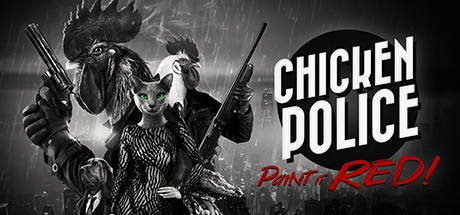
Chicken Police: Paint It Red offers one of the most distinctive visual styles we’ve seen recently. At the cost of looking bizarre and eccentric, this narrative-driven adventure game offers a captivating atmosphere.
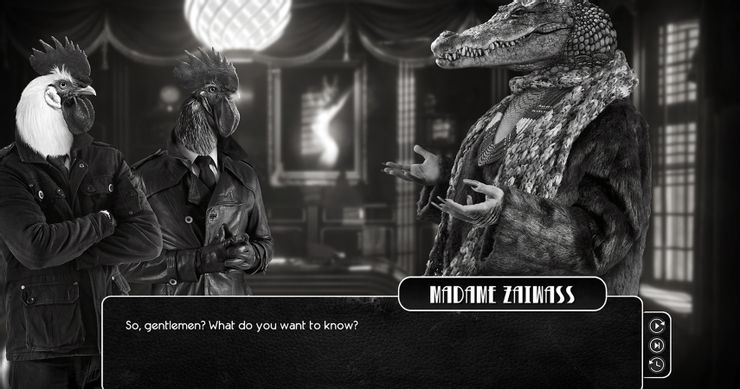
Chicken Police is described as a “buddy-cop noir” game, and along with its black and white visuals, is defined by its original soundtrack and over 8 hours of voice acting across 30 different characters. The gameplay revolves around interrogation as you attempt to uncover the truth “with a classic film-noir twist” awaiting you.
Here’s where you can find the game and give it a try:
Prodeus
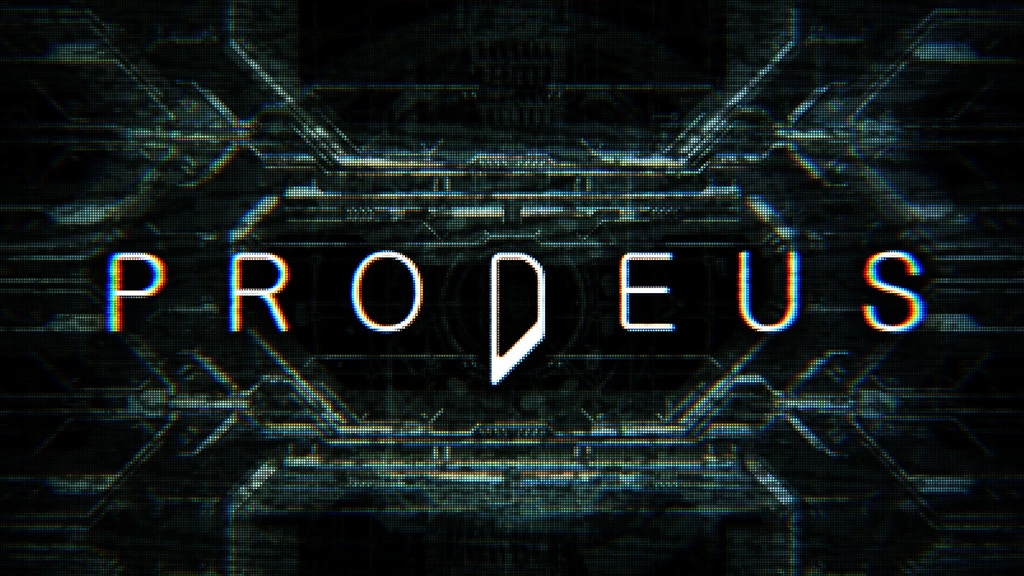
Prodeus really knocks it out of the park. This retro-inspired FPS aims for high-quality visuals while sticking to the aesthetic technical limitations of older hardware. It was released earlier in November 2020 and received overwhelmingly positive remarks. On top of the exceptionally intense gameplay, Prodeus features a full campaign, level editor, and map browser.
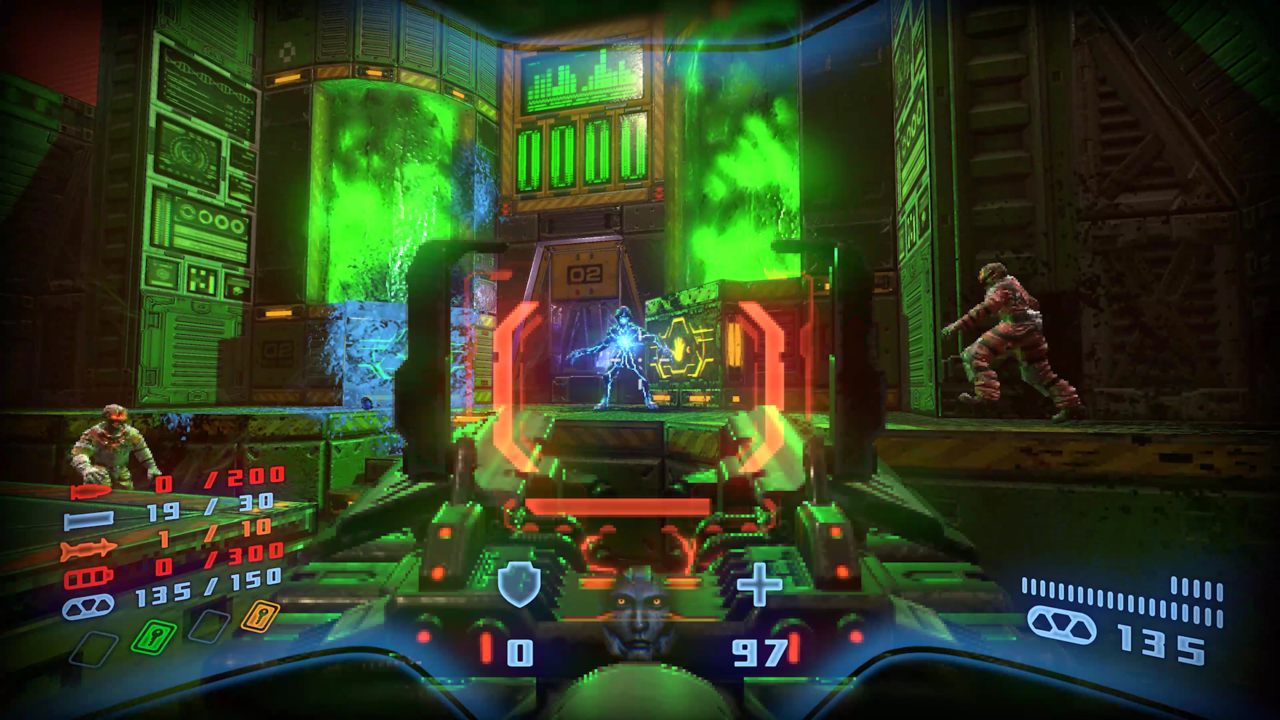
Prodeus employs a modern game engine to extend the experience of classic shooters with visuals such as dynamic lighting and particle effects, interactive levels, a gore system, and a dynamic soundtrack. Though the game may be played entirely with modern visuals, it allows the player to apply shaders that give the game a pixelated look, simulating resolutions down to 360p or even 216p. The game also has the option to dynamically convert enemy and item models to sprites, further simulating a retro experience.
Here’s where you can play the game:
The Pathless
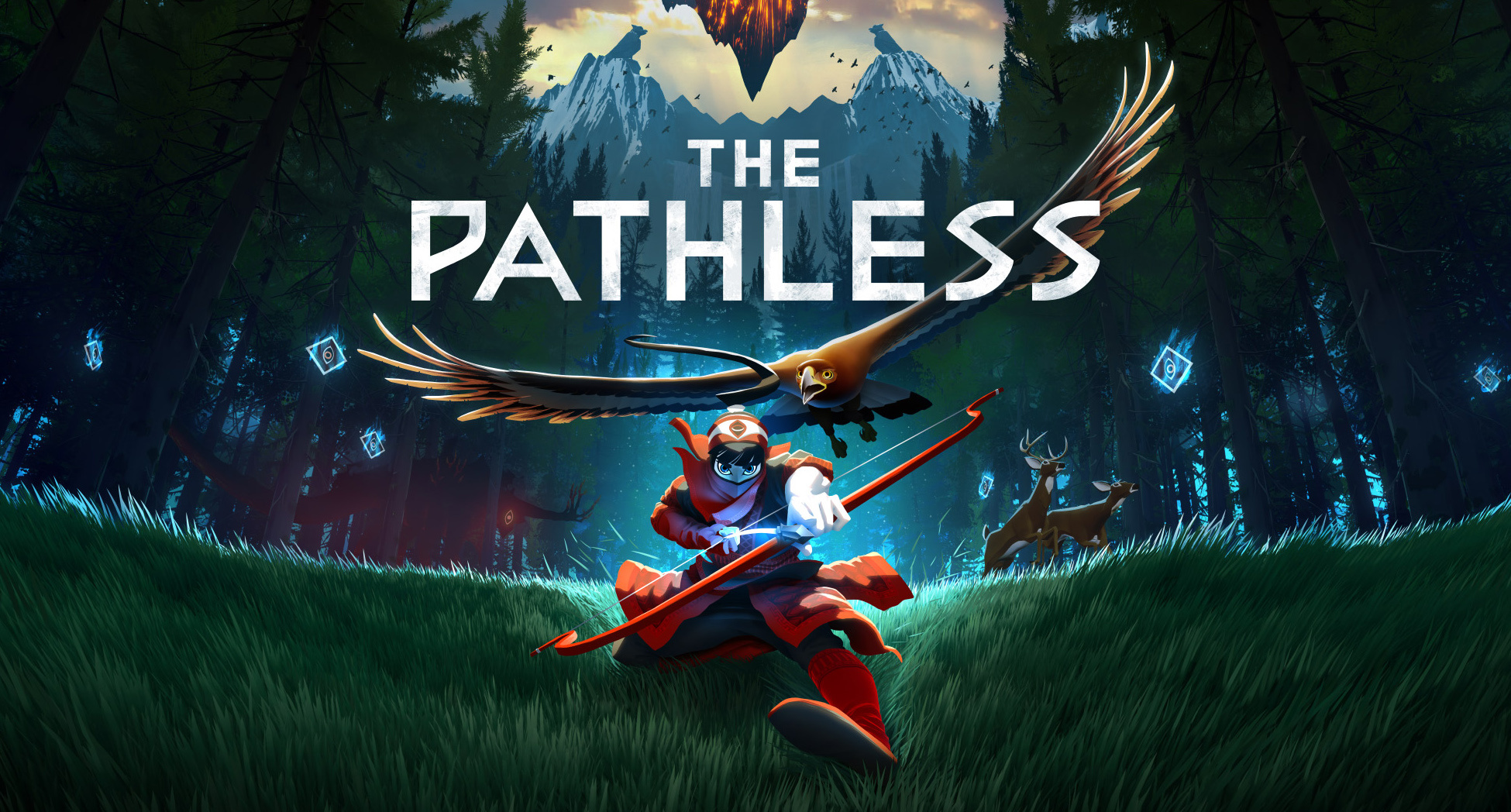
The Pathless enables you to take on the role of a gifted archer-hunter who develops a bond with an eagle throughout the adventure. Offering amazing graphics and visuals, the game’s setting takes place within a vast forest. The game presents its players with a perfect balance of puzzle-solving, exploration, and combat.
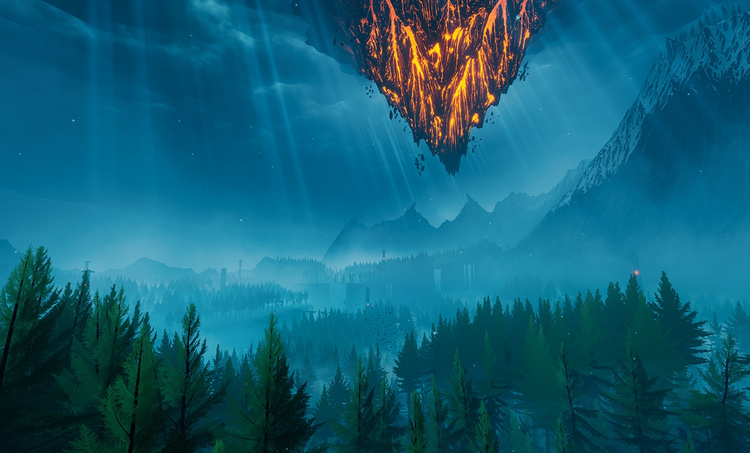
In the game, the player controls the Hunter, who is on a quest to lift a curse from the island. The Hunter is a master archer, who uses a bow to shoot talismans scattered across the world. The Hunter is also accompanied by an eagle companion, which can carry the player while flying. The eagle loses altitude while carrying the Hunter, though it can gain altitude through flapping its wings.
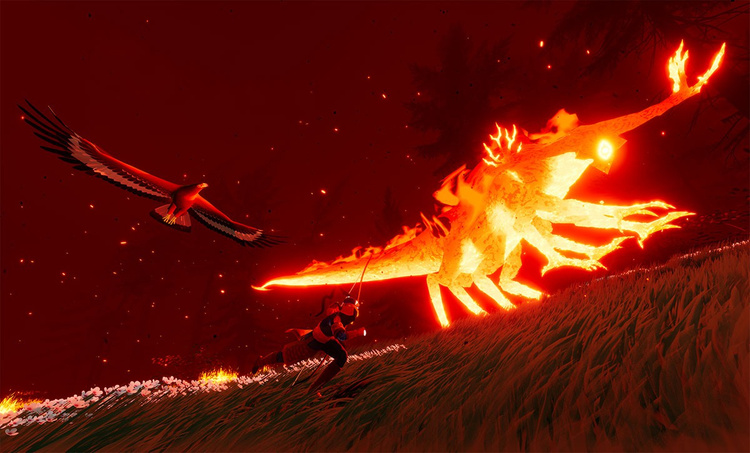
Unlike other open-world games, this game doesn’t feature a mini-map. Players need to use “spirit vision” to spot locations of interest. Players collect crystals while exploring the game’s world which is used to upgrade the eagle’s abilities. Throughout the player’s journey as a hunter, they’re haunted by invincible cursed spirits that attempt to separate the eagle from them.
Find the game here:
Honorable Indie Mentions
The three games mentioned above no way represent all the wonderful titles that came out in November 2020. Here are some more fascinating indie gems released this month, be sure to check them out!
- Kingdoms Reborn — Steam | Google Play | Official Website
- Figment — Steam | Official Website | Playstation
- Tetris Effect Connected — Xbox | Microsoft | Official Website
- Mars Horizon — Steam | Nintendo | Steam
- The Falconeer — Steam | Xbox | Official Website
Do you have a game?
Each month we try to find 3 indie games that can serve as an inspiration to game makers. If you’re an indie developer building games, we’d love to hear about it and possibly feature you. Contact us and let us know! Perhaps Beamable can also help you build your game faster with live game features, content management for LiveOps, and even a server-less game option! Check us out today!
Oh and, if you think we missed a game or two, the comment box is open!

Beamable Joins AWS ISV Accelerate Program
Check out the official press release here
Beamable, a creator-centric platform for building live games in Unity, is proud to announce it has joined the Amazon Web Services (AWS) Independent Software Vendor (ISV) Accelerate Program, a co-sell program for AWS Partners that provide software solutions running on or integrating with AWS.
“Our purpose is to radically democratize game development,” said Jon Radoff, CEO of Beamable. “As part of the AWS ISV Accelerate Program, we can help developers cut through the complexity of live game services, and economically bring sustainable products to market. This is an important validation for Beamable to help game studios accelerate their roadmaps.”
To qualify for the AWS ISV Accelerate Program, Beamable had to pass a rigorous sales and technical review of their platform, capabilities, and process. Game studios that select Beamable can be confident that they will receive the full support of the AWS sales and support teams to achieve rapid implementation and a successful outcome for their game project.
Acceptance into the AWS ISV Accelerate Program comes on the heels of Beamable’s prior completion of an AWS Marketplace listing to streamline the implementation and billing for new and existing AWS Game Tech customers.
For more information about Beamable on AWS, visit the AWS Marketplace listing at: https://aws.amazon.com/marketplace/pp/B08G3LTQW3?qid=1600440098979
About Beamable
Beamable fights for the game makers of the world by helping them turn their game ideas into thriving businesses with a low-code Live Game platform. Beamable enables anyone who builds, updates, and maintains a live game to save time and earn more money. Beamable is based in the Boston area, and led by a team of game-industry and enterprise-technology veterans, and backed by investors including Companyon Ventures and GrandBanks Capital.
For more information visit, https://beamable.com.

Social Features in Gaming
Seasoned game developers know that live games are some of the most difficult to develop. Live games depend on complex, extensive infrastructure to power them and require a lot of time and hard work to develop.
Your live game infrastructure generally needs to support four things:
- Backend-as-a-Service (BaaS)
- Item economy
- Content management
- Social gameplay features
Your game’s backend allows players to play together, communicate with one another, compare items, exchange items, interact with one another and with items, cooperate, and coordinate their actions. An item economy allows players to acquire new objects as well as buy, sell, shop, gift, and possibly trade using both game items and currencies. These actions, called content, are critical for game playability, but live games add an additional layer of complexity because all of these actions need to be managed in real-time.
In video-game design, developing each element individually is both time-consuming and resource-burning. Leveraging pre-existing elements and a fully managed infrastructure can save you both time and money by ensuring you don’t need to reinvent the wheel. By utilizing a BaaS option, it can be possible to save as much as 20% of the costs of developing your game.
One option is Beamable. With it, you can dramatically decrease the amount of time it takes to go live and reduce the amount of money, people-power, and other resources it takes to get you there.
Why Social Features Are Important
Integrating social features into your game is important because:
- Activity feeds allow the players to feel connected to their peers in real-time.
- In-game chats allow players to express themselves while keeping up to date on what other players are currently doing.
- They help create a sense of community, with competitive play encouraging players to return frequently, increasing retention, the number of daily active users, and the amount of revenue they generate for you over time.
- Social features streamline the viral marketability of your game, which improves its recovery rate.
- The interactive community social features foster help develop a compelling human element, which works in tandem with beautiful graphics and a frictionless gaming experience to create a solid and enjoyable game.
How Beamable Helps You Make Live Games Faster
Beamable can help reduce the amount of time and money your team needs to invest in developing the infrastructure for your live game and integrates tightly with the workflow you are already familiar with as a Unity developer.
Instead of spending countless hours coding the apparatuses necessary for gamers to communicate with each other from scratch, Beamable’s toolbox enables developers to add this key functionality through drag and drop prefabs. This reduces the amount of time and effort required to add social features, freeing developers up for other tasks while reducing overall development time.
Through Beamable’s Unity SDK, developers can simplify live game server programming with Beamable’s C# microservices. Since both the client and server backend are displayed using one language, you and your team don’t need to spend time learning other languages.
Beamable also offers a user-friendly portal that allows you to manage your game’s content easily. This portal comes with a Google Sheets plug-in that allows you to render all of your content via spreadsheets, allowing you to easily deploy your content in your server environment.
Beamable Is Simplifying The Mobile Game Development Experience
The social elements involved with a game’s architecture and item economy, as well as the content management, are critical for designing a good, revenue-generating game. However, developing these elements from scratch is both extremely difficult and needlessly time-consuming.
Beamable helps you to develop games faster while reducing costs by allowing you to simplify your infrastructure by allowing you to build on existing elements. By combining these revolutionary features, you can build or expand upon your loyal fanbase, achieve your development goals, and increase your revenue. For more information, or to get started adding social features to your game, please visit our website.

Replace your Game Server with Beamable C# Microservices
If you are building games in Unity, chances are you are working largely on the game client. This is the portion of the software that lives on the mobile device, PC, or console, and provides instructions to the game engine about how the game looks, how the features work, and how the player interacts.
If you plan to build any functionality that requires the game to talk across clients to multiple players, or for players to share data and interactions, you are going to need a game server. Typically this means building a separate piece of software that your game client talks to via APIs. As a game maker, this might mean learning a new server programming language, as well as learning API communication and creation, automation, and management of server infrastructure.
Why would you need a game server? Here’s a simple example: Loot Boxes.
Imagine an in-game treasure chest (“loot box”) containing a random prize for the player. The player is offered the loot box as a reward for progress in the game, opens the box, and receives the prize.
Client-Authoritative Example
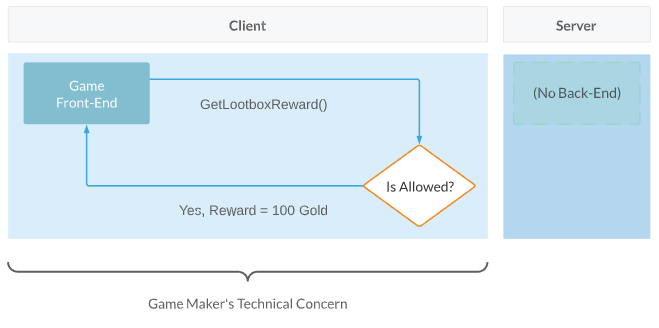
In a simple game with little or no backend technology, the prize is offered, validated, and rewarded on the client side. This is straightforward to code but is relatively insecure to any malicious hackers in the gaming community. If your game is single-player, this might be OK, but if players are playing together or competing with progress displayed on leaderboards, a single cheater can destroy trust with players.
To get around this, functionality that involves rewarding players is moved to a game server with authority over who gets what and how. With the server acting as the authority, the prize is offered, validated, and rewarded on the server-side. This is less straightforward to code but is the best practice and relatively secure against any malicious hackers in the gaming community. Because of this, the benefits of a server-authoritative architecture are great.
Server-Authoritative Example
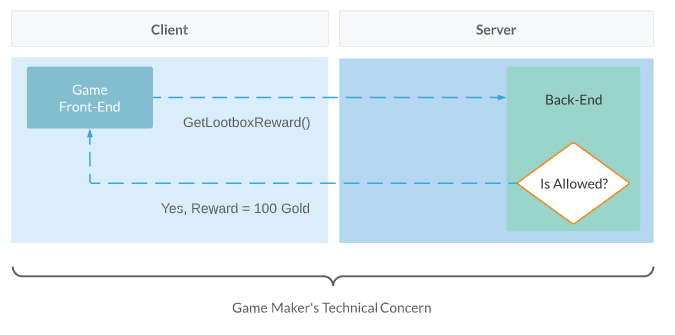
To set this up, a development team could write a custom backend server setup, but that would take considerable time and effort, even for experienced teams. Not to mention, the team would need to manage and scale the game server with developer operations (DevOps) experience as the game becomes more popular. Because of the highly specialized skills required to build and operate game servers, Beamable has created C# Microservices to make this entire process really simple for Unity game makers.
Imagine the same loot box example but with the game, logic moved to the server as a Beamable Microservice. The prize is offered, validated, and rewarded on the server-side as a Microservice. The Microservice code sits in your Unity project alongside your client-side code and is written in the familiar and powerful C# language. It is straightforward to code, easy to step through and debug, and is secure against any malicious hackers in the gaming community.
Beamable Microservices Example
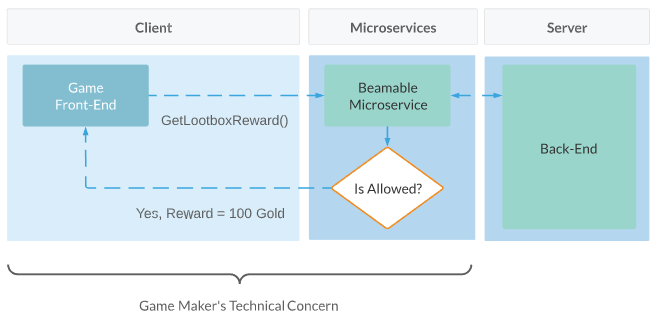
As a Beamable Microservice, your custom game logic receives many benefits:
- Highly maintainable & testable
- Loosely coupled
- Independently deployable
- All your code lives in one place — shared between client and server
- Works in your development environment for easy debugging
- Microservice code is checked in alongside your client code to version control
With Beamable Microservices, programming a server-authoritative feature feels like a natural extension of your favorite client-side tools and workflows.
We are proud to announce the initial release of Beamable Microservices. To get started, check out our documentation and give our sample Boss Battle example a try!
First, go and sign up for a free Beamable developer account at: https://beamable.com/free
Then, download the awesome Boss Battle project sample for Microservices here: https://docs.beamable.com/docs/microservices-sample-project
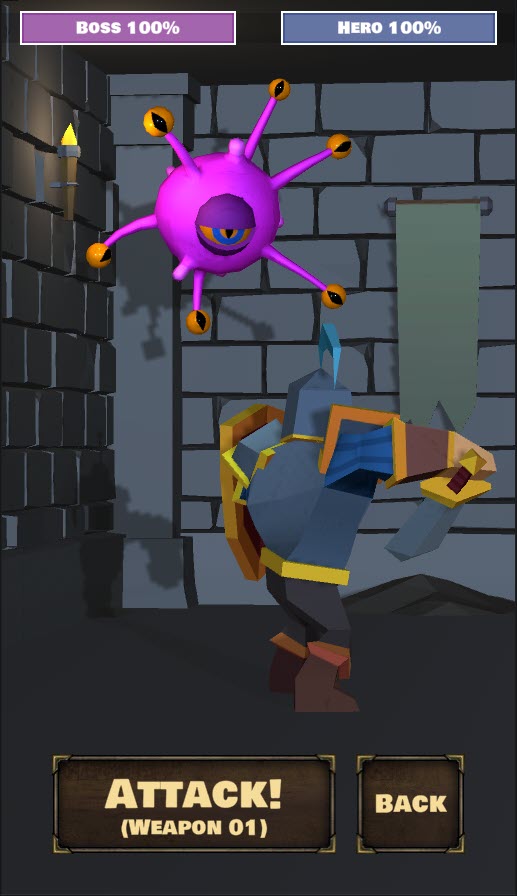
Additional Microservices documentation is here:
https://docs.beamable.com/docs/microservices
Give it a try and let us know what you think! We’d highly appreciate your feedback on this. What works? What doesn’t? What can be improved? Thanks!

Want to Add Multiplayer to Your Game? Beamable Makes It Easier than Ever
Multiplayer Basics
Multiplayer is a huge design space that covers a variety of real-time multiplayer and asynchronous multiplayer styles. The primary multiplayer models are:
- Play Together: This style involves players collaborating with or competing against each other in real-time.
- Play Alone Together: This style sees players primarily experience the world and its challenges alone but allows players to see and occasionally interact with other players during their journey.
- Hybrid: This style combines elements from both the Play Together and Play Alone Together models, allowing players to learn from the Play Alone Together model by observing other players and may incorporate guild play, an element of the Play Together model.
Common Misconceptions About Multiplayer Gameplay
Multiplayer doesn’t always mean massive, coordinated activities on the scale of games such as Epic Game’s Fortnite. Some games are better suited to the Play Alone Together model, which could be configured to allow players to communicate amongst themselves and learn from sharing information and observing each other’s actions without explicitly depending on one another to complete tasks or achieve goals.
The Play Alone Together style of multiplayer gameplay is ideal for fostering an environment of game enrichment via social interactions without dependency.
Why Developers Should Consider Adding Multiplayer to Their Games
Monetization
The more social structure of multiplayer games creates environments ripe for the maximization of IAPs and revenue. In cooperative settings, players are driven to purchase IAPs to better aid their teammates so the group can achieve their collective goals, while competitive multiplayer environments encourage players to invest in IAPs that give them an edge over the competition.
Gain & Maintain Gamer Attention
Engagement, attention, and retention are critical for creating a successful game that keeps players coming back for more. The attention phase is the most easily monetized, and a simple way to increase revenues is via social events. Social events are a highly effective way to draw player attention to your games, setting the stage for retention.
Including multiplayer is one of the best ways developers can gain and maintain player attention.
COVID-19 Drives Demand for Games with Multiplayer
While the trend towards events and complex economies1 emerged before COVID-19, the pandemic has come to both define these dynamics and rapidly accelerate their mainstream adoption.
This accelerated demand and adoption is driven by humanity’s basic social need to connect with others, prompting players to seek out social outlets currently lacking in their lives. Games, in particular those that offer multiplayer and live events, have, for many individuals, filled the social niche previously occupied by in-person activities.
We predict that these trends will continue post-vaccination when in-person socialization is once again safe, but this warp-speed acceleration will likely slow at least a little bit. However, by developing games that promote online sociability now, developers can help players develop habits of enjoyment that will persist once COVID-19 has subsided.
By laying the groundwork now when many players are stuck at home, developers can best capitalize on highly monetizable structured events, making these activities a permanent part of gamers’ social lives.
Factors to Consider When Adding Multiplayer
Events are an excellent way to create a social environment, thereby driving both attention and IAPs. While some developers may seek to create complex multiplayer dynamics, adding multiplayer can be as simple as getting players to participate in activities simultaneously.
This sociability can take a few forms, including:
- Comparing themselves against other players. This could include directly competitive behaviors such as leaderboards or more subtle social behaviors such as conspicuous consumption.
- Cooperative play, where players must work together to complete tasks or achieve their goals.
Events may involve reward structures or progression mechanics (complete a task or set of tasks to earn rewards) but do not have to. You may choose to forgo a competitive style of play in favor of a more cooperative model, where players must help one another to achieve their goals or structure your gameplay as individual challenges.
Depending on the nature of your event, you may consider enabling individual play and direct competition simultaneously.
Common Problems Developers Make & How to Avoid Them
As game development experts, the most common mistakes we have observed developers making while implementing multiplayer are:
- Underestimating the amount of time, funds, and people-power required to build multiplayer from scratch. Building multiplayer from scratch is incredibly difficult and requires hundreds of thousands or even millions of dollars, and takes a huge toll on DevOps. Even if you are able to successfully implement multiplayer functionality from scratch, the massive ongoing institutional costs, including funds, time, and resources, rarely make the payoff worth the effort.
- Underestimating the ongoing costs as well as the TCO (total cost of ownership). On average, the cost of maintaining the servers required to support multiplayer accounts for about 20% of a game’s total revenue. In contrast, Beamable is free for development and requires developers to share just 5% of their IAPs revenue to cover the costs of our fully managed servers. Should you wish to purchase your own dedicated server to host your game, you may also wish to explore Thunderhead (by Playfab), Mirror Networking, and Photon.
- Underestimating the complexity of building social features from the ground up. Like multiplayer, creating your own social features from scratch is not only time, resource, and people-power intensive, but also wholly unnecessary. Beamable offers a wide range of social features that can facilitate player-to-player interactions without decimating your bottom line.
By choosing to build your game with Beamable instead of developing multiplayer and social from scratch, you can avoid having to overoptimize your game’s monetization features to recoup your costs and instead focus on boosting player engagement, attention, and retention.
To begin adding multiplayer to your game, download Beamable for Unity today.

Beamable joins forces with Amazon Web Services and Game Jolt for Party Jam!
A huge game jam opportunity is coming up sponsored by Amazon Web Services, Game Jolt, and Beamable! It’s called Party Jam! Learn more on our website or head over to the official Party Jam community on Game Jolt to learn more!
Jam participants will sign up to create a social, multiplayer game in 10 days to win cash prizes, a chance to play your game with a Twitch Streamer on the homepage of Twitch.tv! Winners will also get the chance to pitch their game to the biggest publishers and investors in the world!
Jam Starts: Monday, June 21st, 2021 at 12AM (Pacific Time)
Jam Ends: Thursday, July 1st, 2021 at 11:59PM (Pacific Time)
All participants of Party Jam can use Beamable to rapidly add multiplayer, social, and even commerce features to your game. Beamable runs on AWS so you’ll get bulletproof scalability no matter how successful your game becomes!
For more information about Beamable, we are hosting a Beamable QA channel during the jam. Head over there and learn more!
We are excited to see what you will create!

Beyond Game Design: Common Mistakes Game Developers Make (& How to Avoid Them)
We’ve already discussed game development mistakes that developers should avoid at all costs in a previous article. However, our team of game development experts has noticed some other common, recurring mistakes that, while seemingly insignificant at first glance, could seriously impact your game’s ability to attract and retain players and become profitable.
To help you create the best game possible, here are four common mistakes we’ve seen game developers make and steps you can take to avoid them.
4 Common Mistakes (& How to Avoid Them)
Underestimating Your Ongoing Support Costs
New game developers are often shocked to find how much it costs to maintain and support a game. All games require ongoing support in one form or another, and underestimating this burden (including the amount of time required, the number of developers required, and how much it will cost to pay those developers and cover other related expenses) can quickly impact your bottom line.
We sat down with our CEO Jon Radoff to discuss this common issue, and he said the average game re-invests about 20% of its game revenue into supporting game operations. As such, we strongly suggest that all game development teams either:
- Earmark at least 20% of their revenue to support these ongoing expenses and ensure their team has enough people to support both new and ongoing development tasks
- Outsource this work to a trusted partner so your team can focus on other, less routine development tasks
Outsourcing has the added benefit of freeing up development resources to focus on the art of gameplay, which most engineers prefer.
You can estimate how much money your game is likely to earn using the Beamable game revenue predictor.
Underestimating How Much Time & Resources it Takes to Build Social Features from Scratch
Even before COVID-19 made social features indispensable, many game developers sought to add functionality to their games to support and encourage player socialization. However, many developers are often surprised to find how much time, effort, and funds are required to build social features from scratch. Adding these features starts off simply enough with a friend list or leaderboard, but add in guild play or any form of event, and suddenly seemingly simple features impact the ability to work on other features, which could delay your release date.
Fortunately, tools to support the inclusion of social features are rapidly improving. For example, Beamable offers a wide selection of easy to integrate pre-fabs, including:
- Friend lists
- Groups, teams, and guilds
- Leaderboards
- Events
- Tournaments
As such, developers looking to free up resources and/or reduce costs have very good build versus buy alternatives for social features.
Waiting Too Long to Integrate Acquisition & Retention Strategies
A game is only profitable if you can recruit and retain players at scale, but too many game developers fail to consider or integrate comprehensive acquisition and retention strategies into their overarching game plans until the later stages of the development process.
While the “build it and they will come” approach to player acquisition and retention may have worked in the very early days of mobile gaming, there are now approximately 980,000 games in Apple’s app store. As such, game developers that wish to effectively reach potential players, build a loyal fan base, and monetize their games need to seriously consider how they will do so early on in development.
Prioritizing Monetization Over Engagement
In the highly competitive mobile game industry, many game developers make the mistake of over-optimizing their monetization features at the expense of player engagement, attention, and retention. Your monetization strategy needs to seamlessly integrate into your game and follow player focus instead of demanding it. This more subtle approach means that players are more likely to make IAPs (in-app purchases) and less likely to feel like a game is prioritizing monetization over player experience.
Increasingly successful game developers are choosing to partner with companies like Beamable that offer commerce as a service. This approach allows your game studio to offload more routine tasks such as in-app purchasing and inventory management, freeing up your top development talent so they can focus on creating compelling game content and best support long-term gameplay and company goals.
Trusted partners also have extensive experience monetizing games effectively without taking a heavy-handed approach, promoting seamless commerce integration. Beamable’s commerce functionality allows you to create offers that involve real-money transactions as well as virtual currency purchases. It can be configured to support limited time offers, as well as maximum purchase limits and cool-downs to support responsible gameplay.
How Can Beamable Help?
As noted in this article, Beamable can help game studios by offloading many dull and taxing tasks such as monetization, developing social features, and ongoing game support to an experienced external team. This partnership allows your internal development team to focus on the exciting tasks that support the creation of compelling game content that make your game unique, exciting, and fun to play.
Beamable game economy features include
- Unity editor support: powerful prefabs, skinnable UI, content management, powerful and min tools, and C# microservices.
- Identity management: login UI and accounts, third-party logins, player admin portal, and cloud storage.
- Social features: friend lists, groups (including guilds and teams), leaderboards, events, and tournaments.
- Economic features: Commerce, payments, inventory, and calendars.
- Messaging features: chat, in-game mail, push notifications, and news and announcements.
- Multiplayer: Relay server, matchmaking, and deterministic multiplayer
- Analytics: Game analytics, A/B trials, game history, player stats and segmentation, and event forwarding.
Ready to try Beamable for yourself? Download Beamable for Unity today!
